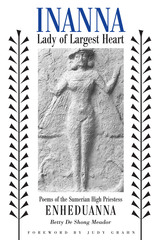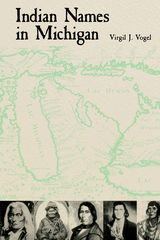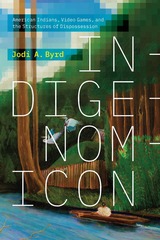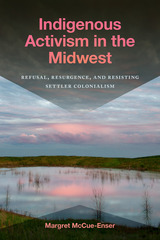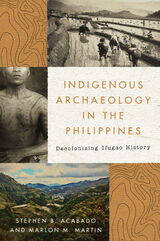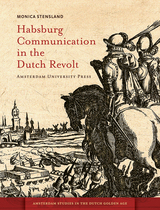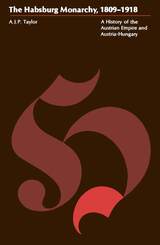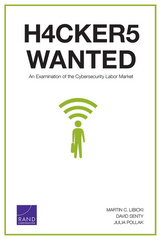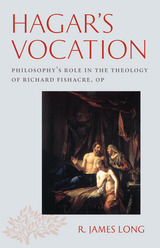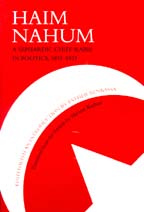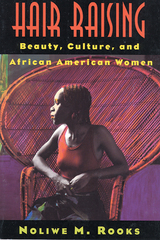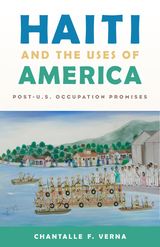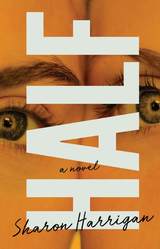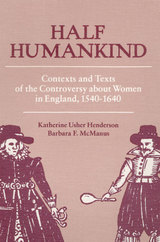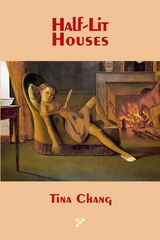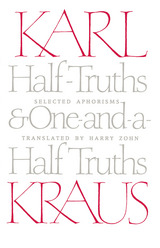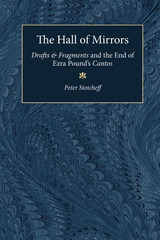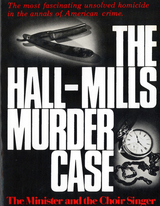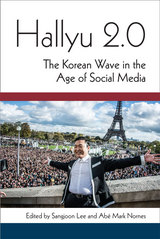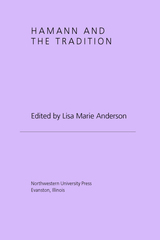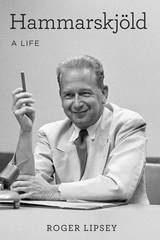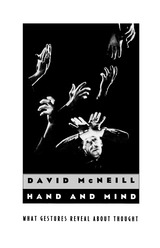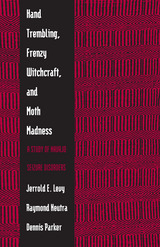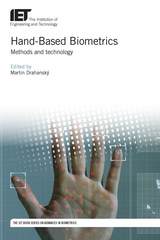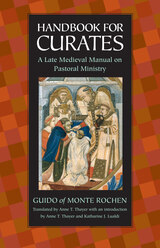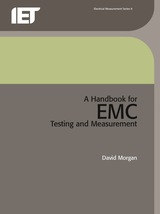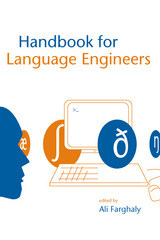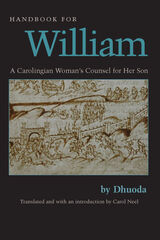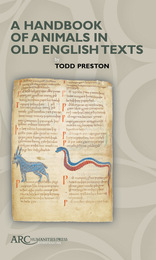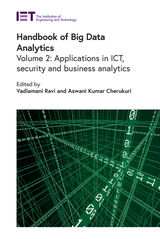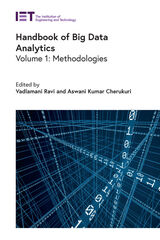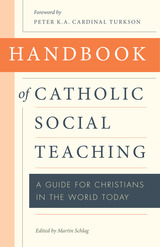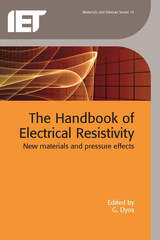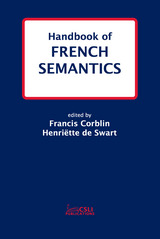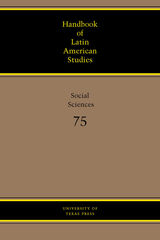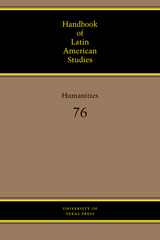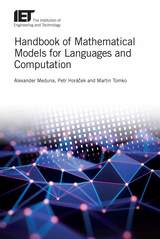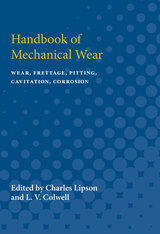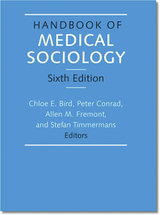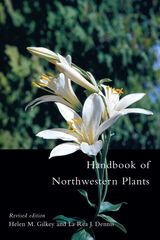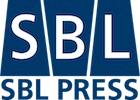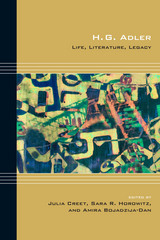 H. G. Adler: Life, Literature, Legacy
Edited by Julia Creet, Sara R. Horowitz, and Amira Bojadzija-Dan
Northwestern University Press, 2016 Winner, 2016 Canadian Jewish Literary Award in the Jewish Thought and Culture category
H. G. Adler: Life, Literature, Legacy is the first collection of essays in English dedicated to the life and work of German-language author H. G. Adler. Among the international scholars of German, Jewish, and Holocaust literature and history who reveal the range of Adler’s legacy across genres are Adler’s son, Jeremy Adler, and Peter Filkins, translator of Adler’s trilogy, Panorama, (The Journey). Together, the essays examine Adler’s writing in relation to his life, especially his memory as a survivor of the Nazi death camps and his posthumous recognition for having produced a Gesamtkunstwerk, an aesthetic synthesis of the Shoah. The book carries the moral charge of Adler’s work, moving beyond testimony to a complex dialectic between fact and fiction, exploring Adler’s experiments with voice and the ethical work of literary engagement with the Shoah.
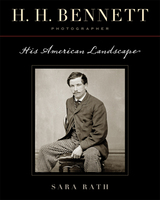 H. H. Bennett, Photographer: His American Landscape
Sara Rath
University of Wisconsin Press, 2010 "My energies for near a lifetime have been used almost entirely to win such prominence as I could in outdoor photography."—H. H. Bennett Henry Hamilton Bennett (1843–1908) became a celebrated photographer in the half-century following the American Civil War. Bennett is admired for his superb depictions of dramatic landscapes of the Dells of the Wisconsin River and also for his many technical innovations in photography, including a stop-action shutter and a revolving solar printing house that is now housed at the Smithsonian Institution. With his instantaneous shutter, he gained recognition for his striking images of moving subjects, such as lumber raftsmen shooting the river rapids and his son Ashley leaping in midair from a bluff to the craggy pillar of Stand Rock. Less well-known are Bennett’s splendid urban photographs of nineteenth-century Chicago, Milwaukee, and St. Paul.
This engaging biography of H. H. Bennett tells his life story, illustrated throughout with his remarkable photographs, some of them rarely viewed before. It draws on the photographer’s own letters and journals, along with other family documents, to portray the sweep of his career and personal life. An important figure in the history of photography, he also contributed to the growth of American tourism: his nationally distributed stereoscopic views of Dells rock formations and his portraits of local Ho-Chunk Indians played a significant role in creating the Wisconsin Dells as the popular tourist destination it is today. Despite personal challenges—a crippling Civil War injury, the death of his first wife, and continual financial worries—Bennett produced an extensive portfolio that captures the midwestern culture of his time. He accepted commissions in the 1890s to document Chicago’s modern skyscrapers, grand residences of Milwaukee’s entrepreneurs and sailing ships in its harbor, enormous scenic panoramas along the routes of Wisconsin railroads, and sparkling ice palaces lit by fireworks at the St. Paul Winter Carnival. Finalist, Midwest Regional Interest, Midwest Book Awards
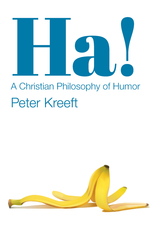 Ha!: A Christian Philosophy of Humor
Peter Kreeft
St. Augustine's Press, 2022 "This book almost didn't exist. I was about to write a serious, heavy book entitled How To Save Western Civilization, as a sequel to my book How To Destroy Western Civilization and Other Ideas from the Cultural Abyss. But writing it was not making me happy, and reading it was not going to make anybody else happy either. And then I stopped just long enough for my guardian angel to squeeze through that tiny window of opportunity that I had opened up by my silence and to whisper this commonsense question into my subconscious: "Why not make them happy instead?" (Angels specialize in common sense.)
I started thinking: Western civilization is neither healthy, happy, nor holy. Humor is all three. Humor is not only holy, it's Heavenly. And if you are surprised to be told that humor is Heavenly, you need to read this book because you reveal your misunderstanding of both humor and Heaven. If you ask, 'Is there laughter in Heaven?' my answer is: 'You can't be serious!'"
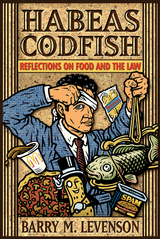 Habeas Codfish: Reflections on Food and the Law
Barry M. Levenson
University of Wisconsin Press, 2001 From the McDonald’s hot coffee case to the cattle ranchers’ beef with Oprah Winfrey, from the old English "Assize of Bread" to current nutrition labeling laws, what we eat and how we eat are shaped as much by legal regulations as by personal taste. Barry M. Levenson, the curator of the world-famous (really!) Mount Horeb Mustard Museum and a self-proclaimed "recovering lawyer," offers in Habeas Codfish an entertaining and expert overview of the frustrating, frightening, and funny intersections of food and the law.
Discover how Mr. Peanut shaped the law of trademark infringement for the entire food industry. Consider the plight of the restaurant owner besmirched by a journalist’s negative review. Find out how traditional Jewish laws of kashrut ran afoul of the First Amendment. Prison meals, butter vs. margarine, definitions of organic food, undercover ABC reporters at the Food Lion, the Massachusetts Supreme Court case that saved fish chowder, even recipes—it’s all in here, so tuck in!
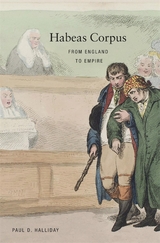 Habeas Corpus: From England to Empire
Paul D. Halliday
Harvard University Press, 2012 We call habeas corpus the Great Writ of Liberty. But it was actually a writ of power. In a work based on an unprecedented study of thousands of cases across more than five hundred years, Paul Halliday provides a sweeping revisionist account of the world’s most revered legal device.
In the decades around 1600, English judges used ideas about royal power to empower themselves to protect the king’s subjects. The key was not the prisoner’s “right” to “liberty”—these are modern idioms—but the possible wrongs committed by a jailer or anyone who ordered a prisoner detained. This focus on wrongs gave the writ the force necessary to protect ideas about rights as they developed outside of law. This judicial power carried the writ across the world, from Quebec to Bengal. Paradoxically, the representative impulse, most often expressed through legislative action, did more to undermine the writ than anything else. And the need to control imperial subjects would increasingly constrain judges. The imperial experience is thus crucial for making sense of the broader sweep of the writ’s history and of English law.
Halliday’s work informed the 2008 U.S. Supreme Court ruling in Boumediene v. Bush on prisoners in the Guantánamo detention camps. His eagerly anticipated book is certain to be acclaimed the definitive history of habeas corpus.
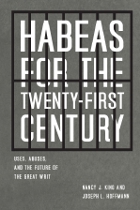 Habeas for the Twenty-First Century: Uses, Abuses, and the Future of the Great Writ
Nancy J. King and Joseph L. Hoffmann
University of Chicago Press, 2011 For centuries, the writ of habeas corpus has served as an important safeguard against miscarriages of justice, and today it remains at the center of some of the most contentious issues of our time—among them terrorism, immigration, crime, and the death penalty. Yet, in recent decades, habeas has been seriously abused. In this book, Nancy J. King and Joseph L. Hoffmann argue that habeas should be exercised with greater prudence.
Through historical, empirical, and legal analysis, as well as illustrative case studies, the authors examine the current use of the writ in the United States and offer sound reform proposals to help ensure its ongoing vitality in today’s justice system. Comprehensive and thoroughly grounded in a modern understanding of habeas corpus, this informative book will be an insightful read for legal scholars and anyone interested in the importance of habeas corpus for American government.
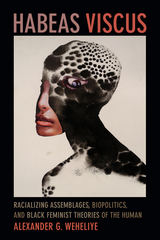 Habeas Viscus: Racializing Assemblages, Biopolitics, and Black Feminist Theories of the Human
Alexander G. Weheliye
Duke University Press, 2014 Habeas Viscus focuses attention on the centrality of race to notions of the human. Alexander G. Weheliye develops a theory of "racializing assemblages," taking race as a set of sociopolitical processes that discipline humanity into full humans, not-quite-humans, and nonhumans. This disciplining, while not biological per se, frequently depends on anchoring political hierarchies in human flesh. The work of the black feminist scholars Hortense Spillers and Sylvia Wynter is vital to Weheliye's argument. Particularly significant are their contributions to the intellectual project of black studies vis-à-vis racialization and the category of the human in western modernity. Wynter and Spillers configure black studies as an endeavor to disrupt the governing conception of humanity as synonymous with white, western man. Weheliye posits black feminist theories of modern humanity as useful correctives to the "bare life and biopolitics discourse" exemplified by the works of Giorgio Agamben and Michel Foucault, which, Weheliye contends, vastly underestimate the conceptual and political significance of race in constructions of the human. Habeas Viscus reveals the pressing need to make the insights of black studies and black feminism foundational to the study of modern humanity.
 Habib Tanvir and His Legacy in Theatre: A Centennial Reappraisal
Edited by Anjum Katyal and Javed Malick
Seagull Books, 2024 Essays exploring the lasting impact of Habib Tanvir's pioneering theatre which blended tradition with modernity in the post-Independence Indian theatre scene.
This collection of essays delves into the profound legacy of Habib Tanvir (1923–2009), a luminary in the post-Independence Indian theater scene. Tanvir's decades-long contributions as a director, poet, playwright, and actor are explored by a diverse group of scholars, practitioners, and peers. The book examines his pivotal role in founding the Naya Theatre in 1959, a pioneering group blending rural traditions with contemporary theatre, challenging conventional norms.
Against the backdrop of contemporary societal and political shifts, the essays reflect on Tanvir's fearless resistance against the right wing in his later years, particularly his challenges to religious dogma and caste discrimination in works like Ponga Pandit. The collection also emphasizes the enduring impact of Tanvir's seminal work, Charandas Chor, highlighting its adaptability across varied cultural landscapes.
With international contributors, the book expands beyond national borders, showcasing Tanvir's impact on global theatre and cross-cultural collaborations. The essays in this volume assert Tanvir's continued relevance, positioning his ideals as a guiding force for India amid evolving cultural and political landscapes.
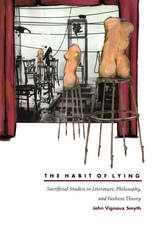 The Habit of Lying: Sacrificial Studies in Literature, Philosophy, and Fashion Theory
John Vignaux Smyth
Duke University Press, 2002 Lying appears to be ubiquitous, what Franz Kafka called "a universal principle”; yet, despite a number of recent books on the subject, it has been given comparatively little genuinely systematic attention by philosophers, social scientists, or even literary theorists. In The Habit of Lying John Vignaux Smyth examines three forms of falsification—lying, concealment, and fiction—and makes a strong critique of traditional approaches to each of them, and, above all, to the relations among them.
With recourse to Rene Girard, Paul de Man, Theodor Adorno, Leo Strauss, and other theoreticians not usually considered together, Smyth arrives at some surprising conclusions about the connections between lying, mimesis, sacrifice, sadomasochism, and the sacred, among other central subjects. Arguing that the relation between lying and truthtelling has been characterized in the West by sharply sacrificial features, he begins with a critique of the philosophies of lying espoused by Kant and Sissela Bok, then concludes that the problem of truth and lies leads to the further problem of the relation between law and arbitrariness as well as to the relation between rationality and unanimity. Constructively criticizing the work of such philosophers as Bertrand Russell, Ludwig Wittgenstein, Richard Rorty, and Nelson Goodman, Smyth shows how these problems occur comparably in fiction theory and how Paul de Man’s definition of fiction as arbitrariness finds confirmation in analytic philosophy. Through the novels of Defoe, Stendhal, and Beckett—with topics ranging from Defoe’s treatment of lies, fiction, and obscenity to Beckett’s treatment of the anus and the sacred—Smyth demonstrates how these texts generalize the issues of mendacity, concealment, and sacrificial arbitrariness in Girard’s sense to almost every aspect of experience, fiction theory, and cultural life. The final section of the book, taking its cue from Shakespeare, elaborates a sacrificial view of the history of fashion and dress concealment.
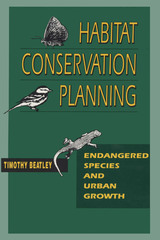 Habitat Conservation Planning: Endangered Species and Urban Growth
By Timothy Beatley
University of Texas Press, 1994 As environmental awareness grows around the world, people are learning that a diversity of species and the habitat to support them is necessary to maintain the ecological health of the earth. At the same time, however, the pressure to develop wildlife habitat for human settlement and economic gain also grows, causing frequent clashes between the forces of development and of conservation. This pioneering study focuses on a new tool for resolving the land-use conflict—the creation of habitat conservation plans (HCPs). Timothy Beatley explores the development and early results of this provision of the United States' federal Endangered Species Act, which allows development of some habitat and a certain "take" of a protected species in return for the conservation of sufficient habitat to ensure its survival and long-term recovery. Beatley looks specifically at nine HCPs in California, Nevada, Texas, and Florida, states where biological diversity and increasing populations have triggered many conflicts. Some of the HCPs include the San Bruno Mountain HCP near San Francisco, the North Key Largo HCP in the Florida Keys, the Clark County HCP near Las Vegas, Nevada, and the Balcones Canyonlands HCP near Austin, Texas. This first comprehensive overview of habitat conservation planning in the United States will be important reading for everyone involved in land-use debates.
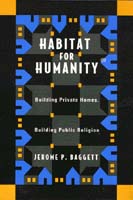 Habitat For Humanity: Building Private Homes, Building Public Religion
Jerome Baggett
Temple University Press, 2001 Habitat for Humanity®, a grassroots house-building ministry founded in 1976 by evangelical Christians, is one of the best-known and most widely popular nonprofit organizations in operation today. With approximately 1500 local Habitat affiliates in the United States and more than 85,000 homes primarily by mobilizing concerned citizens, who include about 250,000 American volunteers each year.
The author tells the story of Habitat's development and the special fervor it evokes among volunteers and those for whom it builds houses. Through interviews with staff, he also provides a look into the organizational dynamics of Habitat, a non-profit whose religious mission for social change is inevitably affected by the instrumental, bottom-line orientation of the state and the market.
Baggett argues that Habitat is an examine of a particular social form of religion, the paradenominational organization, that is uniquely adapted to the climate of the modern world. It is one of the vital forms that voluntarism takes today.
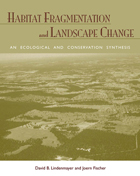 Habitat Fragmentation and Landscape Change: An Ecological and Conservation Synthesis
David B. Lindenmayer and Joern Fischer
Island Press, 2006 Habitat loss and degradation that comes as a result of human activity is the single biggest threat to biodiversity in the world today. Habitat Fragmentation and Landscape Change is a groundbreaking work that brings together a wealth of information from a wide range of sources to define the ecological problems caused by landscape change and to highlight the relationships among landscape change, habitat fragmentation, and biodiversity conservation. The book: - synthesizes a large body of information from the scientific literature
- considers key theoretical principles for examining and predicting effects
- examines the range of effects that can arise
- explores ways of mitigating impacts
- reviews approaches to studying the problem
- discusses knowledge gaps and future areas for research and management
Habitat Fragmentation and Landscape Change offers a unique mix of theoretical and practical information, outlining general principles and approaches and illustrating those principles with case studies from around the world. It represents a definitive overview and synthesis on the full range of topics that fall under the widely used but often vaguely defined term "habitat fragmentation."
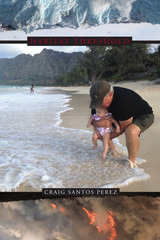 Habitat Threshold
Craig Santos Perez
Omnidawn, 2019 With Habitat Threshold, Craig Santos Perez has crafted a timely collection of eco-poetry that explores his ancestry as a native Pacific Islander, the ecological plight of his homeland, and his fears for the future. The book begins with the birth of the author’s daughter, capturing her growth and childlike awe at the wonders of nature. As it progresses, Perez confronts the impacts of environmental injustice, the ravages of global capitalism, toxic waste, animal extinction, water rights, human violence, mass migration, and climate change. Throughout, he mourns lost habitats and species, and confronts his fears for the future world his daughter will inherit. Amid meditations on calamity, this work does not stop at the threshold of elegy. Instead, the poet envisions a sustainable future in which our ethics are shaped by the indigenous belief that the earth is sacred and all beings are interconnected—a future in which we cultivate love and “carry each other towards the horizon of care.”
Through experimental forms, free verse, prose, haiku, sonnets, satire, and a method he calls “recycling,” Perez has created a diverse collection filled with passion. Habitat Threshold invites us to reflect on the damage done to our world and to look forward, with urgency and imagination, to the possibility of a better future.
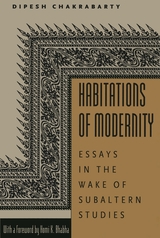 Habitations of Modernity: Essays in the Wake of Subaltern Studies
Dipesh Chakrabarty
University of Chicago Press, 2002 In Habitations of Modernity, Dipesh Chakrabarty explores the complexities of modernism in India and seeks principles of humaneness grounded in everyday life that may elude grand political theories. The questions that motivate Chakrabarty are shared by all postcolonial historians and anthropologists: How do we think about the legacy of the European Enlightenment in lands far from Europe in geography or history? How can we envision ways of being modern that speak to what is shared around the world, as well as to cultural diversity? How do we resist the tendency to justify the violence accompanying triumphalist moments of modernity?
Chakrabarty pursues these issues in a series of closely linked essays, ranging from a history of the influential Indian series Subaltern Studies to examinations of specific cultural practices in modern India, such as the use of khadi—Gandhian style of dress—by male politicians and the politics of civic consciousness in public spaces. He concludes with considerations of the ethical dilemmas that arise when one writes on behalf of social justice projects.
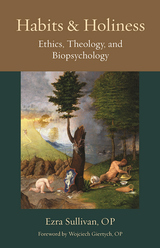 Habits and Holiness: Ethics, Theology, and Biopsychology
Ezra, OP Sullivan
Catholic University of America Press, 2021 The topic of habitus is one of Thomas Aquinas’s greatest contributions to moral theology, but it has been generally neglected in theological scholarship until now. Habits and Holiness is the first work in English to explore Aquinas’s rich theology of habit in all of its grandeur and depth. Habits and Holiness shows that most facets of human life and behavior are greatly influenced by habits, which Thomas appraises as an analogous concept that is much broader than previous scholarship has recognized.
Habits and Holiness accomplishes three tasks. First, it gives a complete and coherent account of Aquinas’s account of habitus. Most accounts of Aquinas’s view of habitus focus almost exclusively on “Treatise on Habits” in the Summa Theologiae I-II, qq. 49-54, and speak of habitus in reference to the virtues. However, Aquinas speaks of habitus in many other places, especially his commentaries on Aristotle’s works and his commentaries on Sacred Scripture. Aquinas employs the concept of habitus to explain a wide variety of human inclinations, such as instincts, personal and societal custom, acquired skills and virtues, original sin, grace, infused virtues, and Gifts of the Holy Spirit. Second, this book indicates how biological psychology illuminates and enriches Aquinas’s account of habit, and vice versa. Finally, Habits and Holiness provides readers with a framework for interpreting and utilizing the vast amount of practical habit literature that exists: it offers a practical analysis of habit development found in Aquinas’s works and those of empirical studies.
The topic of habits is a golden thread that helps readers find their way through Aquinas’s extensive writings on morals. By describing the many kinds of habits we possess, and their widespread but often hidden effects in our lives, this book offers a new and unique reevaluation of many issues central to the moral life. It addresses childhood development, pagan virtue, akrasia, circumstances that limit free choice, how heroic virtue operates, and more.
By seeing habits in general as a prism for understanding human action and its influences, Habits and Holiness provides a unique and appealing synthesis of Thomistic virtue theory, the contemporary science of habits, and best practices for eliminating bad habits and living good habits.
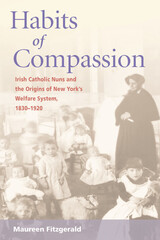 Habits of Compassion: Irish Catholic Nuns and the Origins of New York's Welfare System, 1830-1920
Maureen Fitzgerald
University of Illinois Press, 2006 The Irish-Catholic Sisters accomplished tremendously successful work in founding charitable organizations in New York City from the Irish famine through the early twentieth century. Maureen Fitzgerald argues that their championing of the rights of the poor—especially poor women—resulted in an explosion of state-supported services and programs. Parting from Protestant belief in meager and means-tested aid, Irish Catholic nuns argued for an approach based on compassion for the poor. Fitzgerald positions the nuns' activism as resistance to Protestantism's cultural hegemony. As she shows, Roman Catholic nuns offered strong and unequivocal moral leadership in condemning those who punished the poor for their poverty and unmarried women for sexual transgression. Fitzgerald also delves into the nuns' own communities, from the class-based hierarchies within the convents to the political power they wielded within the city. That power, amplified by an alliance with the local Irish Catholic political machine, allowed the women to expand public charities in the city on an unprecedented scale.
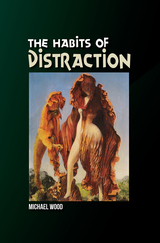 The Habits of Distraction
Michael Wood
Sussex Academic Press, 2022 The thoughts traced in this book may seem a little complicated but the project itself is simple. It is to see what sort of weight and extension Walter Benjamins phrase reception in distraction can be seen to bear in changing contexts. The book first looks at the theoretical contours of the phrase, and several of its relatives, in the work of Benjamin and Barthes, with a glance at a prehistory in Proust and others. It then closely considers some different objects of reception and different forms of distraction: in jazz, classical music, poetry, painting, art house film and popular film.The hope is that distraction in interpretation - listening, reading, viewing, watching - will come to seem less vague and regrettable, and may serve as a corrective to narrow, expert and over-explicit modes of response. But this hope itself depends on readers who will take what is shown here as an invitation to choose their own examples and explore some of these possibilities for themselves.
Habits of Hope: A Pragmatic Theory
Patrick Shade
Vanderbilt University Press, 2001 In this original contribution to the American philosophical tradition, Patrick Shade makes a strong argument for the necessity of hope in a cynical world that too often rejects it as foolish. While most accounts of hope situate it in a theological context, Shade presents a theory rooted in the pragmatic thought of such American philosophers as C. S. Peirce, William James, and John Dewey.
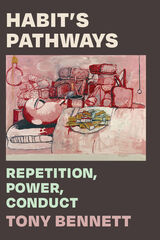 Habit's Pathways: Repetition, Power, Conduct
Tony Bennett
Duke University Press, 2023 Habit has long preoccupied a wide range of theologians, philosophers, sociologists, psychologists, and neuroscientists. In Habit’s Pathways Tony Bennett explores the political consequences of the varied ways in which habit’s repetitions have been acted on to guide or direct conduct. Bennett considers habit’s uses and effects across the monastic regimens of medieval Europe, in plantation slavery and the factory system, through colonial forms of rule, and within a range of medicalized pathologies. He brings these episodes in habit’s political histories to bear on contemporary debates ranging from its role in relation to the politics of white supremacy to the digital harvesting of habits in practices of algorithmic governance. Throughout, Bennett tracks how habit’s repetitions have been articulated differently across divisions of class, race, and gender, demonstrating that although habit serves as an apparatus for achieving success, self-fulfillment, and freedom for the powerful, it has simultaneously served as a means of control over women, racialized peoples, and subordinate classes.
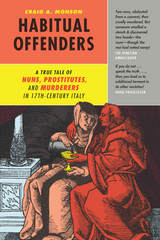 Habitual Offenders: A True Tale of Nuns, Prostitutes, and Murderers in Seventeenth-Century Italy
Craig A. Monson
University of Chicago Press, 2016 In April 1644, two nuns fled Bologna’s convent for reformed prostitutes. A perfunctory archiepiscopal investigation went nowhere, and the nuns were quickly forgotten. By June of the next year, however, an overwhelming stench drew a woman to the wine cellar of her Bolognese townhouse, reopened after a two-year absence—where to her horror she discovered the eerily intact, garroted corpses of the two missing women.
Drawing on over four thousand pages of primary sources, the intrepid Craig A. Monson reconstructs this fascinating history of crime and punishment in seventeenth-century Italy. Along the way, he explores Italy’s back streets and back stairs, giving us access to voices we rarely encounter in conventional histories: prostitutes and maidservants, mercenaries and bandits, along with other “dubious” figures negotiating the boundaries of polite society. Painstakingly researched and breathlessly told, Habitual Offenders will delight historians and true-crime fans alike.
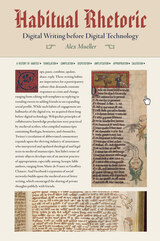 Habitual Rhetoric: Digital Writing Before Digital Technology
Alex Mueller
University of Pittsburgh Press, 2023 A Corrective to the Pervasive Belief that Digital Writing Practices are Entirely New
Writing has always been digital. Just as digits scribble with the quill or tap the typewriter, digits compose binary code and produce text on a screen. Over time, however, digital writing has come to be defined by numbers and chips, not fingers and parchment. We therefore assume that digital writing began with the invention of the computer and created new writing habits, such as copying, pasting, and sharing. Habitual Rhetoric: Digital Writing before Digital Technology makes the counterargument that these digital writing practices were established by the handwritten cultures of early medieval universities, which codified rhetorical habits—from translation to compilation to disputation to amplification to appropriation to salutation—through repetitive classroom practices and within annotatable manuscript environments. These embodied habits have persisted across time and space to develop durable dispositions, or habitus, which have the potential to challenge computational cultures of disinformation and surveillance that pervade the social media of today.
Habitus of the Hood
Edited by Chris Richardson and Hans A. Skott-Myhre
Intellect Books, 2012 Since the 1990s, popular culture the world over has frequently looked to the ’hood for inspiration, whether in music, film, or television. Habitus of the Hood explores the myriad ways in which the hood has been conceived—both within the lived experiences of its residents and in the many mediated representations found in popular culture. Using a variety of methodologies including autoethnography, textual studies, and critical discourse analysis, contributors analyze and connect these various conceptions.
Habsburg Communication in the Dutch Revolt
Monica Stensland
Amsterdam University Press, 2012 The rebels of the Dutch Revolt, their political thoughts and the media they used to express them, have long been a focus of historical attention. This book, however, focuses on the largely untold story of what the other side, the Habsburg regime and its local supporters, thought about the conflict and how they responded to rebel accusations. To this end, a variety of oral, written and theatrical media have been examined to discover how the regime made use of the different communication channels available. In addition, available sources have been used to document ordinary people’s response to the conflict and the various messages they encountered in the public sphere. The result is a study that sheds new and sometimes surprising light on the Habsburg regime’s approach to communication and opinion-forming, while also providing a useful corrective to our understanding of rebel propaganda.
 The Habsburg Empire: A New History
Pieter M. Judson
Harvard University Press, 2016 A EuropeNow Editor’s Pick
A Choice Outstanding Academic Title of the Year
“Pieter M. Judson’s book informs and stimulates. If his account of Habsburg achievements, especially in the 18th century, is rather starry-eyed, it is a welcome corrective to the black legend usually presented. Lucid, elegant, full of surprising and illuminating details, it can be warmly recommended to anyone with an interest in modern European history.”
—Tim Blanning, Wall Street Journal
“This is an engaging reappraisal of the empire whose legacy, a century after its collapse in 1918, still resonates across the nation-states that replaced it in central Europe. Judson rejects conventional depictions of the Habsburg empire as a hopelessly dysfunctional assemblage of squabbling nationalities and stresses its achievements in law, administration, science and the arts.”
—Tony Barber, Financial Times
“Spectacularly revisionist… Judson argues that…the empire was a force for progress and modernity… This is a bold and refreshing book… Judson does much to destroy the picture of an ossified regime and state.”
—A. W. Purdue, Times Higher Education
“Judson’s reflections on nations, states and institutions are of broader interest, not least in the current debate on the future of the European Union after Brexit.”
—Annabelle Chapman, Prospect
Habsburg Encounters with Native America: Familiar Strangers
Jonathan Singerton
Central European University Press, 2025 The central European lands of the Habsburg monarchy have long shared an intertwined past with the Indigenous inhabitants of the Americas. This volume focuses on the process of encountering these peoples as a continual action across several centuries that has produced numerous and varied instances of cultural dialogues, perspectives, and understandings. Moreover, this central European element is something that has not been considered in its own right before now and has been overshadowed by the focus on a wider Germanic fascination for Indigenous cultures. Breaking away from this wider narrative allows us not only to recover a more distinct historical connection but also uncovers the particular dynamics of direct and indirect contact between Indigenous worlds and that of the Habsburg monarchy.
 The Habsburg Garrison Complex in Trebinje: A Lost World
Cathie Carmichael
Central European University Press, 2024 Following the imposition of Habsburg rule on Ottoman Bosnia in 1878, a new garrison was constructed in the old citadel of Trebinje. By using a micro-historical approach, this innovative book tells the story of the garrison in times of peace and war, describing the way in which the Austro-Hungarian administration rapidly transformed Trebinje into a tree-lined city dominated by the army. Yet, the Habsburg "civilizing mission," marked by the building of hospitals, schools, roads, and railways was accompanied by ruthless violence against those who resisted the new foreign occupiers, especially after 1914. The tragic violence is described in the book alongside accounts of daily life. By personalizing historical events, the narrative reveals the perspective of people who found themselves in Trebinje and its garrison complex: the ordinary soldier, the condemned “insurgent,” the career officer, the cook, the shepherdess, the hotelier, or the journalist—all willing or unwilling participants in an extra-European style colonial project in the heart of Europe.
The Habsburg Monarchy, 1809-1918: A History of the Austrian Empire and Austria-Hungary
A. J. P. Taylor
University of Chicago Press, 1976 First published in 1941, The Habsburg Monarchy has become indispensable to students of nineteenth-century European history. Not only a chronological report of actions and changes, Taylor's work is a provocative exploration into the historical process of the most eventful hundred years of the Habsburg monarchy.
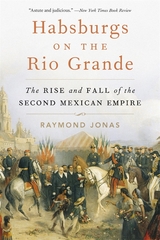 Habsburgs on the Rio Grande: The Rise and Fall of the Second Mexican Empire
Raymond Jonas
Harvard University Press, 2024 The story of how nineteenth-century European rulers conspired with Mexican conservatives in an outlandish plan to contain the rising US colossus by establishing Old World empire on its doorstep.
The outbreak of the US Civil War provided an unexpected opportunity for political conservatives across continents. On one side were European monarchs. Mere decades after its founding, the United States had become a threat to European hegemony; instability in the United States could be exploited to lay a rival low. Meanwhile, Mexican antidemocrats needed a powerful backer to fend off the republicanism of Benito Juárez. When these two groups found each other, the Second Mexican Empire was born.
Raymond Jonas argues that the Second Mexican Empire, often dismissed as a historical sideshow, is critical to appreciating the globally destabilizing effect of growing US power in the nineteenth century. In 1862, at the behest of Mexican reactionaries and with the initial support of Spain and Britain, Napoleon III of France sent troops into Mexico and installed Austrian archduke Ferdinand Maximilian as an imperial ruler who could resist democracy in North America. But what was supposed to be an easy victory proved a disaster. The French army was routed at the Battle of Puebla, and for the next four years, republican guerrillas bled the would-be empire. When the US Civil War ended, African American troops were dispatched to Mexico to hasten the French withdrawal.
Based on research in five languages and in archives across the globe, Habsburgs on the Rio Grande fundamentally revises narratives of global history. Far more than a footnote, the Second Mexican Empire was at the center of world-historic great-power struggles—a point of inflection in a contest for supremacy that set the terms of twentieth-century rivalry.
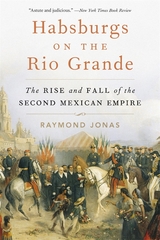 Habsburgs on the Rio Grande: The Rise and Fall of the Second Mexican Empire
Raymond Jonas
Harvard University Press “Vividly reconstructs how Maximilian’s power was forged and maintained by the sharp end of a French bayonet.” —New York Times Book Review
The story of how nineteenth-century European rulers conspired with Mexican conservatives in an outlandish plan to contain the rising US colossus by establishing Old World empire on its doorstep.
The outbreak of the US Civil War provided an unexpected opportunity for political conservatives across continents. On one side were European monarchs eager to counter growing US power, which threatened their hegemony. On the other, Mexican antidemocrats needed backers to fend off the republicanism of Benito Juárez. When these two groups found each other, the Second Mexican Empire was born.
Raymond Jonas argues that the empire, often dismissed as a historical sideshow, is critical to appreciating the global effects of US power in the nineteenth century. In 1862, at the behest of Mexican reactionaries and with the initial support of Spain and Britain, Napoleon III sent French troops to Mexico. There, he installed Austrian archduke Ferdinand Maximilian as a ruler who could resist democracy in North America. But the French were routed at the Battle of Puebla, and republican guerrillas spent the next four years bleeding the would-be empire. After the Civil War, African American troops were dispatched to Mexico to hasten the French withdrawal.
Habsburgs on the Rio Grande fundamentally rewrites narratives of global history. Far from a footnote, the Second Mexican Empire was central to great-power struggles that set the terms of twentieth-century rivalry.
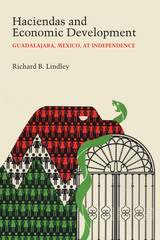 Haciendas and Economic Development: Guadalajara, Mexico, at Independence
By Richard B. Lindley
University of Texas Press, 1983 Agriculture, commerce, and mining were the engines that drove New Spain, and past historians have treated these economic categories as sociological phenomena as well. For these historians, society in eighteenth-century New Spain was comprised, on the one hand, of creoles, feudalistic land barons who were natives of the New World, and, on the other, of peninsulars, progressive, urban merchants born on the Iberian peninsula. In their view, creole-peninsular resentment ultimately led to the wars for independence that took place in the American hemisphere in the early nineteenth century. Richard B. Lindley’s study of Guadalajara’s wealthy citizens on the eve of independence contradicts this view, clearly demonstrating that landowners, merchants, creoles, and peninsulars, through intermarriage, formed large family enterprises with mixed agricultural, commercial, and mining interests. These family enterprises subdued potential conflicts of interest between Spaniards and Americans, making partners of potential competitors. When the wars for national independence began in 1810, Spain’s ability to protect its colonies from outside influence was destroyed. The resultant influx of British trade goods and finance shook the structure of colonial society, as abundant British capital quickly reduced the capital shortage that had been the main reason for large-scale, diversified family businesses. Elite family enterprises survived, but became less traditional and more specialized institutions. This transformation from traditional, personalized community relations to modern, anonymous corporations, with all that it implied for government and productivity, constitutes the real revolution that began in 1810.
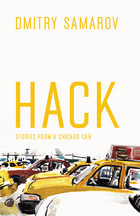 Hack: Stories from a Chicago Cab
Dmitry Samarov
University of Chicago Press, 2011 Cabdrivers and their yellow taxis are as much a part of the cityscape as the high-rise buildings and the subway. We hail them without thought after a wearying day at the office or an exuberant night on the town. And, undoubtedly, taxi drivers have stories to tell—of farcical local politics, of colorful passengers, of changing neighborhoods and clandestine shortcuts. No one knows a city’s streets—and thus its heart—better than its cabdrivers. And from behind the wheel of his taxi, Dmitry Samarov has seen more of Chicago than most Chicagoans will hope to experience in a lifetime.
An artist and painter trained at the School of the Art Institute of Chicago, Samarov began driving a cab in 1993 to make ends meet, and he’s been working as a taxi driver ever since. In Hack: Stories from a Chicago Cab, he recounts tales that will delight, surprise, and sometimes shock the most seasoned urbanite. We follow Samarov through the rhythms of a typical week, as he waits hours at the garage to pick up a shift, ferries comically drunken passengers between bars, delivers prostitutes to their johns, and inadvertently observes drug deals. There are long waits with other cabbies at O’Hare, vivid portraits of street corners and their regular denizens, amorous Cubs fans celebrating after a game at Wrigley Field, and customers who are pleasantly surprised that Samarov is white—and tell him so. Throughout, Samarov’s own drawings—of his fares, of the taxi garage, and of a variety of Chicago street scenes—accompany his stories. In the grand tradition of Nelson Algren, Saul Bellow, Mike Royko, and Studs Terkel, Dmitry Samarov has rendered an entertaining, poignant, and unforgettable vision of Chicago and its people.
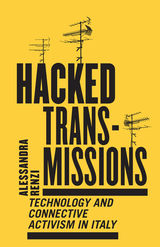 Hacked Transmissions: Technology and Connective Activism in Italy
Alessandra Renzi
University of Minnesota Press, 2020 Mapping the transformation of media activism from the seventies to the present day
Hacked Transmissions is a pioneering exploration of how social movements change across cycles of struggle and alongside technology. Weaving a rich fabric of local and international social movements and media practices, politicized hacking, and independent cultural production, it takes as its entry point a multiyear ethnography of Telestreet, a network of pirate television channels in Italy that combined emerging technologies with the medium of television to challenge the media monopoly of tycoon-turned-prime minister Silvio Berlusconi. Street televisions in Italy represented a unique experiment in combining old and new media to forge grassroots alliances, fight social isolation, and build more resilient communities. Alessandra Renzi digs for the roots of Telestreet in movements of the 1970s and the global activism of the 1990s to trace its transformations in the present work of one of the network’s more active nodes, insu^tv, in Naples. In so doing, she offers a comprehensive account of transnational media activism, with particular attention to the relations among groups and projects, their modes of social reproduction, the contexts giving rise to them, and the technology they adopt—from zines and radios to social media. Hacked Transmissions is also a study in method, providing examples of co-research between activist researchers and social movements, and a theoretical framework that captures the complexities of grassroots politics and the agency of technology. Providing a rare and timely glimpse into a key activist/media project of the twenty-first century, Hacked Transmissions marks a vital contribution to debates in a range of fields, including media and communication studies, anthropology, science and technology studies, social movements studies, sociology, and cultural theory.
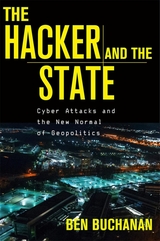 The Hacker and the State: Cyber Attacks and the New Normal of Geopolitics
Ben Buchanan
Harvard University Press, 2020 “A must-read…It reveals important truths.”
—Vint Cerf, Internet pioneer
“One of the finest books on information security published so far in this century—easily accessible, tightly argued, superbly well-sourced, intimidatingly perceptive.”
—Thomas Rid, author of Active Measures
Cyber attacks are less destructive than we thought they would be—but they are more pervasive, and much harder to prevent. With little fanfare and only occasional scrutiny, they target our banks, our tech and health systems, our democracy, and impact every aspect of our lives. Packed with insider information based on interviews with key players in defense and cyber security, declassified files, and forensic analysis of company reports, The Hacker and the State explores the real geopolitical competition of the digital age and reveals little-known details of how China, Russia, North Korea, Britain, and the United States hack one another in a relentless struggle for dominance. It moves deftly from underseas cable taps to underground nuclear sabotage, from blackouts and data breaches to election interference and billion-dollar heists.
Ben Buchanan brings to life this continuous cycle of espionage and deception, attack and counterattack, destabilization and retaliation. Quietly, insidiously, cyber attacks have reshaped our national-security priorities and transformed spycraft and statecraft. The United States and its allies can no longer dominate the way they once did. From now on, the nation that hacks best will triumph.
“A helpful reminder…of the sheer diligence and seriousness of purpose exhibited by the Russians in their mission.”
—Jonathan Freedland, New York Review of Books
“The best examination I have read of how increasingly dramatic developments in cyberspace are defining the ‘new normal’ of geopolitics in the digital age.”
—General David Petraeus, former Director of the CIA
“Fundamentally changes the way we think about cyber operations from ‘war’ to something of significant import that is not war—what Buchanan refers to as ‘real geopolitical competition.’”
—Richard Harknett, former Scholar-in-Residence at United States Cyber Command
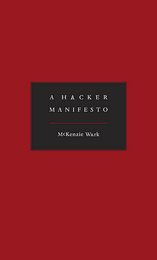 A Hacker Manifesto
McKenzie Wark
Harvard University Press, 2004 A double is haunting the world--the double of abstraction, the virtual reality of information, programming or poetry, math or music, curves or colorings upon which the fortunes of states and armies, companies and communities now depend. The bold aim of this book is to make manifest the origins, purpose, and interests of the emerging class responsible for making this new world--for producing the new concepts, new perceptions, and new sensations out of the stuff of raw data.
A Hacker Manifesto deftly defines the fraught territory between the ever more strident demands by drug and media companies for protection of their patents and copyrights and the pervasive popular culture of file sharing and pirating. This vexed ground, the realm of so-called "intellectual property," gives rise to a whole new kind of class conflict, one that pits the creators of information--the hacker class of researchers and authors, artists and biologists, chemists and musicians, philosophers and programmers--against a possessing class who would monopolize what the hacker produces.
Drawing in equal measure on Guy Debord and Gilles Deleuze, A Hacker Manifesto offers a systematic restatement of Marxist thought for the age of cyberspace and globalization. In the widespread revolt against commodified information, McKenzie Wark sees a utopian promise, beyond the property form, and a new progressive class, the hacker class, who voice a shared interest in a new information commons.
Hackers Wanted: An Examination of the Cybersecurity Labor Market
Martin C. Libicki
RAND Corporation, 2014 The perceived shortage of cybersecurity professionals working on national security may endanger the nation’s networks and be a disadvantage in cyberspace conflict. RAND examined the cybersecurity labor market, especially in regard to national defense. Analysis suggests market forces and government programs will draw more workers into the profession in time, and steps taken today would not bear fruit for another five to ten years.
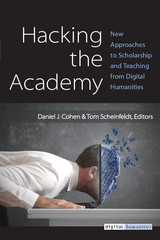 Hacking the Academy: New Approaches to Scholarship and Teaching from Digital Humanities
Daniel J. Cohen and Tom Scheinfeldt, Editors
University of Michigan Press, 2013 On May 21, 2010, Daniel J. Cohen and Tom Scheinfeldt posted the following provocative questions online: “Can an algorithm edit a journal? Can a library exist without books? Can students build and manage their own learning management platforms? Can a conference be held without a program? Can Twitter replace a scholarly society?” As recently as the mid-2000s, questions like these would have been unthinkable. But today serious scholars are asking whether the institutions of the academy as they have existed for decades, even centuries, aren’t becoming obsolete. Every aspect of scholarly infrastructure is being questioned, and even more importantly, being hacked. Sympathetic scholars of traditionally disparate disciplines are canceling their association memberships and building their own networks on Facebook and Twitter. Journals are being compiled automatically from self-published blog posts. Newly minted PhDs are forgoing the tenure track for alternative academic careers that blur the lines between research, teaching, and service. Graduate students are looking beyond the categories of the traditional CV and building expansive professional identities and popular followings through social media. Educational technologists are “punking” established technology vendors by rolling out their own open source infrastructure. Here, in Hacking the Academy, Daniel J. Cohen and Tom Scheinfeldt have gathered a sampling of the answers to their initial questions from scores of engaged academics who care deeply about higher education. These are the responses from a wide array of scholars, presenting their thoughts and approaches with a vibrant intensity, as they explore and contribute to ongoing efforts to rebuild scholarly infrastructure for a new millennium.
 Hacking the Bomb: Cyber Threats and Nuclear Weapons
Andrew Futter. Foreword by Lord Des Browne
Georgetown University Press Are nuclear arsenals safe from cyber-attack? Could terrorists launch a nuclear weapon through hacking? Are we standing at the edge of a major technological challenge to global nuclear order? These are among the many pressing security questions addressed in Andrew Futter’s ground-breaking study of the cyber threat to nuclear weapons. Hacking the Bomb provides the first ever comprehensive assessment of this worrying and little-understood strategic development, and it explains how myriad new cyber challenges will impact the way that the world thinks about and manages the ultimate weapon. The book cuts through the hype surrounding the cyber phenomenon and provides a framework through which to understand and proactively address the implications of the emerging cyber-nuclear nexus. It does this by tracing the cyber challenge right across the nuclear weapons enterprise, explains the important differences between types of cyber threats, and unpacks how cyber capabilities will impact strategic thinking, nuclear balances, deterrence thinking, and crisis management. The book makes the case for restraint in the cyber realm when it comes to nuclear weapons given the considerable risks of commingling weapons of mass disruption with weapons of mass destruction, and argues against establishing a dangerous norm of “hacking the bomb.” This timely book provides a starting point for an essential discussion about the challenges associated with the cyber-nuclear nexus, and will be of great interest to scholars and students of security studies as well as defense practitioners and policy makers.
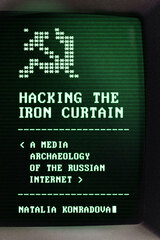 Hacking the Iron Curtain: A Media Archaeology of the Russian Internet
Natalia Konradova
University of Wisconsin Press, 2026 For decades before the internet existed, scientists, technologists, novelists, and enthusiasts of all descriptions dreamed of instantaneous, worldwide communication systems. What forms such systems might take and what technologies could be used to accomplish this goal were open questions—questions asked by people around the world, including in the Cold War–era superpowers of the United States and the Soviet Union.
Media archaeologist Natalia Konradova examines the history of the internet in Russia and its predecessor state, cutting through layers of technological history and dusting off conceptual artifacts of the past. Inspired by the fundamental question of how Soviets imagined future technologies, she investigates experiments with telepathy alongside the (then equally improbable) dream of a global, digitally connected computer network. Since the story of the Russian internet is inextricably wound up with Soviet society and the history of the Cold War, Hacking the Iron Curtain is as much a cultural and political history as it is a technological one—a history that illustrates how collective dreams can challenge geopolitical ambitions and inspire world-changing technologies.
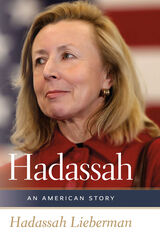 Hadassah: An American Story
Hadassah Lieberman
Brandeis University Press, 2021 Born in Prague to Holocaust survivors, Hadassah Lieberman and her family immigrated in 1949 to the United States. She went on to earn a BA from Boston University in government and dramatics and an MA in international relations and American government from Northeastern University. She built a career devoted largely to public health that has included positions at Lehman Brothers, Pfizer, and the National Research Council. After her first marriage ended in divorce, she married Joe Lieberman, a US senator from Connecticut who was the Democratic nominee for vice president with Al Gore and would go on to run for president.
In Hadassah, Lieberman pens the compelling story of her extraordinary life: from her family's experience in Eastern Europe to their move to Gardner, Massachusetts; forging her career; experiencing divorce; and, following her remarriage, her life on the national political stage. By offering insight into her identity as an immigrant, an American Jew, a working woman, and a wife, mother, and grandmother, Lieberman’s moving memoir speaks to many of the major issues of our time, from immigration to gender politics. Featuring an introduction by Joe Lieberman and an afterword by Megan McCain, it is a true American story.
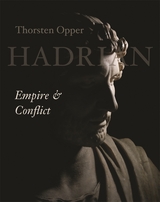 Hadrian: Empire and Conflict
Thorsten Opper
Harvard University Press, 2008 Even in the panoply of Roman history, Hadrian stands out. Emperor from 117 to 138 ad, he was at once a benevolent ruler and a ruthless military leader, known for his restless and ambitious nature, his interest in architecture, and his passion for Greek culture. This book moves beyond the familiar image of Hadrian to offer a new appraisal of this Emperor’s contradictory personality, his exploits and accomplishments, his rule, and his military role, against the backdrop of his twenty-one-year reign.
Lavishly illustrated with key works of art and objects, celebrated and little-known sculptures, bronzes, coins and medals, drawings, and watercolors from museums around the globe, the book conveys a vivid sense of the world Hadrian inhabited. Thorsten Opper shows the emperor from many angles—as a complex individual, as a military leader and strategist, as the amateur architect who created magnificent buildings such as his villa at Tivoli (an empire in miniature), as the lover who deified his male lover Antinous after his mysterious death in the Nile, and, finally, as the traveler who tirelessly roamed his empire and its boundaries.
From his place in Roman history to his legacy, which even makes its way into the popular culture of our day, the Hadrian who emerges from these pages is no longer larger than life; rather, he has all the depth and complexity, the color and shadings and detail of life itself.
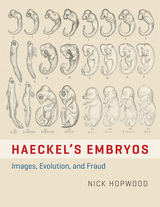 Haeckel's Embryos: Images, Evolution, and Fraud
Nick Hopwood
University of Chicago Press, 2015 Pictures from the past powerfully shape current views of the world. In books, television programs, and websites, new images appear alongside others that have survived from decades ago. Among the most famous are drawings of embryos by the Darwinist Ernst Haeckel in which humans and other vertebrates begin identical, then diverge toward their adult forms. But these icons of evolution are notorious, too: soon after their publication in 1868, a colleague alleged fraud, and Haeckel’s many enemies have repeated the charge ever since. His embryos nevertheless became a textbook staple until, in 1997, a biologist accused him again, and creationist advocates of intelligent design forced his figures out. How could the most controversial pictures in the history of science have become some of the most widely seen?
In Haeckel’s Embryos, Nick Hopwood tells this extraordinary story in full for the first time. He tracks the drawings and the charges against them from their genesis in the nineteenth century to their continuing involvement in innovation in the present day, and from Germany to Britain and the United States. Emphasizing the changes worked by circulation and copying, interpretation and debate, Hopwood uses the case to explore how pictures succeed and fail, gain acceptance and spark controversy. Along the way, he reveals how embryonic development was made a process that we can see, compare, and discuss, and how copying—usually dismissed as unoriginal—can be creative, contested, and consequential.
With a wealth of expertly contextualized illustrations, Haeckel’s Embryos recaptures the shocking novelty of pictures that enthralled schoolchildren and outraged priests, and highlights the remarkable ways these images kept on shaping knowledge as they aged.
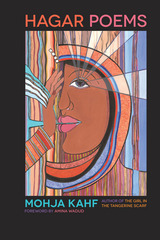 Hagar Poems
Mohja Kahf
University of Arkansas Press, 2016 “Mohja Kahf ’s Hagar Poems is brilliantly original in its conception, thrillingly artful in its execution. Its range is immense, its spiritual depth is profound, it negotiates its shifts between archaic and the contemporary with utmost skill. There’s lyricism, there’s satire, there’s comedy, there’s theology of a high order in this book.” —Alicia Ostriker, author of For the Love of God: The Bible as an Open Book “Hagar/ Hajar the immigrant/exile/outcast/refugee mother of a people is given multiple voices and significance in Mohja Kahf’s new book of dramatic monologues, which also reinvents Pharaoh’s daughter, Zuleika, Aïsha, and Mary in poems that are at once lively and learned, agnostic and devout. The sequence on an American mosque, and the poet’s ambivalent love for what it represents, is unique in American poetry.” —Marilyn Hacker, author of A Stranger’s Mirror “‘Where have all the goddesses gone,’ writes Mohja Kahf, ‘I tracked down Isis / incognito on Cyprus. /She told me Ishtar / lived under the radar / in southern Iraq. . . .’ In Hagar Poems, Mohja Kahf’s hallmark qualities—irreverence, imagination, wit, poignancy—are all exuberantly in evidence. A wonderful read.” —Leila Ahmed, author of A Quiet Revolution: The Veil’s Resurgence, from the Middle East to America “This brilliant collection captures all the ‘patient threading of relationship’ between Hagar and Sarah as between women, and then between women and men, between human and God. . . . At every turn of the page [Kahf] refuses complacency and circumstance but opts instead for exposing the tenuousness of threads that tie and bind and then come loose before our eyes.” —From the foreword by Amina Wadud
The central matter of this daring new collection is the story of Hagar, Abraham, and Sarah—the ancestral feuding family of Judaism, Christianity, and Islam.
These poems delve into the Hajar story in Islam. They explore other figures from the Near Eastern heritage, such as Mary and Moses, and touch on figures from early Islam, such as Fatima and Aisha. Throughout, there is artful reconfiguring. Readers will find sequels and prequels to the traditional narratives, along with modernized figures claimed for contemporary conflicts. Hagar Poems is a compelling shakeup of not only Hagar’s story but also of current roles of all kinds of women in all kinds of relationships.
Hagar's Vocation
L. James Long
Catholic University of America Press, 2015 Please fill in marketing copy
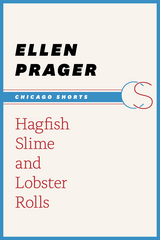 Hagfish Slime and Lobster Rolls
Ellen Prager
University of Chicago Press, 2011 When viewed from a quiet beach, the ocean, with its rolling waves and vast expanse, can seem calm, even serene. But hidden beneath the sea’s waves are a staggering abundance and variety of active creatures, engaged in the never-ending struggles of life—to reproduce, to eat, and to avoid being eaten. With Hagfish Slime and Lobster Rolls, marine scientist Ellen Prager takes us deep into the sea to introduce an astonishing cast of fascinating and bizarre creatures that make the salty depths their home, with the help of stunning color photos. From the lobsters that battle rivals or seduce mates with their urine to hagfish that ties itself into a knot to keep from suffocating in its own slime—there’s far more to Prager’s account than her ever-entertaining anecdotes. Again and again, she illustrates the crucial connections between life in the ocean and humankind, enchanting us as she educates, enthralling us with the wealth of life in the sea, and reminding us of our need to protect it.
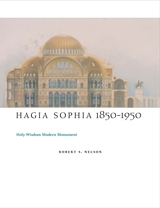 Hagia Sophia, 1850-1950: Holy Wisdom Modern Monument
Robert S. Nelson
University of Chicago Press, 2004 Hagia Sophia, the Church of Holy Wisdom, sits majestically atop the plateau that commands the straits separating Europe and Asia. Located near the acropolis of the ancient city of Byzantium, this unparalleled structure has enjoyed an extensive and colorful history, as it has successively been transformed into a cathedral, mosque, monument, and museum. In Hagia Sophia, 1850-1950, Robert S. Nelson explores its many lives.
Built from 532 to 537 as the Cathedral of Constantinople, Hagia Sophia was little studied and seldom recognized as a great monument of world art until the nineteenth century, and Nelson examines the causes and consequences of the building's newly elevated status during that time. He chronicles the grand dome's modern history through a vibrant cast of characters—emperors, sultans, critics, poets, archaeologists, architects, philanthropists, and religious congregations—some of whom spent years studying it, others never visiting the building. But as Nelson shows, they all had a hand in the recreation of Hagia Sophia as a modern architectural icon. By many means and for its own purposes, the West has conceptually transformed Hagia Sophia into the international symbol that it is today.
While other books have covered the architectural history of the structure, this is the first study to address its status as a modern monument. With his narrative of the building's rebirth, Nelson captures its importance for the diverse communities that shape and find meaning in Hagia Sophia. His book will resonate with cultural, architectural, and art historians as well as with those seeking to acquaint themselves with the modern life of an inspired and inspiring building.
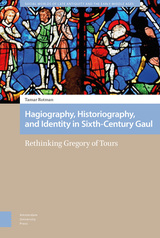 Hagiography, Historiography, and Identity in Sixth-Century Gaul: Rethinking Gregory of Tours
Tamar Rotman
Amsterdam University Press, 2022 Gregory of Tours, the sixth-century Merovingian bishop, composed extensive historiographical and hagiographical corpora during the twenty years of his episcopacy in Tours. These works serve as important sources for the cultural, social, political and religious history of Merovingian Gaul. This book focuses on Gregory’s hagiographical collections, especially the Glory of the Martyrs, Glory of the Confessors, and Life of the Fathers, which contain accounts of saints and their miracles from across the Mediterranean world. It analyses these accounts from literary and historical perspectives, examining them through the lens of relations between the Merovingians and their Mediterranean counterparts, and contextualizing them within the identity crisis that followed the disintegration of the Roman world. This approach leads to groundbreaking conclusions about Gregory’s hagiographies, which this study argues were designed as an "ecclesiastical history" (of the Merovingian Church) that enabled him to craft a specific Gallo-Christian identity for his audience.
 Hagiography in Marguerite de Navarre’s Heptaméron: Saints and Debates in Renaissance France
Leanna Bridge Rezvani
University of Delaware Press, 2026 Marguerite de Navarre was one of the most educated and powerful women of Renaissance Europe. The Heptaméron, her celebrated collection of tales and debates, offers readers invaluable insights into diverse aspects of sixteenth-century French society. Scholars of Marguerite have written extensively on the complexities of her religious thought, but the influence of Catholic narrative tradition on the Heptaméron has been underexplored. Through an analysis of Marguerite’s tales together with literary works, religious writings, and visual images of the saints, Hagiography in Marguerite de Navarre’s Heptaméron reveals the important relationship between the Queen of Navarre’s text, hagiographic tradition, and various sixteenth-century controversies. By contextualizing the Heptaméron within these theological and literary debates, this volume illustrates how Marguerite both borrowed from and revised hagiography to lend greater authority to her writing, advocate on behalf of women, and craft an innovative response to polemics about gender, religion, and the cult of saints.
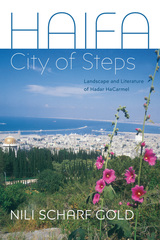 Haifa: City of Steps
Nili Scharf Gold
Brandeis University Press, 2017 Nili Gold, who was born in Haifa to German-speaking parents in 1948, the first year of Israeli statehood, here offers a remarkable homage to her native city during its heyday as an international port and cultural center. Spanning the 1920s and ’30s, when Jews and Arabs lived together amicably and buildings were erected that reflected European, modernist, Jewish, and Arab architectural influences, through 1948, when most Arabs left, and into the ’50s and ’60s burgeoning of the young state of Israel, Gold anchors her personal and family history in five landmark clusters. All in the neighborhood of Hadar HaCarmel, these landmarks define Haifa as a whole. In exquisite detail, Gold describes Memorial Park and its environs, including the border between the largest Jewish and Arab neighborhoods in Haifa; the intersection of Herzl and Balfour Streets, whose highlight is the European/Middle Eastern Technion edifice; Talpiot Market, recalling Haifa as a lively commercial hub; Alliance High School and the Great Synagogue, the former dedicated to instilling a love of intellectual pursuits, while the synagogue was an arm of the dominant Israeli religious establishment; the Ge’ula Elementary School and neighboring buildings that played a historical role, among them, the Struck House, with its Arab-inspired architecture—all against the dramatic backdrop of the mountain, sea, and bay, and their reverberations in memory and literature. Illustrated with more than thirty-five photographs and six maps, Gold’s astute observations of the changing landscape of her childhood and youth highlight literary works that portray deeply held feelings for Haifa, by such canonical Israeli writers as A. B. Yehoshua, Sami Michael, and Dahlia Ravikovitch.
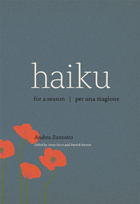 Haiku for a Season / Haiku per una stagione
Andrea Zanzotto
University of Chicago Press, 2012 Andrea Zanzotto is one of the most important and acclaimed poets of postwar Italy. This collection of ninety-one pseudo-haiku in English and Italian—written over several months during 1984 and then revised slowly over the years—confirms his commitment to experimentation throughout his life. Haiku for a Season represents a multilevel experiment for Zanzotto: first, to compose poetry bilingually; and second, to write in a form foreign to Western poetry. The volume traces the life of a woman from youth to adulthood, using the seasons and the varying landscape as a mirror to reflect her growth and changing attitudes and perceptions. With a lifelong interest in the intersections of nature and culture, Zanzotto displays here his usual precise and surprising sense of the living world. These never-before-published original poems in English appear alongside their Italian versions—not strict translations but parallel texts that can be read separately or in conjunction with the originals. As a sequence of interlinked poems, Haiku for a Season reveals Zanzotto also as a master poet of minimalism. Zanzotto’s recent death is a blow to world poetry, and the publication of this book, the last that he approved in manuscript, will be an event in both the United States and in Italy.
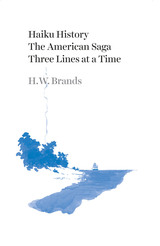 Haiku History: The American Saga Three Lines at a Time
By H.W. Brands
University of Texas Press, 2020 For the past nine years, acclaimed historian H. W. Brands has been tweeting the history of the United States. But this has been no ordinary version of the American tale. Instead, Brands gives his 5,000-plus followers a regular dose of history and poetry combined: his tweets are in the form of haiku. Haiku History presents a selection of these smart, shrewd, and always informative short poems. “Shivers and specters / Flit over souls in Salem / As nineteen are hanged; describes the Salem witch trials, and “In angry war paint / Men board three Indiamen / And toss the cargo” depicts the Boston Tea Party. “Then an anarchist / Makes one of the war heroes / The next president” recalls the assassination of William McKinley and the accession of Teddy Roosevelt to the presidency, while “Second invasion: / Iraq, where Saddam is still / In troubling control” returns us to the invasion of Iraq in 2003. As he travels from the thirteen colonies to the 2016 election, Brands brings to life the wars, economic crises, social upheavals, and other events that have shaped our nation. A history book like no other, Haiku History injects both fun and poetry into the story of America—three lines at a time.
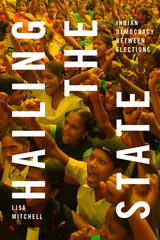 Hailing the State: Indian Democracy between Elections
Lisa Mitchell
Duke University Press, 2023 In Hailing the State, Lisa Mitchell explores the methods of collective assembly that people in India use to hold elected officials and government administrators accountable, demand inclusion in decision making, and stage informal referendums. Mitchell traces the colonial and postcolonial lineages of collective forms of assembly, in which—rather than rejecting state authority—participants mobilize with expectations that officials will uphold the law and fulfill electoral promises. She shows how assembly, which ranges from sit-ins, hunger strikes, and demands for meetings with officials to massive general strikes and road and rail blockades, is fundamental to the functioning of democracy in India. These techniques are particularly useful for historically marginalized groups and others whose voices may not be easily heard. Moving beyond an exclusive focus on electoral processes, Mitchell argues that to understand democracy—both in India and beyond—we must also pay attention to what occurs between elections, thereby revising understanding of what is possible for democratic action around the world.
Haim Nahum: A Sephardic Chief Rabbi in Politics, 1892-1923
Esther Benbassa
University of Alabama Press, 1995 First published in French by the Presses du Centre National de la Recherche ScientiÞque in 1990, this book relates the history of Turkish Jewry during the last decades of the Ottoman empire, as told through the life and work of Haim Nahum, the Chief Rabbi of the Ottoman empire from 1909 to 1920.
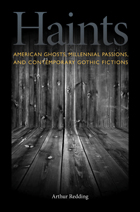 Haints: American Ghosts, Millennial Passions, and Contemporary Gothic Fictions
Arthur Redding
University of Alabama Press, 2011 Examines the work of contemporary American authors who draw on the gothic tradition in their fiction
In Haints: American Ghosts, Millennial Passions, and Contemporary Gothic Fictions, Arthur Redding argues that ghosts serve as lasting witnesses to the legacies of slaves and indigenous peoples whose stories were lost in the remembrance or mistranslation of history.
Authors such as Toni Morrison and Leslie Marmon Silko deploy the ghost as a means of reconciling their own violently repressed heritage with their identity as modern Americans. And just as our ancestors were haunted by ghosts of the past, today their descendants are haunted by ghosts of contemporary crises: urban violence, racial hatred, and even terrorism. In other cases that Redding studies—such as James Baldwin’s The Evidence of Things Not Seen and Toni Cade Bambara’s Those Bones Are Not My Child—gothic writers address similar crises to challenge traditional American claims of innocence and justice.
Hair Raising: Beauty, Culture, and African American Women
Rooks, Noliwe M
Rutgers University Press, 1996 We all know there is a politics of skin color, but is there a politics of hair?In this book, Noliwe Rooks explores the history and politics of hair and beauty culture in African American communities from the nineteenth century to the 1990s. She discusses the ways in which African American women have located themselves in their own families, communities, and national culture through beauty advertisements, treatments, and styles. Bringing the story into today's beauty shop, listening to other women talk about braids, Afros, straighteners, and what they mean today to grandmothers, mothers, sisters, friends, and boyfriends, she also talks about her own family and has fun along the way. Hair Raising is that rare sort of book that manages both to entertain and to illuminate its subject.
 The Hairdresser of Harare: A Novel
Tendai Huchu
Ohio University Press, 2015 In this delicious and devastating first novel, which The Guardian named one of its ten best contemporary African books, Caine Prize finalist Tendai Huchu (The Maestro, the Magistrate, and the Mathematician) portrays the heart of contemporary Zimbabwean society with humor and grace. Vimbai is the best hairdresser in Mrs. Khumalo’s salon, and she is secure in her status until the handsome, smooth-talking Dumisani shows up one day for work. Despite her resistance, the two become friends, and eventually, Vimbai becomes Dumisani’s landlady. He is as charming as he is deft with the scissors, and Vimbai finds that he means more and more to her. Yet, by novel’s end, the pair’s deepening friendship—used or embraced by Dumisani and Vimbai with different futures in mind—collapses in unexpected brutality. The novel is an acute portrayal of a rapidly changing Zimbabwe. In addition to Vimbai and Dumisani’s personal development, the book shows us how social concerns shape the lives of everyday people.
 Haiti and the Revolution Unseen: The Persistence of the Decolonial Imagination
Natalie Marie Léger
Vanderbilt University Press, 2025 With Haiti and the Revolution Unseen, Natalie Marie Léger alters the genealogy of the Haitian revolutionary subject in the archive of Caribbean cultural thought and shifts our attention to the revolutionists previously left out of the archive: Saint Domingue’s Africanized captives. She posits that canonical Caribbean writers of the Haitian Revolution (1791–1804), like C. L. R. James, Aimé Césaire, Alejo Carpentier, and Édouard Glissant, ignore the conditions of difference that inspired the captive populace’s dreams of freedom from French colonial rule. These authors replicate the forms of colonial power that they sought to vilify with their Haitian revolutionist texts because they excise the African Haitian revolutionist from the story of the Revolution. Despite the fact that two-thirds of the enslaved population were African born on the eve of the Revolution, canonized Caribbean literature of the Revolution writes the Haitian revolutionist as acculturated into the West. The absence of African Haitian revolutionists results in narratives that do not see Haitian ideas about Haiti and the Haitian Revolution. They are the stories of a Haiti and the Haitian Revolution unseen.
Léger writes against a Haiti- and Haitians-less idea of the Revolution. She asks scholars and artists of the Revolution to know Haitians as Ginens (African Haitians) and Haiti as Ayiti Ginen (Africa Haiti). This form of knowing demands a decolonial understanding of the Haitian Revolution and a reevaluation of its stories as told by influential twentieth-century Caribbean writers. The story she tells showcases the immense political impact of the African Haitian revolutionist’s philosophies of freedom in Saint Domingue and Haiti thereafter; and she argues that the absence of these philosophies in Caribbean classics of the Revolution demands consideration of why these classics continue to shape how the Revolution and Haiti are discussed in Caribbean Studies, Black Studies, Postcolonial Studies and Haitian Studies. More pressingly, Léger calls on artists and scholars of the Revolution to be mindful of how Haiti and Haitians are figured in narratives of the Revolution. The immense space Haiti holds in Caribbean imaginings of freedom and revolution makes mediating it, its Revolution, and peoples through a prejudiced gaze that serves the West hugely problematic, since a denigrated Haiti yields stunted visions of the Caribbean’s future. These conditions require attention to the pervasive presence of colonial paradigms for being in classic literatures of the Revolution and the way they undermine the generative manner Caribbean writers have used Haiti to think through their past, present, and future.
Haiti and the Uses of America: Post-U.S. Occupation Promises
Verna, Chantalle F.
Rutgers University Press, 2017 Contrary to popular notions, Haiti-U.S. relations have not only been about Haitian resistance to U.S. domination. In Haiti and the Uses of America, Chantalle F. Verna makes evident that there have been key moments of cooperation that contributed to nation-building in both countries.
In the years following the U.S. occupation of Haiti (1915-1934), Haitian politicians and professionals with a cosmopolitan outlook shaped a new era in Haiti-U.S. diplomacy. Their efforts, Verna shows, helped favorable ideas about the United States, once held by a small segment of Haitian society, circulate more widely. In this way, Haitians contributed to and capitalized upon the spread of internationalism in the Americas and the larger world.
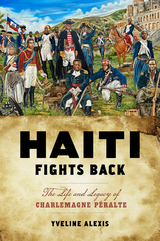 Haiti Fights Back: The Life and Legacy of Charlemagne Péralte
Yveline Alexis
Rutgers University Press, 2021 Winner of the 2021 Haitian Studies Association Book Prize
Haiti Fights Back: The Life and Legacy of Charlemagne Péralte is the first US scholarly examination of the politician and caco leader (guerrilla fighter) who fought against the US military occupation of Haiti. The occupation lasted close to two decades, from 1915-1934. Alexis argues for the importance of documenting resistance while exploring the occupation’s mechanics and its imperialism. She takes us to Haiti, exploring the sites of what she labels as resistance zones, including Péralte’s hometown of Hinche and the nation’s large port areas--Port-au-Prince and Cap-Haïtien. Alexis offers a new reading of U.S. military archival sources that record Haitian protests as banditry. Haiti Fights Back illuminates how Péralte launched a political movement, and meticulously captures how Haitian women and men resisted occupation through silence, military battles, and writings. She locates and assembles rare, multilingual primary sources from traditional repositories, living archives (oral stories), and artistic representations in Haiti and the United States. The interdisciplinary work draws on legislation, cacos’ letters, newspapers, and murals, offering a unique examination of Péralte’s life (1885-1919) and the significance of his legacy through the twenty-first century. Haiti Fights Back offers a new approach to the study of the U.S. invasion of the Americas by chronicling how Caribbean people fought back.
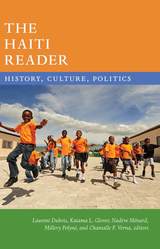 The Haiti Reader: History, Culture, Politics
Laurent Dubois, Kaiama L. Glover, Nadève Ménard, Millery Polyné, and Chantalle F. Verna, editors
Duke University Press, 2020 While Haiti established the second independent nation in the Western Hemisphere and was the first black country to gain independence from European colonizers, its history is not well known in the Anglophone world. The Haiti Reader introduces readers to Haiti's dynamic history and culture from the viewpoint of Haitians from all walks of life. Its dozens of selections—most of which appear here in English for the first time—are representative of Haiti's scholarly, literary, religious, visual, musical, and political cultures, and range from poems, novels, and political tracts to essays, legislation, songs, and folk tales. Spanning the centuries between precontact indigenous Haiti and the aftermath of the 2010 earthquake, the Reader covers widely known episodes in Haiti's history, such as the U.S. military occupation and the Duvalier dictatorship, as well as overlooked periods such as the decades immediately following Haiti's “second independence” in 1934. Whether examining issues of political upheaval, the environment, or modernization, The Haiti Reader provides an unparalleled look at Haiti's history, culture, and politics.
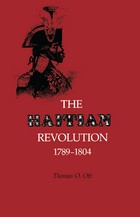 The Haitian Revolution, 1789–1804
Thomas O. Ott
University of Tennessee Press, 1987 On the night of August 22, 1791, thousands of small illuminated specks could be seen on the otherwise darkened Plaine du Nord of Saint-Domingue in the Caribbean. With a torch in one hand and a knife in the other, the slave of Saint-Domingue was destroying a society which had suppressed him for nearly one hundred years. But the agonies of that night were only the beginning of a great socioeconomic explosion, lasting almost thirteen years. During that period Saint-Domingue emerged as Haiti, the first Black republic in the Western Hemisphere.
Although the American, French, Russian, and Mexican revolutions have received the attention of many scholars, the Haitian Revolution has remained in relative obscurity. Even those historians who have made a study of that turmoil often viewed much of it ideologically. In The Haitian Revolution, Thomas O. Ott provides a long-needed objective synthesis of the events and ideas which shaped this heroic period. In doing so, he has contributed significant new details and persuasive interpretations.
The background of the Haitian Revolution was one of dreams and lost hopes, the substance of other great upheavals. Against this background, Professor Ott identifies and throws light upon a number of themes: the influence of the French Revolution, the abolition of slavery, the fear of revolt among other slave societies, the intervention of foreign powers, and the rise of a Black republic. Yet, he makes evident, the major theme of the period was not an event but a man—Toussaint L'Ouverture.
Leaving a rather idyllic environment at Breda Plantation on the Plaine du Nord, Toussaint joined the rebels and rose from obscurity to prominence within an astonishingly short timespan. With the dexterity of a tightrope walker and the finesse of a fencer, Toussaint had outplayed all but one of his rivals for power by mid-1800. That one who remained, however, was Napoleon Bonaparte. In the final contest between these two men, Toussaint, dying a tragic death in a dank French prison, would see his vision of Haitian independence near oblivion. But the fading dream was rescued by Jean Jacques Dessalines, Toussaint’s fierce lieutenant, and by the Haitian people themselves.
To achieve objectivity, Professor Ott has gone beyond the sources traditionally consulted. He has utilized numerous newspaper accounts, mainly written by observant Yankee seamen, and has also investigated the American consul reports of the period. But the many French references, such as the heretofore untapped papers of Donatien Rochambeau, have not been neglected.
 The Hajj and the Arts of Pilgrimage: Essays in Honour of Nasser David Khalili
Edited by Qaisra M. Khan and Nahla Nassar
Gingko, 2023 A comprehensive overview of Hajj, one of the central pillars of Islam.
Hajj and the Arts of Pilgrimage consists of twenty-seven essays addressing objects in the remarkable collection of Nasser David Khalili. The collection features more than five thousand objects relating to the arts of pilgrimage, from the eighth century to today, and includes Qur’ans, illustrated manuscripts, rare books, scientific instruments, textiles, coins, paintings, prints, and photo-postcards, as well as archival material, unique historical documents, and examples of the work of some of the earliest Muslim photographers of Hajj. Together the essays collected in Hajj and the Arts of Pilgrimage provide a comprehensive overview of Hajj, illustrating the religious, spiritual, cultural, and artistic aspects of pilgrimage to the Holy Sanctuaries of Islam and the cosmopolitan nature of Hajj itself. Each essay is written by a prominent specialist in the field and beautifully illustrated with full-color images of objects from the collection, some of which have never been seen in print before. Taking readers from the early history of Islam to the fascinating story of the Western view of Muslim pilgrimage, these essays will transform our perception of Hajj.
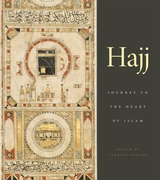 Hajj: Journey to the Heart of Islam
Venetia Porter
Harvard University Press, 2012 The Hajj, one of the five pillars of Islam, is the largest pilgrimage in the world today and a sacred duty for all Muslims. Each year, millions of the faithful from around the world make the pilgrimage to Makkah, the birthplace of Islam where the Prophet Muhammad received his revelation.
With contributions from renowned experts Muhammad Abdel Haleem, Hugh Kennedy, Robert Irwin, and Ziauddin Sardar, this fascinating book pulls together many strands of Hajj, its rituals, history, and modern manifestations. Travel was once a hazardous gamble, yet devoted Muslims undertook the journey to Makkah, documenting their experiences in manuscripts, wall paintings, and early photographs, many of which are presented here. Through a wealth of illustrations including pilgrims' personal objects, souvenirs, and maps, Hajj provides a glimpse into this important holy rite for Muslim readers already grounded in the tradition and non-Muslims who cannot otherwise participate.
Hajj does not, however, merely trace pilgrimages of the past. The Hajj is a living tradition, influenced by new conveniences and obstacles. Graffiti, consumerism, and state lotteries all now play a role in this time-honored practice. This book opens out onto the full sweep of the Hajj: a sacred path walked by early Islamic devotees and pre-Islamic Arabians; a sumptuous site of worship under the care of sultans; and an expression of faith in the modern world.
 Haki bil-Libnani: Lebanese Arabic Online Textbook and Companion Website to Al-Kitaab Part One, Third Edition (Website Access Card)
Adnan Haydar
Georgetown University Press Haki bil-Libnani provides students of Arabic with an opportunity to acquire substantial and systematic proficiency in Lebanese dialect and culture, and is designed to work either on its own or alongside the bestselling Arabic-language textbook Al-Kitaab Part One, Third Edition. This fully online textbook and interactive website features two video story components, designed to foster proficiency as students work through each lesson while practicing vocabulary, cultural expressions, and short dialogues. The first story recreates the stories of Maha and Khaled Abul'ila from Al-Kitaab, recast in a Lebanese context starring Yara and Jamil Haddad, who speak the Lebanese dialect and reference Lebanese institutions, places, and customs. A second storyline consists of an original series of short dialogue scenes involving three main characters: Jamal, Raghida, and John Douglas. Jamal and Raghida serve as cultural liaisons who help the Lebanese-American John navigate daily life in Lebanon -- buying groceries, taking cabs, and doing Arabic homework -- while John's linguistic and cultural struggles will resonate with many students. The integration of speaking, listening, grammar, and cultural competency skills in Haki bil-Libnani: Lebanese Arabic Online Textbook and Companion Website to Al-Kitaab Part One, Third Edition, will facilitate the teaching and learning of Lebanese Arabic, while introducing students to Lebanon's vibrant and charming culture. All Modern Standard Arabic (MSA) drills and exercises from the Al-Kitaab Part One, Third Edition, website are included here, so that students using Haki bil-Libnani alongside the Al-Kitaab Part One, Third Edition, textbook will only need to purchase access to the Haki bil-Libnani companion website. Haki bil-Libnani will also be useful to individual learners with some proficiency in Arabic, who desire to learn Lebanese. Companion Website Minimum System Requirements:
Operating System: Microsoft Windows XP, Vista, 7, 8, or Mac OS X
CPU: 233MHz
RAM: 128MB
Screen resolution: 1024 x 768 or higher
Browser: PC: Internet Explorer 7.x or higher, or Firefox version 3.x or higher, or Google Chrome. Mac: Firefox version 3.x or higher, or Safari 3.x or higher, or Google Chrome.
Network Connection: A high-speed connection with throughput of 256 Kbps or more is recommended to use audio and video components.
Equipment: You will need speakers or a headset to listen to audio and video components, and a microphone is necessary for recording activities. For best performance, we recommend you use a USB microphone for partner recording activities.
Plug-ins: You must have the latest version of Adobe Flash Player
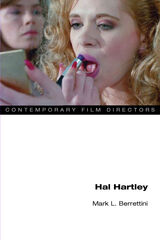 Hal Hartley
Mark L. Berrettini
University of Illinois Press, 2011 Since the late 1980s, Hal Hartley has challenged standards of realist narrative cinema with daring narrative constructions, character development, and the creation of an unconventional visual world. In this pioneering critical overview of his work and its cultural-historical context, Mark L. Berrettini discusses seven of Hartley's feature films, including The Unbelievable Truth, Trust, Simple Men, Amateur, Henry Fool, Fay Grim, and The Book of Life. Drawing on journalism, theories of representation, narrative and genre, and cinema history, Berrettini discusses the absurdist-comedic representation of serious themes in Hartley's films: impossible love, coincidence and human relations, extreme isolation, and the restrictions posed by gender norms. He looks at the films' consistently absurd tone and notes how these themes reappear within framing narratives that shift from the seemingly mundane in Hartley's earliest works to the vibrantly creative and fantastic in his later films. Employing close analysis and theories related to cinematic narrative and to realism, the book's critical appraisal of Hartley's films considers aspects of American independent cinema and postwar European cinema, antirealism, and minimalism. The volume concludes with a pair of in-depth interviews with the director from two distinct points in his career.
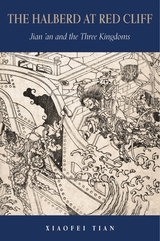 The Halberd at Red Cliff: Jian’an and the Three Kingdoms
Xiaofei Tian
Harvard University Press, 2018 The turn of the third century CE—known as the Jian’an era or Three Kingdoms period—holds double significance for the Chinese cultural tradition. Its writings laid the foundation of classical poetry and literary criticism. Its historical personages and events have also inspired works of poetry, fiction, drama, film, and art throughout Chinese history, including Internet fantasy literature today. There is a vast body of secondary literature on these two subjects individually, but very little on their interface.
The image of the Jian’an era, with its feasting, drinking, heroism, and literary panache, as well as intense male friendship, was to return time and again in the romanticized narrative of the Three Kingdoms. How did Jian’an bifurcate into two distinct nostalgias, one of which was the first paradigmatic embodiment of wen (literary graces, cultural patterning), and the other of wu (heroic martial virtue)? How did these largely segregated nostalgias negotiate with one another? And how is the predominantly male world of the Three Kingdoms appropriated by young women in contemporary China? The Halberd at Red Cliff investigates how these associations were closely related in their complex origins and then came to be divergent in their later metamorphoses.
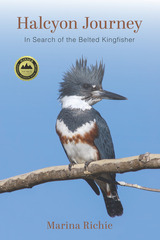 Halcyon Journey: In Search of the Belted Kingfisher
Marina Richie
Oregon State University Press, 2022 Winner of the 2024 John Burroughs Medal for Distinguished Natural History Writing
Winner of a 2022 National Outdoor Award
Winner of a Foreword INDIES Award
More than one hundred species of kingfishers brighten every continent but Antarctica. Not all are fishing birds. They range in size from the African dwarf kingfisher to the laughing kookaburra of Australia. This first book to feature North America’s belted kingfisher is a lyrical story of observation, revelation, and curiosity in the presence of flowing waters.
The kingfisher—also known as the halcyon bird—is linked to the mythic origin of halcyon days, a state of happiness that Marina Richie hopes to find outside her back door in Missoula, Montana. Epiphanies and a citizen science discovery punctuate days tracking a bird that outwits at every turn. The female is more colorful than the male (unusual and puzzling) and the birds’ earthen nest holes are difficult to locate.
While the heart of the drama takes place on Rattlesnake Creek in Missoula, the author’s adventures in search of kingfisher kin on the lower Rio Grande, in South Africa, and in London illuminate her relationships with the birds of Montana. In the quiet of winter, she explores tribal stories of the kingfisher as messenger and helper, pivotal qualities for her quest. For all who love birds or simply seek solace in nature, Halcyon Journey is an inviting introduction to the mythic and mysterious belted kingfisher.
Half
Sharon Harrigan
University of Wisconsin Press, 2020 Growing up, identical twins Paula and Artis speak in one voice—until they can't. After years apart, with lives, partners, and children of their own, they are reunited on the occasion of their father's funeral. Seeking to repair the damage wrought upon their relationship by outside forces, the twins retrace their early lives to uncover what happened—but risk unraveling their carefully constructed cocoons.
Written in spare,lyrical prose,Halfis an achingly beautiful story of intimacy and loss, revealing the complexity—and cost—of sharing your life entirely with someone else. Sharon Harrigan deftly explores how fierce lovecanalso be the very thing that leadsto heartbreak and betrayal.
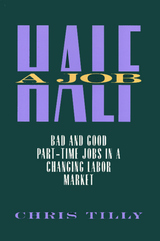 Half A Job: Bad and Good Part-Time Jobs in a Changing Labor Market
Chris Tilly
Temple University Press, 1996 Over 20 million people are working part-time in the United States, more than six million of them involuntarily. Both Time and Fortune magazines have run recent cover stories about this constrained faction of the workforce, who tend to earn on average 40 percent less than full-time workers. Addressing this disturbing trend, Chris Tilly presents a current, in-depth analysis of how U.S. businesses use part-time employment, and why they are using it more and more. Worker demand for part-time jobs peaked more than twenty years ago, but employers' desires for cheap labor and schedule flexibility have continued to drive the long-term growth of part-time jobs. Tilly argues that this growth is a reaction to the expanding trade and service industries, which, by their nature, depend on part-time workers. Examining the nature and purposes of the different types of part-time employment, he explores the roots of part-time jobs in the organization of work, and the inadequacies of existing public policies on part-time employment. Using not only statistical analysis but over eighty interviews with employers in the retail and insurance industries, Tilly suggests new approaches to providing flexibility without insecurity.
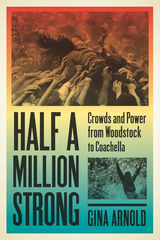 Half a Million Strong: Crowds and Power from Woodstock to Coachella
Gina Arnold
University of Iowa Press, 2018 From baby boomers to millennials, attending a big music festival has basically become a cultural rite of passage in America. In Half a Million Strong, music writer and scholar Gina Arnold explores the history of large music festivals in America and examines their impact on American culture. Studying literature, films, journalism, and other archival detritus of the countercultural era, Arnold looks closely at a number of large and well-known festivals, including the Newport Folk Festival, Woodstock, Altamont, Wattstax, the New Orleans Jazz and Heritage Festival, Hardly Strictly Bluegrass, and others to map their cultural significance in the American experience. She finds that—far from being the utopian and communal spaces of spiritual regeneration that they claim for themselves— these large music festivals serve mostly to display the free market to consumers in its very best light.
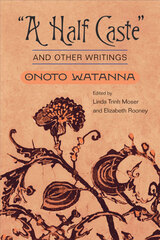 "A Half Caste" and Other Writings
Onoto Watanna
University of Illinois Press, 2003 Born Winnifred Eaton to a British father and Chinese mother, Onoto Watanna was the first novelist of Chinese descent published in the United States. Eaton "became" Watanna to escape Americans' scorn of the Chinese and to capitalize on their fascination with all things Japanese. This volume includes nineteen of Watanna's shorter works, including thirteen short stories and six essays. "A Half Caste," the earliest essay, appeared in 1898, a year before Miss Numé: A Japanese-American Romance, the first of her bestselling novels. The last short story, “Elspeth,” appeared in 1923. Some of Watanna’s fictional characters will remind readers of the delicate but tragic Madame Butterfly, while others foreshadow types like the trickster in Maxine Hong Kingston’s Tripmaster Monkey (where Watanna makes a cameo appearance). Throughout, Watanna tells stories of people very much like herself—capable, clever, and endlessly inventive.
Half Humankind: Contexts and Texts of the Controversy about Women in England, 1540-1640
Katherine Usher Henderson and Barbara F. McManus
University of Illinois Press, 1985 Half Humankind is the first study to provide modernized and annotated editions of the key documents from the controversy about women in Renaissance England. The selections -- ten treatises debating the merits of womankind and six eulogies and condemnations depicting actual women -- range in style from careful logic and studied eloquence to ribald humor and witty parody. Illuminated by an extensive discussion tying the selections to Renaissance society and traditional literature, this volume is an invaluable resource for scholars and students of literature, history, and women's studies.
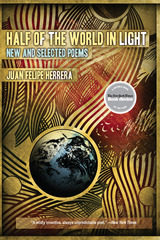 Half of the World in Light: New and Selected Poems
Juan Felipe Herrera
University of Arizona Press, 2008 Winner of the National Book Critics Circle Award for Poetry and the PEN/Beyond Margins Award
For nearly four decades, Juan Felipe Herrera has documented his experience as a Chicano in the United States and Latin America through stunning, memorable poetry that is both personal and universal in its impact, themes, and approach. Often political, never fainthearted, his career has been marked by tremendous virtuosity and a unique sensibility for uncovering the unknown and the unexpected. Through a variety of stages and transformations, Herrera has evolved more than almost any other Chicano poet, always re-inventing himself into a more mature and seasoned voice.
Now, in this unprecedented collection, we encounter the trajectory of this highly innovative and original writer, bringing the full scope of his singular vision into view. Beginning with early material from A Certain Man, the volume moves through thirteen of Herrera’s collections into new, previously unpublished work. Serious scholars and readers alike will now have available to them a representative set of glimpses into his production as well as his origins and personal development. The ultimate value of bringing together such a collection, however, is that it will allow us to better understand and appreciate the complexity of what this major American poet is all about.
 Half Portions
Edna Ferber
University of Illinois Press, 2002 A collection of short stories from Pultizer Prize winner, Edna Ferber
The short stories in this collection take the reader from small-town Wisconsin to the bustling streets of New York and Chicago and back again. While they range greatly in length and tone, they all share the trademark wit and affectionate insight of Edna Ferber. Showcasing the facility with words that made her a mainstay at the Algonquin round table, Ferber explores some of her favorite themes: the role of women (especially strong or unconventional women) in modern society, the mores of the midwestern small town, and the changes over time in relationships between parents and children. In “The Maternal Feminine,” a plain, overlooked child grows into a strong, resourceful businesswoman and forms a strong motherly bond with the children of her more attractive sister. In “April 25th, As Usual,” an aging Wisconsin couple reluctantly join their successful daughter in New York, where they try to adjust to a very different lifestyle. “Old Lady Mandle” is a bittersweet tale about an elderly Chicago mother coming to terms with the fact that she is no longer the most important woman in the life of her grown son. “One Hundred Per Cent” features Ferber’s celebrated heroine Emma McChesney, now re-married, seeing her husband off to war. The stories gathered here are beautifully observed chronicles of early twentieth-century life and are filled with characters who, despite their very human foibles, are all bestowed by Ferber with warmth and dignity.
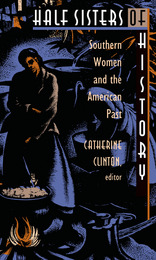 Half Sisters of History: Southern Women and the American Past
Catherine Clinton
Duke University Press, 1994 Long relegated to the margins of historical research, the history of women in the American South has rightfully gained prominence as a distinguished discipline. A comprehensive and much-needed tribute to southern women’s history, Half Sisters of History brings together the most important work in this field over the past twenty years. This collection of essays by pioneering scholars surveys the roots and development of southern women’s history and examines the roles of white women and women of color across the boundaries of class and social status from the founding of the nation to the present. Authors including Anne Firor Scott, Elizabeth Fox-Genovese, Jacquelyn Dowd Hall, and Nell Irwin Painter, among others, analyze women’s participation in prewar slavery, their representation in popular fiction, and their involvement in social movements. In no way restricted to views of the plantation South, other essays examine the role of women during the American Revolution, the social status of Native American women, the involvement of Appalachian women in labor struggles, and the significance of women in the battle for civil rights. Because of their indelible impact on gender relations, issues of class, race, and sexuality figure centrally in these analyses. Half Sisters of History will be important not only to women’s historians, but also to southern historians and women’s studies scholars. It will prove invaluable to anyone in search of a full understanding of the history of women, the South, or the nation itself. Contributors. Catherine Clinton, Sara Evans, Elizabeth Fox-Genovese, Jacquelyn Dowd Hall, Jacqueline Jones, Suzanne D. Lebsock, Nell Irwin Painter, Theda Perdue, Anne Firor Scott, Deborah Gray White
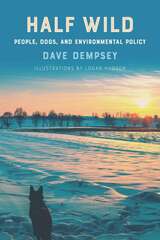 Half Wild: People, Dogs, and Environmental Policy
Dave Dempsey
Michigan State University Press, 2023 Humans and canines have been cohabitating for centuries, straddling a boundary that allows us to live together within and across our species. In this empathetic volume, author Dave Dempsey explores this life on the border, the overlapping planes between humans and the nonhuman world that lead to both magnificent creation and appalling destruction. Dempsey’s forty-year career as an environmentalist gives this book a nuanced context that could only be afforded by someone who has lived a half-wild existence himself, both defending and expanding the range of protections afforded to other species. As the former environmental advisor to Michigan Governor James J. Blanchard, Dempsey’s recollections also provide a unique perspective on the history of environmental policy, ruminating on how such policy reflects the way we understand ourselves in relation to the environment. Through vignettes that recall personal stories and those that outline historical events that influenced policymaking, Dempsey calls attention to the philosophical question of how we as humans relate to animals and our environment.
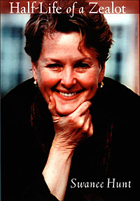 Half-Life of a Zealot
Swanee Hunt
Duke University Press, 2006 Swanee Hunt’s life has lived up to her Texas-size childhood. Daughter of legendary oil magnate H. L. Hunt, she grew up in a household dominated by an arch-conservative patriarch who spawned a brood of colorful offspring. Her family was nothing if not zealous, and that zeal—albeit for more compassionate causes—propelled her into a mission that reaches around the world. Half-Life of a Zealot tells how the girl who spoke against “Reds” alongside her father became a fierce advocate for progressive change in America and abroad, an innovative philanthropist, and Bill Clinton’s Ambassador to Austria. In captivating prose, Hunt describes the warmth and wear of Southern Baptist culture, which instilled in her a calling to help those who are vulnerable. The reader is drawn into her full-throttle professional life as it competes with critical family needs. Hunt gives a remarkably frank account of her triumphs and shortcomings; her sorrows, including a miscarriage and the failure of a marriage; the joys and struggles of her second marriage; and her angst over the life-threatening illness of one of her three children. She is candid about the opportunities her fortune has created, as well as the challenge of life as an heiress. Much of Swanee Hunt’s professional life is devoted to expanding women’s roles in making and shaping public policy. She is the founding director of Harvard’s Women and Public Policy Program at the Kennedy School of Government, chair of the Initiative for Inclusive Security, and president of the Hunt Alternatives Fund. Swanee Hunt’s autobiography brims over with strong women: her mother, whose religious faith and optimism were an inspiration; her daughter, who fights the social stigma of mental disorders; the women of war-torn Bosnia, who transformed their grief into action; and friends like Hillary Clinton, who used her position as First Lady to strengthen the voices of others. Hunt is one more strong woman. Half-Life of a Zealot is her story—so far.
 The Half-Life of Deindustrialization: Working-Class Writing about Economic Restructuring
Sherry Lee Linkon
University of Michigan Press, 2018 Starting in the late 1970s, tens of thousands of American industrial workers lost jobs in factories and mines. Deindustrialization had dramatic effects on those workers and their communities, but its longterm effects continue to ripple through working-class culture. Economic restructuring changed the experience of work, disrupted people’s sense of self, reshaped local landscapes, and redefined community identities and expectations. Through it all, working-class writers have told stories that reflect the importance of memory and the struggle to imagine a different future. These stories make clear that the social costs of deindustrialization affect not only those who lost their jobs but also their children, their communities, and American culture.
Through analysis of poetry, fiction, creative nonfiction, film, and drama, The Half-Life of Deindustrialization shows why people and communities cannot simply “get over” the losses of economic restructuring. The past provides inspiration and strength for working-class people, even as the contrast between past and present highlights what has been lost in the service economy. The memory of productive labor and stable, proud working-class communities shapes how people respond to contemporary economic, social, and political issues. These stories can help us understand the resentment, frustration, pride, and persistence of the American working class.
Half-Lit Houses
Tina Chang
Four Way Books, 2004 Tina Chang’s poems address the problems of family and heritage, initially inhabiting formally patterned stanzas that mimic the boundaries and bonds that are her subject, and then opening into free(-er) verse as the collection progresses and tries to break out of what has been imposed--both narratively and technically. These are passionate and accessible poems, simple in diction and declaration, elegant in image and syntax.
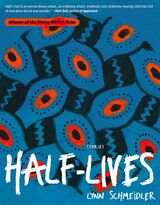 Half-Lives
Lynn Schmeidler
Autumn House Press, 2024 A playful debut short story collection imagining women’s lives in a world free of social limitations.
Amid heightened restrictions about what women can and cannot do with their bodies, Lynn Schmeidler’s debut short story collection, Half-Lives, is a humane, absurd, and timely collection of narratives centering on women’s bodies and psyches. Playful and experimental, these sixteen stories explore girlhood, sexuality, motherhood, identity, and aging in a world where structures of societal norms, narrative, gender, and sometimes even physics do not apply. The protagonists grapple with the roles they choose and with those that are thrust upon them as they navigate their ever-evolving emotional lives. A woman lists her vagina on Airbnb, Sleeping Beauty is a yoga teacher who lies in state on the dais of her mother’s studio, and a museum intern writes a confession of her affair in the form of a hijacked museum audio guide.
Half-Lives is the 2023 Rising Writer Prize winner, selected by Matt Bell.
Half-Truths and One-and-a-Half Truths: Selected Aphorisms
Karl Kraus
University of Chicago Press, 1990 "An aphorism never coincides with the truth: it is either a half-truth or one-and-a-half truths," wrote Kraus. The aphorism was "a sub-genre [Kraus] considered the height of linguistic integrity. . . . With the help of notes and introductions by Zohn, the subtlety and archness of Kraus' linguistic gifts shine through."—Peter Filkins, Bloomsbury Review
"Kraus is a superb aphorist."—D. J. Enright, New York Review of Books
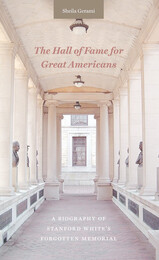 The Hall of Fame for Great Americans: A Biography of Stanford White's Forgotten Memorial
Sheila Gerami
University of Tennessee Press, 2024 The Hall of Fame for Great Americans provides a window into the cultural changes taking place in the United States from the turn of the twentieth century into the twenty-first. This book is the first examination of the institutional and social history of America’s first hall of fame, from its dynamic opening in 1901 through its protracted decline in the late twentieth century and its brief return to relevancy in the early twenty-first century.
It also examines in depth what is arguably the least studied project of Stanford White, one of the most distinguished architects of the Gilded Age. Originally designed for New York University’s new campus in the Bronx, the Hall of Fame once housed ninety-eight bronze busts of men and women deemed “great Americans” within its elegant colonnade, including the likes of George Washington, Nathaniel Hawthorne, Booker T. Washington, Susan B. Anthony, and Robert E. Lee.
The Hall was conceived when the Great Man theory dominated American thought. However, as times changed, challenges to ideas concerning greatness and heroism grew, and heroes once celebrated were scrutinized for their flaws. The monument is now a shell of its former glory and largely forgotten, and the NYU campus that once housed the colonnade was eventually sold to Bronx Community College.
In 2017, following the violent demonstrations in Charlottesville, Virginia, by white supremacists attempting to prevent the removal of a monument to General Lee, Andrew Cuomo, then governor of New York, thrust the Hall of Fame back into the limelight by ordering the busts of Lee and Stonewall Jackson to be removed. This action joined a national trend to remove monuments deemed offensive. Gerami argues that the rise and fall of this institution mirrors the nation’s changing conception of what comprises a hero. This biography of a public art memorial answers questions about the importance of art history and the cultural evolution of what it means to be great in America.
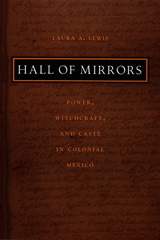 Hall of Mirrors: Power, Witchcraft, and Caste in Colonial Mexico
Laura A. Lewis
Duke University Press, 2003 Through an examination of caste in sixteenth- and seventeenth-century Mexico, Hall of Mirrors explores the construction of hierarchy and difference in a Spanish colonial setting. Laura A. Lewis describes how the meanings attached to the categories of Spanish, Indian, black, mulatto, and mestizo were generated within that setting, as she shows how the cultural politics of caste produced a system of fluid and relational designations that simultaneously facilitated and undermined Spanish governance. Using judicial records from a variety of colonial courts, Lewis highlights the ethnographic details of legal proceedings as she demonstrates how Indians, in particular, came to be the masters of witchcraft, a domain of power that drew on gendered and hegemonic caste distinctions to complicate the colonial hierarchy. She also reveals the ways in which blacks, mulattoes, and mestizos mediated between Spaniards and Indians, alternatively reinforcing Spanish authority and challenging it through alliances with Indians. Bringing to life colonial subjects as they testified about their experiences, Hall of Mirrors discloses a series of contradictions that complicate easy distinctions between subalterns and elites, resistance and power.
The Hall of the North American Indian: Change and Continuity
Hillel S. Burger
Harvard University Press, 1990 In 1990, the Peabody Museum reopened its Hall of the North American Indian, which since the late nineteenth century has displayed the most signifcant objects from the museum's vast Native American collections. In stunning full-page color photographs by Hillel Burger, this catalog captures the extraordinary richness of the collections.
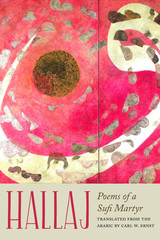 Hallaj: Poems of a Sufi Martyr
Translated from the Arabic by Carl W. Ernst
Northwestern University Press, 2018 Winner of the Global Humanities Translation Prize
Hallaj is the first authoritative translation of the Arabic poetry of Husayn ibn Mansur al-Hallaj, an early Sufi mystic. Despite his execution in Baghdad in 922 and the subsequent suppression of his work, Hallaj left an enduring literary and spiritual legacy that continues to inspire readers around the world. In Hallaj, Carl W. Ernst offers a definitive collection of 117 of Hallaj’s poems expertly translated for contemporary readers interested in Middle Eastern and Sufi poetry and spirituality.
Ernst’s fresh and direct translations reveal Hallaj’s wide range of themes and genres, from courtly love poems to metaphysical reflections on union with God. In a fascinating introduction, Ernst traces Hallaj’s dramatic story within classical Islamic civilization and early Arabic Sufi poetry. Setting himself apart by revealing Sufi secrets to the world, Hallaj was both celebrated and condemned for declaring: “I am the Truth.”
Expressing lyrics and ideas still heard in popular songs, the works of Hallaj remain vital and fresh even a thousand years after their composition. They reveal him as a master of spiritual poetry centuries before Rumi, who regarded Hallaj as a model. This unique collection makes it possible to appreciate the poems on their own, as part of the tragic legend of Hallaj, and as a formidable legacy of Middle Eastern culture.
The Global Humanities Translation Prize is awarded annually to a previously unpublished translation that strikes the delicate balance between scholarly rigor, aesthetic grace, and general readability, as judged by a rotating committee of Northwestern faculty, distinguished international scholars, writers, and public intellectuals. The Prize is organized by the Global Humanities Initiative, which is jointly supported by Northwestern University’s Buffett Institute for Global Studies and Kaplan Institute for the Humanities.
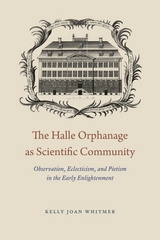 The Halle Orphanage as Scientific Community: Observation, Eclecticism, and Pietism in the Early Enlightenment
Kelly Joan Whitmer
University of Chicago Press, 2015 Founded around 1700 by a group of German Lutherans known as Pietists, the Halle Orphanage became the institutional headquarters of a universal seminar that still stands largely intact today. It was the base of an educational, charitable, and scientific community and consisted of an elite school for the sons of noblemen; schools for the sons of artisans, soldiers, and preachers; a hospital; an apothecary; a bookshop; a botanical garden; and a cabinet of curiosity containing architectural models, naturalia, and scientific instruments. Yet, its reputation as a Pietist enclave inhabited largely by young people has prevented the organization from being taken seriously as a kind of scientific academy—even though, Kelly Joan Whitmer shows, this is precisely what it was.
The Halle Orphanage as Scientific Community calls into question a long-standing tendency to view German Pietists as anti-science and anti-Enlightenment, arguing that these tendencies have drawn attention away from what was actually going on inside the orphanage. Whitmer shows how the orphanage’s identity as a scientific community hinged on its promotion of philosophical eclecticism as a tool for assimilating perspectives and observations and working to perfect one’s abilities to observe methodically. Because of the link between eclecticism and observation, Whitmer reveals, those teaching and training in Halle’s Orphanage contributed to the transformation of scientific observation and its related activities in this period.
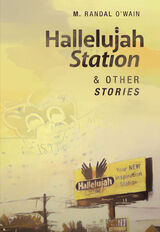 Hallelujah Station and Other Stories
M. Randal O'Wain
Autumn House Press, 2020 M. Randal O’Wain’s debut short story collection, Hallelujah Station and Other Stories, introduces readers to a wide and diverse cast of characters struggling with and responding to changes and loss. These gritty and poignant stories follow the tragic parts of life, the pieces that may neither start nor end in comfortable resolution and the pieces that make up complex realities. In the first story, a former drug dealer reflects on a life-changing decision he made years ago that ended up hurting the person he most wanted to protect. Later in the collection, we meet a would-be robber who turns out, in strange ways, to be the hero. O’Wain’s characters are often deeply flawed or totally lost, but in each instance, these traits serve to reveal the characters as real, compassionate, and, ultimately, human. Sprinkled with humor and heartache, O’Wain’s stories bring us into contact with the curious, the tragic, and the authentic.
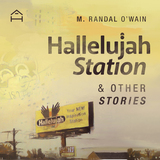 Hallelujah Station and Other Stories
M. Randal O'Wain
Autumn House Press, 2020 M. Randal O’Wain’s debut short story collection, Hallelujah Station and Other Stories, introduces readers to a wide and diverse cast of characters struggling with and responding to changes and loss. These gritty and poignant stories follow the tragic parts of life, the pieces that may neither start nor end in comfortable resolution and the pieces that make up complex realities. In the first story, a former drug dealer reflects on a life-changing decision he made years ago that ended up hurting the person he most wanted to protect. Later in the collection, we meet a would-be robber who turns out, in strange ways, to be the hero. O’Wain’s characters are often deeply flawed or totally lost, but in each instance, these traits serve to reveal the characters as real, compassionate, and, ultimately, human. Sprinkled with humor and heartache, O’Wain’s stories bring us into contact with the curious, the tragic, and the authentic.
The Hall-Mills Murder Case: The Minister and the Choir Singer
Kunstler, William
Rutgers University Press, 1980 On Saturday, September 16, 1922, the bodies of Edward Hall, a handsome Episcopal rector, and Eleanor Mills, his choir singer and lover, were found near a lovers' lane in New Jersey. Four years later, the minister's widow and her brothers were tried for the murders and acquitted. Renowned criminal lawyer William M. Kunstler tells the tale.
Hallowed: New and Selected Poems
Patricia Fargnoli
Tupelo Press, 2017 Hallowed features selections from Patricia Fargnoli’s four previous books along with twenty-four new poems. Here is a celebration of poetic endurance, filled with quietly distinctive cadences and images closely seen, now freshly understood.
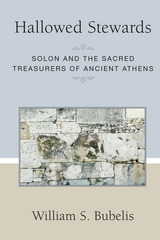 Hallowed Stewards: Solon and the Sacred Treasurers of Ancient Athens
William S. Bubelis
University of Michigan Press, 2016 Students of ancient Athenian politics, governance, and religion have long stumbled over the rich evidence of inscriptions and literary texts that document the Athenians’ stewardship of the wealth of the gods. Likewise, Athens was well known for devoting public energy and funds to all matters of ritual, ranging from the building of temples to major religious sacrifices. Yet, lacking any adequate account of how the Athenians organized that commitment, much less how it arose and developed, ancient historians and philologists alike have labored with only a paltry understanding of what was a central concern to the Athenians themselves. That deficit of knowledge, in turn, has constrained and diminished our grasp of other essential questions surrounding Athenian society and its history, such as the nature of political life in archaic Athens, and the forces underlying Athens’ imperial finances.
Hallowed Stewards closely examines those magistracies that were central to Athenian religious efforts, and which are best described as “sacred treasurers.” Given the extensive but fragmentary evidence available to us, which consists mainly of inscriptions but includes such texts as the ps.-Aristotelian Constitution of the Athenians, no catalog-like approach to these offices could properly encompass their details, much less their wider significance. By situating the sacred treasurers within a broader religious and historical framework, Hallowed Stewards not only provides an incisive portrait of the treasurers themselves but also elucidates how sacred property and public finance alike developed in ancient Athens.
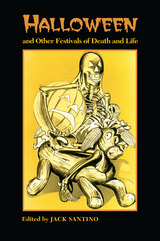 Halloween and Other Festivals of Death and Life
Jack Santino
University of Tennessee Press, 1994 Why do we celebrate Halloween? No one gets the day off, and unlike all other major holidays it has no religious or governmental affiliation. A survivor of our pre-Christian, agrarian roots, it has become one of the most popular and widely celebrated festivals on the contemporary American calendar.
Jack Santino has put together the first collection of essays to examine the evolution of Halloween from its Celtic origins through its adaptation into modern culture. Using a wide variety of perspectives and approaches, the thirteen essayists examine customs, communities, and material culture to reveal how Halloween has manifested itself throughout all aspects of our society to become not just a marginal survivor of a dying tradition but a thriving, contemporary, post-industrial festival. Its steadily increasing popularity, despite overcommercialization and criticism, is attributed to its powerful symbolism that employs both pre-Christian images and concepts from popular culture to appeal to groups of all ages, orientations, and backgrounds. However, the essays in this volume also suggest that there is something ironic and unsettling about the immense popularity of a holiday whose main images are of death, evil, and the grotesque.
Halloween and other Festivals of Death and Life is a unique contribution that questions our concepts of religiosity and spirituality while contributing to our understanding of Halloween as a rich and diverse reflection of our society’s past, present, and future identity.
The Editor: Jack Santino is an associate professor in the department of popular culture at Bowling Green State University, Bowling Green, Ohio.
Hallyu 2.0: The Korean Wave in the Age of Social Media
Sangjoon Lee and Abé Mark Nornes, editors
University of Michigan Press, 2015 Collectively known as Hallyu, Korean music, television programs, films, online games, and comics enjoy global popularity, thanks to new communication technologies. In recent years, Korean popular culture has also become the subject of academic inquiry. Whereas the Hallyu’s impact on Korea’s national image and domestic economy, as well as on transnational cultural flows, have received much scholarly attention, there has been little discussion of the role of social media in Hallyu’s propagation. Contributors to Hallyu 2.0: The Korean Wave in the Age of Social Media explore the ways in which Korean popular cultural products are shared by audiences around the globe; how they generate new fans, markets, and consumers through social media networks; and how scholars can analyze, interpret, and envision the future of this unprecedented cultural phenomenon.
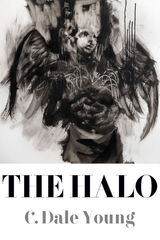 The Halo
C. Dale Young
Four Way Books, 2016 The Halo is quasi-autobiography about a man who has wings and wants desperately to simply be human. Tracking from adolescence through adulthood, it explores an accident that temporarily paralyzes him and exposes him to human weakness all the way to his transformation into something more powerful than even he realizes. It explores a personal evolution from being prey to becoming the hunter. Praise for C. Dale Young “Young's poems are so fierce and serrated.” —Jeff Gordinier, New York Times Book Review “Young is a doctor as well as a poet, and [his work] demonstrates a skilled physician's combination of empathy and formal precision.” —David Orr, NPR “Sometimes the ability to convey information compactly and quickly has moral grace. [Young's] writing can put garrulous narration or evasive speechifying to shame.” —Robert Pinsky, The Washington Post “[W]e cannot rely on art to tell us the whole truth or even depend upon those who are supposed to protect us. And yet, [C. Dale Young] is compelled to make visible the darkness around us. Whether or not that itself is an act of tenderness, Young refuses to say for certain. And that is what makes his poetry a crucible where readers must confront their own beliefs—about poetry, society, and themselves.” —Christopher Hennessy, Ploughshares
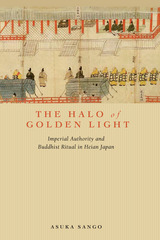 The Halo of Golden Light: Imperial Authority and Buddhist Ritual in Heian Japan
Asuka Sango
University of Hawaii Press, 2015 In this pioneering study of the shifting status of the emperor within court society and the relationship between the state and the Buddhist community during the Heian period (794–1185), Asuka Sango details the complex ways in which the emperor and other elite ruling groups employed Buddhist ritual to legitimate their authority. Although considered a descendant of the sun goddess, Amaterasu, the emperor used Buddhist idiom, particularly the ideal king as depicted in the Golden Light Sūtra, to express his right to rule. Sango’s book is the first to focus on the ideals presented in the sūtra to demonstrate how the ritual enactment of imperial authority was essential to justifying political power. These ideals became the basis of a number of court-sponsored rituals, the most important of which was the emperor’s Misai-e Assembly. Sango deftly traces the changes in the assembly’s format and status throughout the era and the significant shifts in the Japanese polity that mirrored them. In illuminating the details of these changes, she challenges dominant scholarly models that presume the gradual decline of the political and liturgical influence of the emperor over the course of the era. She also compels a reconsideration of Buddhism during the Heian as “state Buddhism” by showing that monks intervened in creating the state’s policy toward the religion to their own advantage. Her analysis further challenges the common view that Buddhism of the time was characterized by the growth of private esoteric rites at the expense of exoteric doctrinal learning. The Halo of Golden Light draws on a wide range of primary sources—from official annals and diaries written by courtiers and monks to ecclesiastical records and Buddhist texts—many of them translated or analyzed for the first time in English. In so doing, the work brings to the surface surprising facets in the negotiations between religious ideas and practices and the Buddhist community and the state.
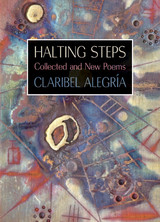 Halting Steps: Collected and New Poems
Claribel Alegria
Northwestern University Press, 2013 Halting Steps represents the most complete single-volume retrospective in English of Claribel Alegría’s seven-decade career. The volume collects all of Alegría’s poems from her fourteen previously published books and debuts several new poems under the title “Otherness.” Her poetry is not only lyrical and introspective but also politically engaged. Her verse speaks forcefully, specifically, and fearlessly to matters of social justice in her region. She strikes a universal theme, however, in giving a voice to individuals of all classes in their struggle against oppression, but especially women who must contend with a system in which men hold the power and women are excluded. Alegría demonstrates her remarkable range with deeply personal poems, perhaps most notably in the poem cycle “Sorrow,” as she moves steadily through the waves of grief she experiences after her husband’s death. In Halting Steps, both longtime admirers and those new to her work can appreciate the sustained creative power of Claribel Alegría’s poems.
Halve: Poems
Kristina Jipson
Tupelo Press, 2016 Kristina Jipson’s Halve peels away the layers of orderly narrative with which we try and tame the chaos of mourning. At once frank and elusive, Jipson’s poems resist the pull of storytelling and personal confiding, instead using formal variation to embody emotion and memory. These poems lay bare the experience of losing a brother and evoke the haunting that results as language fails to contain either grief or the love that precedes such a loss.
 Halving It All: How Equally Shared Parenting Works
Francine M. Deutsch
Harvard University Press, 2000 The best way to have it all--both a full family life and a career--is to halve it all. That's the message of Francine Deutsch's refreshing and humane book, based on extensive interviews with a wide range of couples. Deutsch casts a skeptical eye on the grim story of inequality that has been told since women found themselves working a second shift at home. She brings good news: equality based on shared parenting is possible, and it is emerging all around us. Some white-collar fathers achieve as well as talk about equality, and some blue-collar parents work alternate shifts to ensure that one parent can always be with the children.
Using vivid quotations from her interviews, Deutsch tells the story of couples who share parenting equally, and some who don't. The differences between the groups are not in politics, education, or class, but in the way they negotiate the large and small issues--from whose paid job is "important" to who applies the sunscreen. With the majority of mothers in the workforce, parents today have to find ways of sharing the work at home. Rigid ideas of "good mothers" and "good fathers," Deutsch argues, can be transformed into a more flexible reality: the good parent.
Halving It All takes the discussion beyond shrill ideological arguments about working mothers and absent fathers. Deutsch shows how, with the best of intentions, people perpetuate inequalities and injustices on the home front, but also, and more important, how they can devise more equal arrangements, out of explicit principles, or simply out of fairness and love.
Hamann and the Tradition
Lisa Marie Anderson
Northwestern University Press, 2012 Recent years have witnessed a resurgence of scholarly interest in the work of Johann Georg Hamann (1730–1788), across disciplines. New translations of work by and about Hamann are appearing, as are a number of books and articles on Hamann’s aesthetics, theories of language and sexuality, and unique place in Enlightenment and counter-Enlightenment thought. Edited by Lisa Marie Anderson, Hamann and the Tradition gathers established and emerging scholars to examine the full range of Hamann’s impact—be it on German Romanticism or on the very practice of theology. Of particular interest to those not familiar with Hamann will be a chapter devoted to examining—or in some cases, placing—Hamann in dialogue with other important thinkers, such as Socrates, David Hume, Friedrich Nietzsche, Martin Buber, Franz Rosenzweig, and Ludwig Wittgenstein.
Hamas: A Beginner's Guide
Khaled Hroub
Pluto Press, 2010 This beginner's guide to Hamas has been fully revised and updated. It now covers all the major events since the January 2006 elections, including the conflict with Fatah and Israel's brutal offensive in Gaza at the end of 2008.
Explaining the reasons for Hamas's popularity, leading Al-Jazeera journalist and Cambridge academic Khaled Hroub provides the key facts that are so often missing from conventional news reports. It's a one-stop guide that gives a clear overview of Hamas's history, key beliefs, and its political agenda.
This unique book provides a refreshing perspective that gets to the heart of Hamas.
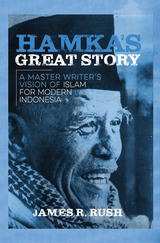 Hamka’s Great Story: A Master Writer’s Vision of Islam for Modern Indonesia
James R. Rush
University of Wisconsin Press, 2016 Hamka’s Great Story presents Indonesia through the eyes of an impassioned, popular thinker who believed that Indonesians and Muslims everywhere should embrace the thrilling promises of modern life, and navigate its dangers, with Islam as their compass.
Hamka (Haji Abdul Malik Karim Amrullah) was born when Indonesia was still a Dutch colony and came of age as the nation itself was emerging through tumultuous periods of Japanese occupation, revolution, and early independence. He became a prominent author and controversial public figure. In his lifetime of prodigious writing, Hamka advanced Islam as a liberating, enlightened, and hopeful body of beliefs around which the new nation could form and prosper. He embraced science, human agency, social justice, and democracy, arguing that these modern concepts comported with Islam’s true teachings. Hamka unfolded this big idea—his Great Story—decade by decade in a vast outpouring of writing that included novels and poems and chatty newspaper columns, biographies, memoirs, and histories, and lengthy studies of theology including a thirty-volume commentary on the Holy Qur’an. In introducing this influential figure and his ideas to a wider audience, this sweeping biography also illustrates a profound global process: how public debates about religion are shaping national societies in the postcolonial world.
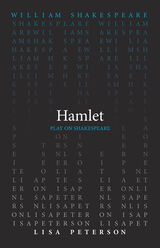 Hamlet
William Shakespeare
Arizona Center for Medieval and Renaissance Studies, 2021 To thine own text be true—Lisa Peterson’s translation of Hamlet into contemporary American English makes the play accessible to new audiences while keeping the soul of Shakespeare’s writing intact.
Lovers of Shakespeare’s language take heart: Lisa Peterson’s translation of Hamlet into contemporary American English was guided by the principle of “First, do no harm.” Leaving the most famous parts of Hamlet untouched, Peterson untied the language knots that can make the rest of the play difficult to understand in a single theatrical viewing. Peterson’s translation makes Hamlet accessible to new audiences, drawing out its timeless themes while helping to contextualize "To be, or not to be: that is the question," and “Something is rotten in the state of Denmark,” so that contemporary audiences can feel their full weight.
This translation of Hamlet was written as part of the Oregon Shakespeare Festival’s Play On! project, which commissioned new translations of thirty-nine Shakespeare plays. These translations present work from "The Bard" in language accessible to modern audiences while never losing the beauty of Shakespeare’s verse. Enlisting the talents of a diverse group of contemporary playwrights, screenwriters, and dramaturges from diverse backgrounds, this project reenvisions Shakespeare for the twenty-first century. These volumes make these works available for the first time in print—a new First Folio for a new era.
 Hamlet
shakespeare
St. Augustine's Press, 2024 This edition is the first that treats Hamlet as the work of a philosophical poet concerned with knowing the nature of the world, particularly the human world. Where conventional editions lift the play out of its specific setting and analyze it in the light of the social, cultural, and political circumstances of Elizabethan England, Jan Blits takes the play’s dramatic setting of early Renaissance Denmark as indispensable to understanding its rich meaning. In providing notations and commentary on Hamlet, Blits sets aside the historicist principle or prejudice, pervasive throughout literary studies today. Blits, by contrast, strives to understand the play entirely on its own terms. He inflicts no literary or philosophic theory—no parochial professional preconceptions—upon the play. Instead, he aims to be fully receptive to what Shakespeare wrote and try to draw out of the play the substance that he deliberately put into it. His treatment of Horatio is particularly stunning in this regard.
Though they differ from each other, there are two generally trustworthy texts of Hamlet—namely, the Second Quarto (1604–5) and the Folio (1623). Blits does not consult the First Quarto (1603), which contains a much different dialogue, some different character names, and omits some famous passages. Blits points out important variations and refrains from pronouncing which are clearly right or wrong. He omits references to secondary works (including his own) as distractions from the play itself. The Bibliography lists many primary and secondary readings that readers will find helpful. He follows the line-numbering of the New Cambridge Shakespeare Edition, edited by Philips Edwards.
Teachers and students of Shakespeare will find a valuable resource in Blits' new edition of Hamlet, which brings readers as close to the mind and heart of the real Shakespeare as possible and remains untouched by the fingerprints of literary theory and other mechanisms unknown and inconsequential to Shakespeare. This is also an indispensable tool in helping teachers in one of the greatest challenges of the classical classroom––namely, how to teach Shakespeare?
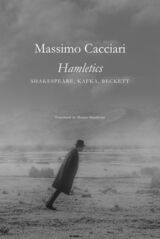 Hamletics: Shakespeare, Kafka, Beckett
Massimo Cacciari
Seagull Books, 2023 One of Italy's best-known contemporary philosophers and leftists offers a literature-informed take on our contemporary political situation.
During the dramatic course of the twentieth century, amid the clash of the titans which marked that era, humanity could still think in terms of partisan struggles in which large masses took sides against one another. The new millennium, by contrast, appears to have opened under the guise of generalized insecurity, which pertains not only to the historical and social situation, or to one’s personal psychological predicament, but to our very being. The Earth’s current faltering and the twilight of every convention that might govern it—where roles, images, and languages become confused by a lack of direction and distance—were already powerfully prophesied in Shakespeare’s Hamlet, and later in the works of Kafka and Beckett. In Hamletics, Massimo Cacciari, one of Italy’s foremost philosophers and leftist political figures, establishes a dialogue between these fateful authors, exploring the relationship between European nihilism and the aporias of action in the present.
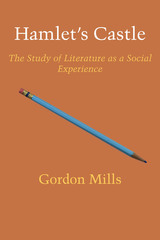 Hamlet's Castle: The Study of Literature as a Social Experience
By Gordon Mills
University of Texas Press, 1976 Hamlet's Castle is both a theoretical and a practical examination of the interactions that take place in a literary classroom. The book traces the source of literature's power to the relationship between its illusional quality and its abstract meaning and relates these elements to the process by which a group, typically an academic class, forms a judgment about a literary work. In focusing on the importance of the exchange of ideas by readers, Gordon Mills reveals a new way of looking at literature as well as a different concept of the social function of the literary classroom and the possible application of this model to other human activities. The three fundamental elements that constitute Mills's schema are the relationship between a reader and the illusional quality of literature, the relationship between a reader and the meaning of a text, and the concept of social experience within the environment of a text. The roles of illusion and meaning in a text are explored in detail and are associated with areas outside literature, including science and jurisprudence. There is an examination of the way in which decisions are forced by peers upon one another during discussion of a literary work-an exchange of opinion which is commonly a source of pleasure and insight, sought for its own sake. In the course of his study, Mills shows that the act of apprehending a literary structure resembles that of apprehending a social structure. From this relationship, he derives the social function of the literary classroom. In combining a theoretical analysis with the practical objective of determining what value can be found in the study of literature by groups of people, Mills has produced a critical study of great significance. Hamlet's Castle will change concepts about the purpose of teaching literature, affect the way in which literature is taught, and become involved in the continuing discussion of the relationship of literary studies to other disciplines.
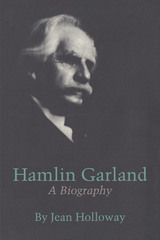 Hamlin Garland: A Biography
By Jean Holloway
University of Texas Press, 1960 Hamlin Garland’s Main-Travelled Roads is recognized as one of the early landmarks of American literary realism. But Garland’s shift in mid-career from the harsh verisimilitude of Prairie Folks and Prairie Songs to a romanticizing of the Far West, and from ardent espousal of the principles of “veritism” to violent denunciations of naturalism, is a paradox which has long puzzled literary historians. In tracing the evolution of Garland’s work, the various reactions of his stories under the influence of editorial comment and of contemporary critical reaction, Jean Holloway suggests that the Garland apostasy was an illusion produced by his very intellectual immobility amidst the swirling currents of American thought. His extensive correspondence with Gilder of the Century, Alden of Harper’s Monthly, McClure of McClure’s, and Bok of the Ladies’ Home Journal is adduced in support of the thesis that the writer’s choices of subject and of treatment were psychologically forced rather than conditioned primarily by literary theory. As a subject for biography, however, Garland has an appeal far beyond the scope of his literary influence. The friendships of this gregarious peripatetic with the famous began with Howells, Twain, Whitman, and Stephen Crane, stretched down the years to include such younger men as Bret Harte and Carl Van Doren, and crossed the seas to embrace such British literary lions as Barrie, Shaw, and Kipling. Garland’s fervent espousal of “causes”—the Single Tax Movement, psychic experimentation, Indian rights-brought him into close contact with other prominent men—Henry George, Theodore Roosevelt, and William Jennings Bryan. These public figures form the incidental characters in Garland’s spate of autobiographical works. Yet it is the central figure of his own story which has become permanently identified with the “Middle Border,” that region “between the land of the hunter and the harvester” which Augustus Thomas defined as “wherever Hamlin Garland is.” In A Son of the Middle Border Garland nostalgically recreated his boyhood on the frontier and, regardless of the detractions of literary critics, preserved for posterity an important segment of American social history.
Hammarskjöld: A Life
Roger Lipsey
University of Michigan Press, 2015 After his mysterious death, Dag Hammarskjöld was described by John F. Kennedy as the "greatest statesman of our century." Second secretary-general of the United Nations (1953 - 61), he is the only person to have been awarded the Nobel Peace Prize posthumously. Through extensive research in little explored archives and personal correspondence, Roger Lipsey has produced the definitive biography of Dag Hammarskjöld. Hammarskjöld: A Life provides vivid new insights into the life and mind of a truly great individual. Hammarskjöld the statesman and Hammarskjöld the author of the classic spiritual journal Markings meet in this new biography - and the reader will meet them both in these pages. A towering mid-twentieth-century figure, Hammarskjöld speaks directly to our time.
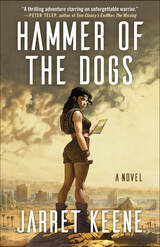 Hammer of the Dogs: A Novel
Jarret Keene
University of Nevada Press, 2023 A postapocalyptic adventure in Las Vegas for readers of all ages.
Set in the wasteland of post-apocalyptic Las Vegas, Hammer of the Dogs is a literary dystopian adventure filled with high-octane fun starring twenty-one-year-old Lash. With her high-tech skill set and warrior mentality, Lash is a master of her own fate as she helps to shield the Las Vegas valley’s survivors and protect her younger classmates at a paramilitary school holed up in Luxor on the Las Vegas Strip. After graduation, she’ll be alone in fending off the deadly intentions and desires of the school’s most powerful opponents.
When she’s captured by the enemy warlord, she’s surprised by two revelations: He’s not the monster her headmaster wants her to believe and the one thing she can’t safeguard is her own heart. Hammer of the Dogs celebrates the courageousness of a younger generation in the face of authority while exploring the difficult choices a conscionable young woman must make with her back against a blood-spattered wall. It’s a story of transformation and maturity, as Lash grapples with her own identity and redefines the glittering Las Vegas that Nevada is known for.
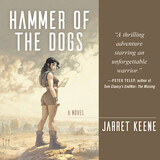 Hammer of the Dogs: A Novel
Jarret Keene
University of Nevada Press, 2023 A postapocalyptic adventure in Las Vegas for readers of all ages.
Set in the wasteland of post-apocalyptic Las Vegas, Hammer of the Dogs is a literary dystopian adventure filled with high-octane fun starring twenty-one-year-old Lash. With her high-tech skill set and warrior mentality, Lash is a master of her own fate as she helps to shield the Las Vegas valley’s survivors and protect her younger classmates at a paramilitary school holed up in Luxor on the Las Vegas Strip. After graduation, she’ll be alone in fending off the deadly intentions and desires of the school’s most powerful opponents.
When she’s captured by the enemy warlord, she’s surprised by two revelations: He’s not the monster her headmaster wants her to believe and the one thing she can’t safeguard is her own heart. Hammer of the Dogs celebrates the courageousness of a younger generation in the face of authority while exploring the difficult choices a conscionable young woman must make with her back against a blood-spattered wall. It’s a story of transformation and maturity, as Lash grapples with her own identity and redefines the glittering Las Vegas that Nevada is known for.
Hammer with No Master: Poems of René Char (French and English Edition)
René Char
Tupelo Press, 2016 In his foreword to Stone Lyre, Nancy Naomi Carlson’s previous collection of René Char translations, Ilya Kaminsky praised “the intensity, the dream-like language, the gravity of tone, and the constant impression that one is reading not words in the language, but sparks of flames.”
Stone Lyre was a selection of poems from Char’s numerous volumes of poems; Carlson’s new Hammer with No Master is a discrete and continuous work, the first English translation of Char’s Le marteau sans maître, first published in 1934 — a time of rumbling menace that our time resembles.
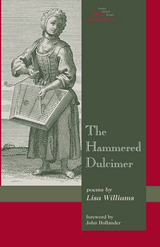 Hammered Dulcimer
Lisa Williams
Utah State University Press, 2000 Lisa William's poems are infused with what John Hollander calls "a guarded wonder." A poet of unique vision, she seems always to be "looking at," with special attention to the experience of the senses. Moreover, Williams is equally concerned with epistemology—the how of seeing. And it is perhaps this quality of attention that informs her interest in the formulations of poetry itself, in its constructed dimension. Her control of the line, of rhythmic possibilities, of structures both formal and free, is evident in every poem. Together, William's original voice and her poetic finesse allow her to create those harmonies of wonder evoked by the very instrument, the hammered dulcimer, that gives her collection its name. Judge for the 1998 May Swenson Poetry Award was John Hollander, poet, critic, professor. Long a major figure in American letters, Hollander was a personal friend to May Swenson, and has influenced the work of many of our best emerging poetic voices.
 Han Heroes and Yamato Warriors: Competing Masculinities in Chinese and Japanese War Cinema
Amanda Weiss
Hong Kong University Press, 2023 An exploration of collective memory through the lens of East Asian film during World War II.
Taking the “tidal wave” of memory in the late twentieth and early twenty-first century as its starting point, this monograph explores the collective memory of World War II in East Asia (1937–1945) through film. Weiss argues that Chinese, Japanese, and American remembrance of World War II is intertwined in what she terms a “memory loop,” the transnational mediation and remediation of war narratives. Gender is central to this process, as the changing representation of male soldiers, political leaders, and patriarchal father figures within these narratives reveals Japanese and Chinese challenges to each other and to the perceived “foundational” American narrative of the war. This process continues to intensify due to the globally visible nature of the memory loop, which drives this cycle of transmission, translation, and reassessment.
This volume is the first to bring together a collection of Chinese and Japanese war films that have received little attention in English-language literature. It also produces new readings of popular war memory in East Asia by revealing the gendered dimensions of collective remembrance in these films.
Hand and Mind: What Gestures Reveal about Thought
David McNeill
University of Chicago Press, 1992 Using data from more than ten years of research, David McNeill shows that gestures do not simply form a part of what is said and meant but have an impact on thought itself. Hand and Mind persuasively argues that because gestures directly transfer mental images to visible forms, conveying ideas that language cannot always express, we must examine language and gesture together to unveil the operations of the mind.
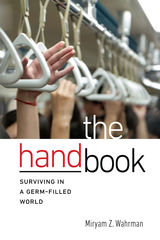 The Hand Book: Surviving in a Germ-Filled World
Miryam Z. Wahrman
Brandeis University Press, 2016 Handwashing, as part of basic hygiene, is a no-brainer. Whenever there’s an outbreak of a contagious disease, we are advised that the first line of defense is proper handwashing. Nonetheless, many people, including healthcare workers, ignore this advice and routinely fail to wash their hands. Those who neglect to follow proper handwashing protocols put us at risk for serious disease—and even death. In this well-researched book, Wahrman discusses the microbes that live among us, both benign and malevolent. She looks at how ancient cultures dealt with disease and hygiene and how scientific developments led to the germ theory, which laid the foundation for modern hygiene. She investigates hand hygiene in clinical settings, where lapses by medical professionals can lead to serious, even deadly, complications. She explains how microbes found on environmental surfaces can transmit disease and offers strategies to decrease transmission from person to person. The book's final chapter explores initiatives for grappling with ever more complex microbial issues, such as drug resistance and the dangers of residing in an interconnected world, and presents practical advice for hand hygiene and reducing infection. With chapters that conclude with handy reference lists, The Hand Book serves as a road map to safer hands and better hygiene and health. It is essential reading for the general public, healthcare professionals, educators, parents, community leaders, and politicians.
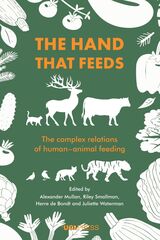 The Hand that Feeds: The Complex Relations of Human-Animal Feeding
Edited by Alexander Mullan, Riley Smallman, Herre de Bondt, and Juliette Waterman
University College London, 2025 Whether driven by affection or necessity, our feeding practices redefine the relationships between species; sometimes with profound and unexpected consequences.
Feeding animals is never a neutral act—whether in zoos, farms, backyards, or city streets, it shapes relationships, environments, and even entire ecosystems. The Hand that Feeds takes a deeper look into the complex and often-overlooked dynamics of human-animal feeding, moving beyond its utilitarian functions to explore the emotional, ethical, and ecological entanglements it creates. Through case studies spanning history to the present, this work discloses how feeding alters animal behaviors and reflects broader cultural and moral values. Why do we nurture some animals while exterminating others? How do feeding practices blur the lines between wild and domesticated life? What happens when acts of care lead to unintended harm?
Addressing everything from garden bird feeders to contested urban wildlife policies, the authors illuminate the deep significance of food in human-animal interactions. An invigorating read for scholars in environmental studies, anthropology, and history, The Hand that Feeds challenges us to reconsider the act of feeding as a powerful force in shaping multispecies worlds.
Hand Trembling, Frenzy Witchcraft, and Moth Madness: A Study of Navajo Seizure Disorders
Jerrold E. Levy
University of Arizona Press, 1987 According to traditional Navajo belief, seizures are the result of sibling incest, sexual witchcraft, or possession by a supernatural spirit—associations that have kept such disorders from being known outside Navajo families. This new study is concerned with discovering why the Navajos have accorded seizures such importance and determining their meaning in the larger context of Navajo culture. The book is based on a 14-year study of some 40 Navajo patients and on an epidemiological survey among the Navajos and among three Pueblo tribes.
Hand-Based Biometrics: Methods and technology
Martin Drahanský
The Institution of Engineering and Technology, 2018 Hand-based biometrics identifies users by unique features in their hands, such as fingerprints, palmprints, hand geometry, and finger and palm vein patterns. This book explores the range of technologies and methods under development and in use for hand-based biometrics, with evaluations of the advantages and performance of each. The inclusion of significant material on the relevant aspects of the physiology of the hand is a particularly useful and innovative feature.
A Handbook for EMC Testing and Measurement
David Morgan
The Institution of Engineering and Technology, 1994 During the 1980s the worldwide interest in electromagnetic compatibility (EMC) grew rapidly with the introduction of legislation to control the growing interference problems generated by the increased use of electronic equipment in industry and in the home. The European directive harmonising EMC measurements gave particular impetus to manufacturers and importers of electrical and electronic equipment in Europe to understand EMC design techniques and verification procedures. This book explains how equipment can be verified by testing. It discusses the nature of EMC standards world wide and describes in detail testing methods and their conduct and accuracy. In addition to standard EMC testing, topics including electrostatic discharge, nuclear electromagnetic pulse and lightning are also discussed.
 Handbook for In-Service Training in Human Services
William Crimando
Southern Illinois University Press, 1988
A practical "how-to" workbook that outlines a plan for the design and implementation of staff in-service training programs for human service agencies and facilities.
Crimando and Riggar have made every effort to guarantee the usefulness of this text to practitioners, instructors, and students. This is a working book designed to assist trainers as they acquire the knowledge and skills needed to provide thorough, systematic in-service training that will enhance human service endeavors.
The authors have organized the nineteen chapters into four parts that treat significant steps in the training-program design process. These include analyzing problems that require training solutions; developing a proposal; writing a plan of action for training; and evaluating a program. Each of the chapters combines text, examples, exercises, and supplementary readings to foster a full appreciation of the process involved. Even those topics frequently overlooked or disregarded are included: budgeting program time and financial resources, obtaining administrative commitment, and transferring and maintaining skills in the work setting.
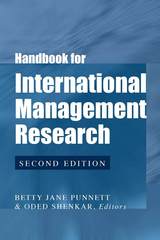 Handbook for International Management Research
Betty Jane Punnett and Oded Shenkar, Editors
University of Michigan Press, 2004 Success in business today requires an understanding of the nature of globalization and its impact on managers. Now in a fully revised second edition, The Handbook for International Management Research provides a complete and up-to-date assessment of the field of international management. Part 1 provides a useful context and overview for the book. Part 2, "Designing Effective Research," will help readers develop effective, rigorous, and theory-based research designs for international management research, including qualitative research and experimental methods. Part 3, "Topical Issues in International Management Research," explores areas such as cross-cultural management, international alliances, human resources, and negotiations research. The conclusion to the volume considers where and how the field should progress.
Intended primarily for those doing research in the field of international management, this book should also interest scholars and students of public institutions, sociology, and industrial psychology. Managers will find the book's comprehensive overview of international management to be invaluable. Its global perspective will appeal to readers around the world.
Handbook for Language Engineers
Edited by Ali Farghaly
CSLI, 2002 There is an overwhelming amount of language data on the Internet that needs to be searched, categorized, or processed—making the role of linguistics in the design of information systems a critical one. This book is a guide for linguists hoping to enter the language-processing field, as it assembles distinguished computational linguists from academia, research centers, and business to discuss how linguists can solve practical problems and improve business efficiency. Covering topics from speech recognition to web language resources, this collection will be of great value to both linguists entering the field and businesses hoping to implement linguistics-based solutions.
 Handbook for Management of Human Service Agencies
T.F. Riggar and R.E. Matkin
Southern Illinois University Press, 1986
A basic guide for individuals responsible for developing and/or operating comprehensive or specialized human service programs.
Drawing on more than a decade of classroom experience and development and incorporating standards from the Commission on Accreditation of Rehabilitation Facilities (1985 Edition), Riggar and Matkin have created a management tool that is as practical for human service providers as it is for students. Here is the fundamental management knowledge required to establish or manage all types of human service programs and facilities.
The text is organized into 23 sections that describe tasks ranging from constructing mission statements and admission criteria to developing start-up budgets and allocating space for both direct and indirect services. Each section provides definitions and guidelines, practical examples, exercises, and selected references. While the focus is on the practices of the private not-for-profit sector, those working in a profit-oriented setting will find many of the sections and exercises to be valuable aids for developing, operating, and maintaining successful programs.
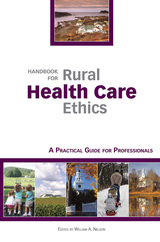 Handbook for Rural Health Care Ethics: A Practical Guide for Professionals
Edited by William A. Nelson
Dartmouth College Press, 2010 The rural community presents not only distinct health care delivery challenges but also ethical problems for clinicians and administrators of small, rural health care facilities. Health care delivered in a rural context—in closely knit, tightly interdependent small community settings—poses unique ethical considerations for clinical practitioners. For example, a provider in a resource-poor rural setting may be faced with treating a family member, friend, business associate, or neighbor, since the role separation between clinician and patient that predominates in the urban setting is less likely to occur in a small town. Because of the unique rural context, the solutions that health care providers develop to resolve complex ethics dilemmas may differ from solutions reached in urban areas. The Handbook for Rural Health Care Ethics is designed to be a useful resource for clinicians and administrators in rural settings. It draws on the available research and real-life examples to paint a picture of challenging, yet all-too-familiar ethics conflicts while offering strategies for a proactive, preventive approach to ethical issues.
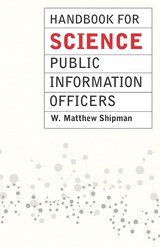 Handbook for Science Public Information Officers
W. Matthew Shipman
University of Chicago Press, 2015 Whether sharing a spectacular shot from a deep-space probe, announcing a development in genetic engineering, or crafting an easy-to-reference list of cancer risk factors, science public information officers, or PIOs, serve as scientific liaisons, connecting academic, nonprofit, government, and other research organizations with the public. And as traditional media outlets cut back on their science coverage, PIOs are becoming a vital source for science news.
W. Matthew Shipman’s Handbook for Science Public Information Officers covers all aspects of communication strategy and tactics for members of this growing specialty. It includes how to pitch a story, how to train researchers to navigate interviews, how to use social media effectively, and how to respond to a crisis. The handbook offers a wealth of practical advice while teaching science PIOs how to think critically about what they do and how they do it, so that they will be prepared to take advantage of any situation, rather than being overwhelmed by it.
For all science communicators—whether they’re starting their careers, crossing over from journalism or the research community, or professional communicators looking to hone their PIO skills—Shipman’s Handbook for Science Public Information Officers will become their go-to reference.
 Handbook of Academic Writing for Librarians
Christopher Hollister
Association of College & Research Libraries, 2014 The Handbook of Academic Writing for Librarians is the most complete reference source available for librarians who need or desire to publish in the professional literature. The Handbook addresses issues and requirements of scholarly writing and publishing in a start-to-finish manner. Standard formats of scholarly writing are addressed: research papers, articles, and books. Sections and chapters include topics such as developing scholarly writing projects in library science, the improvement of academic writing, understanding and managing the peer review process including submission, revision, and how to handle rejection and acceptance, assessing appropriateness of publishing outlets, and copyright.
This primary reference tool for the library and information science (LIS) community supports those who either desire or are required to publish in the professional literature. LIS students at the masters and doctoral levels can also benefit from this comprehensive volume.
A Handbook of Animals in Old English Texts
Todd Preston
Arc Humanities Press, 2022
A Handbook of Animals in Old English Texts is the definitive handbook for students, scholars, and observers of the non-human in early medieval England. In this interdisciplinary compendium to the animal inhabitants of medieval Britain, Preston documents each creature mentioned in the Old English literary textual canon and correlates its standard literary interpretation with relevant historical, archaeological, and ecological studies. Beyond its usefulness as a reference work, Preston’s text challenges the reader to move beyond a literary analysis of the figural beast to one that leaves space for the actual animal.
Handbook of Antenna Design, Volume 1
A.W. Rudge
The Institution of Engineering and Technology, 1982 - Authored by a multi-national group of antenna experts of international standing.
- Presents the principles and applications of antenna design, with emphasis upon key developments in the last 15 years.
- Fundamental background theory and analytical techniques explained in detail where appropriate.
- Includes extensive design data and numerous examples of practical application.
- Deals with a very wide range of antenna types, operating from very low frequencies to millimetre waves.
- New measurement techniques described in detail.
- Covers associated topics such as radomes, array signal processing and coaxial components.
- Includes design data for antennas for satellite and terrestrial communications, radar, mobile communications and broadcasting.
Handbook of Antenna Design, Volume 2
A.W. Rudge
The Institution of Engineering and Technology, 1983 - Authored by a multi-national group of antenna experts of international standing.
- Presents the principles and applications of antenna design, with emphasis upon key developments in the last 15 years.
- Fundamental background theory and analytical techniques explained in detail where appropriate.
- Includes extensive design data and numerous examples of practical application.
- Deals with a very wide range of antenna types, operating from very low frequencies to millimetre waves.
- New measurement techniques described in detail.
- Covers associated topics such as radomes, array signal processing and coaxial components.
- Includes design data for antennas for satellite and terrestrial communications, radar, mobile communications and broadcasting.
Handbook of Big Data Analytics: Applications in ICT, security and business analytics, Volume 2
Vadlamani Ravi
The Institution of Engineering and Technology, 2021 Big Data analytics is the complex process of examining big data to uncover information such as correlations, hidden patterns, trends and user and customer preferences, to allow organizations and businesses to make more informed decisions. These methods and technologies have become ubiquitous in all fields of science, engineering, business and management due to the rise of data-driven models as well as data engineering developments using parallel and distributed computational analytics frameworks, data and algorithm parallelization, and GPGPU programming. However, there remain potential issues that need to be addressed to enable big data processing and analytics in real time.
Handbook of Big Data Analytics: Methodologies, Volume 1
Vadlamani Ravi
The Institution of Engineering and Technology, 2021 Big Data analytics is the complex process of examining big data to uncover information such as correlations, hidden patterns, trends and user and customer preferences, to allow organizations and businesses to make more informed decisions. These methods and technologies have become ubiquitous in all fields of science, engineering, business and management due to the rise of data-driven models as well as data engineering developments using parallel and distributed computational analytics frameworks, data and algorithm parallelization, and GPGPU programming. However, there remain potential issues that need to be addressed to enable big data processing and analytics in real time.
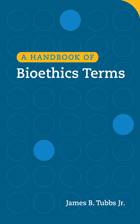 A Handbook of Bioethics Terms
James B. Tubbs Jr.
Georgetown University Press, 2009 The term bioethics was first used in the early 1970s by biologists who were concerned about ethical implications of genetic and ecological interventions, but was soon applied to all aspects of biomedical ethics, including health care delivery, research, and public policy. Its literature draws from disciplines as varied as clinical medicine and nursing, scientific research, theology and philosophy, law, and the social sciences—each with its own distinctive vocabulary and expressions. A Handbook of Bioethics Terms is a handy and concise glossary-style reference featuring over 400 entries on the significant terms, expressions, titles, and court cases that are most important to the field. Most entries are cross-referenced, making this handbook a valuable addition to the bookshelves of undergraduate and graduate students in health care ethics, physicians and nurses, members of institutional ethics committees and review boards, and others interested in bioethics. A sampling of terms from the handbook:
Abortion
DNR (Do Not Resuscitate)
Eugenics
Gene therapy
Living will
Natural law
Primum non nocere
Single-payer system
Surrogate consent
Schiavo case
Sample Definitions: Formalism: In ethical theory, a type of deontology in which an action is judged to be right if it is in accord with a moral rule, and wrong if it violates a moral rule. Xenograft: Organ or tissue transplanted from one individual to another individual of another species. (See Transplantation, organ and tissue)
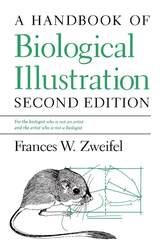 A Handbook of Biological Illustration
Frances W. Zweifel
University of Chicago Press, 1988 Visual presentation is more important than ever, and this compact, accessible guide will help the biologist who is not an artist and the artistwho is not a biologist
This book is designed to help biologists who must create their own illustrations and artists who are confronted with unfamiliar biological subjects. The author, an experienced biological illustrator, gives practical instructions and advice on the consideration of size and of printing processes, choice of materials, methods for saving time and labor, drawing techniques, lettering methods, and mounting and packing the finished illustrations. She explains how to produce clear and attractive charts, graphs, and maps, so essential to science publications. Though this primer does not cover photographic techniques, it does include advice on retouching, cropping, and mounting photographs and on using photographs of biological subjects as aids in drawing. This second edition is updated to reflect the many technological changes in art materials and printing processes that have occurred since the book's first publication, and it includes an entirely new chapter on planning, designing, and mounting the poster presentations that have become an essential part of conferences held by scientific societies. Also included are the requirements and conventions peculiar to biological illustration and a bibliography of useful reference works.
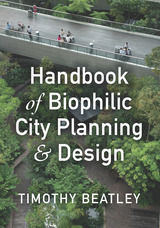 Handbook of Biophilic City Planning & Design
Timothy Beatley
Island Press, 2016 What if, even in the heart of a densely developed city, people could have meaningful encounters with nature? While parks, street trees, and green roofs are increasingly appreciated for their technical services like stormwater reduction, from a biophilic viewpoint, they also facilitate experiences that contribute to better physical and mental health: natural elements in play areas can lessen children's symptoms of ADHD, and adults who exercise in natural spaces can experience greater reductions in anxiety and blood pressure.
The Handbook of Biophilic City Planning & Design offers practical advice and inspiration for ensuring that nature in the city is more than infrastructure—that it also promotes well-being and creates an emotional connection to the earth among urban residents. Divided into six parts, the Handbook begins by introducing key ideas, literature, and theory about biophilic urbanism. Chapters highlight urban biophilic innovations in more than a dozen global cities. The final part concludes with lessons on how to advance an agenda for urban biophilia and an extensive list of resources.
As the most comprehensive reference on the emerging field of biophilic urbanism, the Handbook is essential reading for students and practitioners looking to place nature at the core of their planning and design ideas and encourage what preeminent biologist E.O. Wilson described as "the innate emotional connection of humans to all living things."
Handbook of Catholic Social Teaching: A Guide for Christians in the World Today
Martin Schlag
Catholic University of America Press, 2017 Handbook of Catholic Social Teaching employs a question and answer format, to better accentuate the response of the Church's message to the questions Catholics have about their social role and what the Church intends to teach about it. Written in consultation with the Pontifical Council for Justice and Peace, the Handbook should take its place alongside the Catechism of the Social Doctrine of the Church on the shelf of informed Catholics as works that can inform what we believe and do in the public sphere.
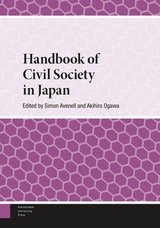 Handbook of Civil Society in Japan
Simon Avenell
Amsterdam University Press, 2025 Civil society in Japan is a large and multifaceted sphere with a diversity of actors pursuing various social, political, and economic objectives. The sphere has experienced major waves of transformation in the post-1945 era, especially in the 1990s when volunteering and nonprofit activities came to the forefront of political and popular attention. This handbook brings together twenty-one leading experts to provide comprehensive and up-to-date analyses of civil society in Japan. What is the history of Japanese civil society and how has it evolved in recent decades? Who have been the key participants and what are their objectives? How have international actors and conditions influenced civil society in Japan? More broadly, what do recent developments in Japanese civil society tell us about the condition of democracy, state-society relations, and the public sphere in the country? And how might Japanese civil society develop into the future? The contributions to the handbook offer innovative perspectives based on the most-recent fieldwork and data available. The handbook is divided into three sections: Institutions, Justice and Transnationalism. Topics include nonprofit organizations, volunteering, philanthropy, new media, gender, pacifism, nuclear power, territorial politics, international cooperation and transnational solidarity. The volume will be valuable for scholars in both research and teaching as well as essential reading for anyone wanting to understand the diversity and vibrancy of Japanese civil society today.
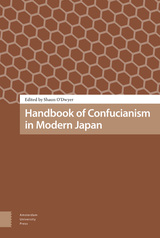 Handbook of Confucianism in Modern Japan
MHM Limited, Tokyo O'Dwyer
Amsterdam University Press, 2022 In mainstream assessments of Confucianism’s modern genealogy there is a Sinocentric bias which is, in part, the result of a general neglect of modern Japanese Confucianism by political and moral philosophers and intellectual historians during the post-war era. This collection of essays joins a small group of other studies bringing modern Japanese Confucianism to international scholarly notice, largely covering the time period between the Bakumatsu era of the mid-19th century and the 21st century.
The essays in this volume can be read for the insight they provide into the intellectual and ideological proclivities of reformers, educators and philosophers explicitly reconstructing Confucian thought, or more tacitly influenced by it, during critical phases in Japan’s modernization, imperialist expansionism and post-1945 reconstitution as a liberal democratic polity. They can be read as introductions to the ideas of modern Japanese Confucian thinkers and reformers whose work is little known outside Japan—and sometimes barely remembered inside Japan. They can also be read as a needful corrective to the above-mentioned Sinocentric bias in the 20th century intellectual history of Confucianism. For those Confucian scholars currently exploring how Confucianism is, or can be made compatible with democracy, at least some of the studies in this volume serve as a warning. They enjoin readers to consider how Confucianism was also rendered compatible with the authoritarian ultranationalism and militarism that captured Japan’s political system in the 1930s, and brought war to the Asia-Pacific region.
Handbook of Cybersecurity for e-Health
Bill Buchanan
The Institution of Engineering and Technology, 2025 In this title, a team of top experts address cyber security for e-Health technologies and systems. It examines the need for better security and privacy infrastructure, outlining methods and policies for working with sensitive data. The authors focus on the latest methods and visionary work within health and social care for cyber security, making it vital reading for professionals and researchers in healthcare technologies and security, professionals in public health and law, healthcare policy developers and government decision makers.
The Handbook of Electrical Resistivity: New materials and pressure effects
Gordon Dyos
The Institution of Engineering and Technology, 2012 This book updates and expands the editor's acclaimed Electrical Resistivity Handbook, bringing together advances in the field over the last two decades. In this period, much has been achieved in the fields of new materials and superconductivity.
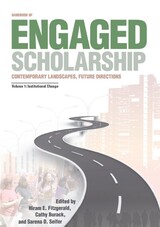 Handbook of Engaged Scholarship: Contemporary Landscapes, Future Directions: Volume 1: Institutional Change
Hiram E. Fitzgerald
Michigan State University Press, 2010 In the preface to the Handbook of Engaged Scholarship, Hiram Fitzgerald observes that the Kellogg Commission's challenge to higher education to engage with communities was a significant catalyst for action. At Michigan State University, the response was the development of "engaged scholarship," a distinctive, scholarly approach to campus-community partnerships.
Engaged scholars recognize that community based scholarship is founded on an underpinning of mutual respect and recognition that community knowledge is valid and that sustainability is an integral part of the partnership agenda.
In this two-volume collection, contributors capture the rich diversity of institutions and partnerships that characterize the contemporary landscape and the future of engaged scholarship. Volume One addresses such issues as the application of engaged scholarship across types of colleges and universities and the current state of the movement. Volume Two contains essays on such topics as current typologies, measuring effectiveness and accreditation, community-campus partnership development, national organizational models, and the future landscape.
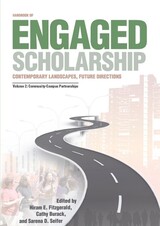 Handbook of Engaged Scholarship: Contemporary Landscapes, Future Directions: Volume 2: Community-Campus Partnerships
Hiram E. Fitzgerald
Michigan State University Press, 2010 In the preface to the Handbook of Engaged Scholarship, Hiram Fitzgerald observes that the Kellogg Commission's challenge to higher education to engage with communities was a significant catalyst for action. At Michigan State University, the response was the development of "engaged scholarship," a distinctive, scholarly approach to campus-community partnerships.
Engaged scholars recognize that community based scholarship is founded on an underpinning of mutual respect and recognition that community knowledge is valid and that sustainability is an integral part of the partnership agenda.
In this two-volume collection, contributors capture the rich diversity of institutions and partnerships that characterize the contemporary landscape and the future of engaged scholarship. Volume One addresses such issues as the application of engaged scholarship across types of colleges and universities and the current state of the movement. Volume Two contains essays on such topics as current typologies, measuring effectiveness and accreditation, community-campus partnership development, national organizational models, and the future landscape.
Handbook of Environmental History in Japan
MHM Limited Tatsushi
Amsterdam University Press, 2023 Japan: a land plagued by volcanoes, earthquakes and typhoons, yet blessed with a climate suitable for all manner of agriculture and forestry, and positioned where ocean currents collide and bring an abundance of the ocean’s resources to its people; a country which moved quickly from an agrarian pre-industrial society to become one of the world’s great economic powerhouses in only a few decades, spoiling water, air and land in the process, bringing misery to many of its people; a country with expansionist desires, colonizing neighboring lands, leading to war, defeat, destruction and, for the first time in history, nuclear devastation and its aftermath; a land and its people which share a remarkable resilience and ability to evaluate and correct their mistakes and renew their trajectory towards a better future.
The sixteen chapters of the Handbook of Environmental History in Japan
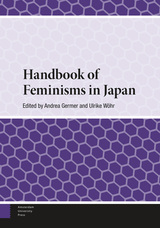 Handbook of Feminisms in Japan
Andrea Germer
Amsterdam University Press, 2025 The Handbook of Feminisms in Japan seeks to give a broad and, even without prior knowledge of Japan, easily accessible introduction to a range of feminisms in this non-Western context. With a useful comparative framework, it aims to advance transnational and international perspectives on feminisms around the world. It identifies discourses, theoretical positions and areas of feminist activity or intervention that readily correspond with those of feminisms in other countries, presenting chapters on topics such as radical feminism, maternalism, anarchism, literature, religion and pornography, but it also includes entries on specific historical and socio-cultural configurations, such as Japan’s women’s liberation movement, Uman Ribu. Building on a growing body of erudite scholarship in Japanese, English and other languages, each chapter succinctly traces historical developments of particular discourses or movements and situates them in the local political and societal context while also making reference to the wider Asian and global contexts. The authors identify the central actors and discuss the theoretical implications and political dimensions of particular feminisms or aspects of feminism in Japan. The discussion in each chapter is based on relevant primary and secondary sources, thus introducing the reader to material for further reading and research.
Handbook of French Semantics
Edited by Francis Corblin and Henriëtte de Swart
CSLI, 2003 This book focuses on the semantic particularities of the French language, covering five empirical themes: determiners, adverbs, tense and aspect, negation, and information structure. The specialists contributing here—including general linguists in France and French linguists in the Netherlands—take formal approaches to semantics and its interface with syntax and pragmatics, highlighting meaning in its relation to both structure and use. Their results should be of particular interest to French and Romance linguists who want to study French from a formal semantic perspective and to general linguists who are interested in cross-linguistic semantics.
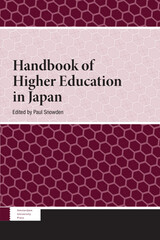 Handbook of Higher Education in Japan
Paul Snowden
Amsterdam University Press, 2021 Just as higher education (HE) in Europe had its beginnings in religious training for the priesthood, HE in feudal Japan, too, provided instruction for a religious life. But while the evolution to secular instruction was gradual in Europe, in Japan it came with a big bang: the "opening" of the country and consequent Westernization and all that that involved in the mid-19th century.
This first volume in the new Japan Documents Handbook series tells the story in 25 chapters of how Japan’s HE system has become what it is now, ending with a very tentative glimpse into the rest of the 21st century. A variety of themes are covered by scholars: chapters that concentrate on governance look at the distinction between "national," "public," and "private" institutions; others consider important topics such as internationalization, student recruitment, and faculty mobility. More innovative topics include "Women of Color Leading in Japanese Higher Education." All provide copious references to other authorities, but rather than just toe the conventional line they include opinions and proposals that may be contentious or even revolutionary. The editor provides an overview of the subject and its treatment in an Introduction.
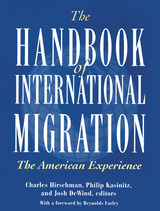 The Handbook of International Migration: The American Experience
Charles Hirschman
Russell Sage Foundation, 1999 The historic rise in international migration over the past thirty years has brought a tide of new immigrants to the United States from Asia, South America, and other parts of the globe. Their arrival has reverberated throughout American society, prompting an outpouring of scholarship on the causes and consequences of the new migrations. The Handbook of International Migration gathers the best of this scholarship in one volume to present a comprehensive overview of the state of immigration research in this country, bringing coherence and fresh insight to this fast growing field. The contributors to The Handbook of International Migration—a virtual who's who of immigration scholars—draw upon the best social science theory and demographic research to examine the effects and implications of immigration in the United States. The dramatic shift in the national background of today's immigrants away from primarily European roots has led many researchers to rethink traditional theories of assimilation,and has called into question the usefulness of making historical comparisons between today's immigrants and those of previous generations. Part I of the Handbook examines current theories of international migration, including the forces that motivate people to migrate, often at great financial and personal cost. Part II focuses on how immigrants are changed after their arrival, addressing such issues as adaptation, assimilation, pluralism, and socioeconomic mobility. Finally, Part III looks at the social, economic, and political effects of the surge of new immigrants on American society. Here the Handbook explores how the complex politics of immigration have become intertwined with economic perceptions and realities, racial and ethnic divisions,and international relations. A landmark compendium of richly nuanced investigations, The Handbook of International Migration will be the major reference work on recent immigration to this country and will enhance the development of a truly interdisciplinary field of international migration studies.
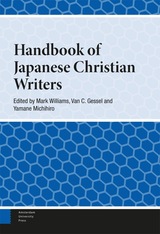 Handbook of Japanese Christian Writers
Mark Williams
Amsterdam University Press, 2023 Although a century and a half of Christian proselytizing has only led to the conversion of about one percent of the Japanese population, the proportion of writers who have either been baptized or significantly influenced in their work by Christian teachings is much higher. The seventeen authors examined in this volume have all employed themes and imagery in their writings influenced by Christian teachings. Those writing between the 1880s and the start of World War II were largely drawn to the Protestant emphasis on individual freedom, though many of them eventually rejected sectarian affiliation. Since 1945, on the other hand, Catholicism has produced a number of religiously committed authors, led by figures such as Endo Shusaku, the most popular and influential Christian writer in Japan to date. The authors discussed in these essays have contributed in a variety of ways to the indigenization of the imported religion.
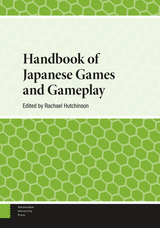 Handbook of Japanese Games and Gameplay
Rachael Hutchinson
Amsterdam University Press, 2025 The Handbook of Japanese Games and Gameplay showcases the rich variety of games in Japan, placing them in the context of industry, development processes, and a broader media ecology. We trace Japanese games through history, including card games, board games, pachinko and digital games, as well as how games are connected to toys and animation, and how analog and mechanical games connect to the virtual world. Analyzing some of the largest and most successful games ever published, including Final Fantasy, Nobunaga’s Ambition, Virtua Fighter, Resident Evil and Animal Crossing, we see how different audiences have interpreted them around the globe. We follow players from the living room to the arcade, into online spaces, escape rooms and themed cafés to see where gameplay happens. Entering the offices of some of the world’s leading videogame development corporations, readers can follow the production process from initial design and development decisions through localization, adaptation to different hardware systems, marketing and distribution. Comparing the Japanese game industry to its overseas counterparts, we examine its labor practices and legal obstacles to innovation in areas like esports. Niche markets and indie games are also considered, as vital spaces for expression outside the mainstream. Overall, the Handbook of Japanese Games and Gameplay offers the reader an exciting glimpse into Japanese games from a wide variety of perspectives.
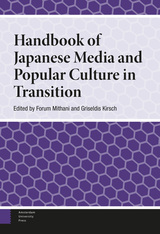 Handbook of Japanese Media and Popular Culture in Transition
Forum Mithani
Amsterdam University Press, 2022 The Handbook of Japanese Media and Popular Culture in Transition brings together new research and perspectives on popular media phenomena, as well as shining a spotlight on texts that are less well known or studied. Organized into five thematic sections, the chapters span a diverse range of cultural genres, including contemporary film and television, postwar cinema, advertising, popular fiction, men’s magazines, manga and anime, karaoke and digital media. They address issues critical to contemporary Japanese society: the politicization of history, authenticity and representation, constructions of identity, trauma and social disaffection, intersectionality and trans/nationalism. Drawing on methods and approaches from a range of disciplines, the chapters make explicit the interconnections between these areas of research and map out possible trajectories for future inquiry. As such, the handbook will be of value to both novice scholars and seasoned researchers, working within and/or beyond the Japanese media studies remit.
 Handbook of Japanese Public Administration and Bureaucracy
Mieko Nakabayashi
Amsterdam University Press, 2024 This Handbook focuses on Japan’s public administration and bureaucracy at its national level, and the effects of national politics on administrative decision-making and outcomes. It also provides in-depth analysis and description of the Japanese politics–civil service relationship. As the Japanese government is relatively centralized, an understanding of its national-level public administration is vital to comprehending the nature of Japanese bureaucracy.
This handbook is divided into four parts: the history of Japanese bureaucracy; the bureaucratic system and underlining laws, rules, and regulations; the relationship between politics and the legislative process; and bureaucracy in practice in the 12 major ministries. It will make an important contribution to studies on politics and governance in Japan, and will become essential reading for scholars in both their research and teaching.
 Handbook of Japanese Security
Leszek Buszynski
Amsterdam University Press, 2024 Japan has risen in stature to become an important player not only in the Western Pacific, but the wider Indo-Pacific. From a defeated nation that adopted a pacifist constitution and demilitarization, Japan has been provoked by unwelcomed external events to ensure its security. It has faced a challenging security environment and specific threats that have transformed its domestic politics and given rise to debates about the relevance of its pacifist constitution. North Korea’s nuclear and missile tests, and China’s pressure in the maritime Southwest and the South China Sea, as well as its belligerence over Taiwan, have raised Japanese fears of instability and conflict. Russia’s invasion of Ukraine has alarmed Japan that China would similarly resort to force. This present volume includes chapters by experts, Japanese as well as non-Japanese, who examine these issues and how Japan responds to a more threatening security environment while managing its domestic politics. They discuss the debate about the pacifist constitution, the alliance with the US, Japan’s Quad partners, India and Australia and how Japan moves to maintain and protect a free and open regional and international order from which it has benefited.
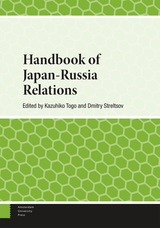 Handbook of Japan-Russia Relations
Kazuhiko Togo
Amsterdam University Press, 2024 The history of official relations between Russia and Japan encompasses a period of a little more than one hundred and fifty years, but stretch back unofficially for at least double that amount of time. But for both Russia and Japan, these relations have never been a key element of foreign policy, indispensable or intrinsically important for their diplomatic strategy. It is also noteworthy that for most of this time Russia and Japan were enemies, rivals, competitors. For both parties the significance of bilateral relations to a large extent was determined by their geographical proximity. This geographically predestined relationship can be characterized as “distant neighbors.” At the same time, at certain historical stages, this neighborhood was not so "distant." The countries managed to establish relations in the economic sphere, while tourism, cultural, scientific and educational ties were actively developing. The complexity of the relations which developed for just over three centuries is worthy of study. This book analyzes these three centuries of Japan-Russia relations so as not to miss out any essential factors of the relationship.
 Handbook of Japan’s Environmental Law, Policy and Politics
Hiroshi Ohta
Amsterdam University Press, 2025 This handbook offers an exposition of the contemporary status of Japan’s environmental law, policy, and politics. The compass of ecological quandaries explored within this tome is expansive, encompassing issues pertinent to both natural and synthetic ecosystems, natural resources, and inorganic materials. Each chapter’s temporal framework corresponds to the postwar period, following the enactment of environmental statutes and the initiation of administrative institutionalization, situated approximately in the early 1970s. The central inquiry addressed in this compendium pertains to the extent to which prevailing environmental statutes and policies have contributed to the enhancement or conservation of Japan’s natural and synthetic ecosystems, as well as the resilience of its natural resources. The authors within this volume undertake an analysis to discern the causal factors behind the quandaries by ascribing them to the existence or absence of enforceable regulations, public involvement in policy formulation processes, bureaucratic fragmentation, pioneering regulatory measures, institutional obstacles, regulatory co-optation, rational cost-effective methodologies, scientific understanding, scientific communities, ecological commerce, environmental non-governmental organizations (NGOs), and holistic ecological plans and programs. Moreover, pertinent sections raise an inquiry concerning Japan’s ecological diplomacy, inquiring whether Japan serves as a leader, bystander, or obstructionist.
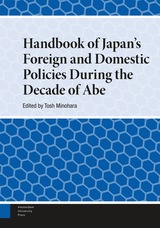 Handbook of Japan's Foreign and Domestic Policies During the Decade of Abe
Tosh Minohara
Amsterdam University Press, 2025 No Japanese leader has dominated Japan’s recent political landscape more than the late Abe Shinzo. With the this as the basic premise, the main objective of this compiled volume is to examine and assess Japan’s foreign and domestic polices during the 2010s, a decade which largely overlaps with Abe’s tenure as prime minister. This book is much more than a mere study of Abe’s leadership, however, as it ventures far beyond the traditional scope of diplomatic and political history by incorporating a multidisciplinary approach. As such, the contributors comprise not only historians and political scientists, but also sociologists, economists, legal experts, journalists, and practitioners of diplomacy. This diversity in backgrounds makes it possible to examine a much wider range of topics and themes that clearly illuminate the multitude of challenges that Japan faced in the decade as well as how it responded to those challenges, leading to a more thorough understanding of the path that Japan took in the 2010s.
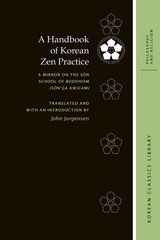 A Handbook of Korean Zen Practice: A Mirror on the Sŏn School of Buddhism (Sŏn’ga kwigam)
Translated by John Jorgensen
University of Hawaii Press, 2015 Sŏn (Japanese Zen) has been the dominant form of Buddhism in Korea from medieval times to the present. A Handbook of Korean Zen Practice: A Mirror on the Sŏn School of Buddhism (Sŏn’ga kwigam) was the most popular guide for Sŏn practice and life ever published in Korea and helped restore Buddhism to popularity after its lowest point in Korean history. It was compiled before 1569 by Sŏsan Hyujŏng (1520–1604), later famed as the leader of a monk army that helped defend Korea against a massive Japanese invasion in 1592. In addition to succinct quotations from sutras, the text also contained quotations from selected Chinese and Korean works together with Hyujŏng’s explanations. Because of its brevity and organization, the work proved popular and was reprinted many times in Korea and Japan before 1909. A Handbook of Korean Zen Practice commences with the ineffability of the enlightened state, and after a tour through doctrine and practice it returns to its starting point. The doctrinal rationale for practice that leads to enlightenment is based on the Mahayana Awakening of Faith, but the practice Hyujŏng enjoins readers to undertake is very different: a method of meditation derived from the kongan (Japanese koan) called hwadu (Chinese huatou), or “point of the story,” the story being the kongan. Hyujŏng goes on to outline the specifics of practice, such as rules of conduct and chanting and mindfulness of the Buddha, and stresses the requirements for living the life of a monk. At the end of the text he returns to the hwadu, the need for a teacher, and hence the importance of lineage. The version of the text translated here is the earliest and the longest extant. It was “translated” into Korean from Chinese by one of Hyujŏng’s students to aid Korean readers. The present volume contains a brief history of hwadu practice and theory, a life of Hyujŏng, and a summary of the text, plus a detailed, annotated translation. It should be of interest to practitioners of meditation and students of East Asian Buddhism and Korean history.
 Handbook of Latin American Studies, Vol. 73: Social Sciences
Katherine D. McCann, Humanities Editor; Tracy North, Social Sciences Editor
University of Texas Press, 2019 "The one source that sets reference collections on Latin American studies apart from all other geographic areas of the world. . . . The Handbook has provided scholars interested in Latin America with a bibliographical source of a quality unavailable to scholars in most other branches of area studies." —Latin American Research Review Beginning with Number 41 (1979), the University of Texas Press became the publisher of the most comprehensive annual bibliography in the field. Compiled by the Hispanic Division of the Library of Congress and annotated by a corps of more than 140 specialists in various disciplines, the Handbook alternates from year to year between social sciences and humanities. The Handbook annotates works on Mexico, Central America, the Caribbean and the Guianas, Spanish South America, and Brazil, as well as materials covering Latin America as a whole. Most of the subsections are preceded by introductory essays that serve as biannual evaluations of the literature and research under way in specialized areas.
Handbook of Latin American Studies, Vol. 75: Social Sciences
Katherine D. McCann
University of Texas Press, 2021 Beginning with Number 41 (1979), the University of Texas Press became the publisher of the most comprehensive annual bibliography in the field. Compiled by the Hispanic Division of the Library of Congress and annotated by a corps of more than 140 specialists in various disciplines, the Handbook alternates from year to year between social sciences and humanities. The Handbook annotates works on Mexico, Central America, the Caribbean and the Guianas, Spanish South America, and Brazil, as well as materials covering Latin America as a whole. Most of the subsections are preceded by introductory essays that serve as biannual evaluations of the literature and research under way in specialized areas.
Handbook of Latin American Studies, Vol. 76: Humanities
Katherine D. McCann, Volume Editor
University of Texas Press, 2023 Beginning with Number 41 (1979), the University of Texas Press became the publisher of the Handbook of Latin American Studies, the most comprehensive annual bibliography in the field. Compiled by the Hispanic Division of the Library of Congress and annotated by a corps of specialists in various disciplines, the Handbook alternates from year to year between social sciences and humanities. The Handbook annotates works on Mexico, Central America, the Caribbean and the Guianas, Spanish South America, and Brazil, as well as materials covering Latin America as a whole. Most of the subsections are preceded by introductory essays that serve as biannual evaluations of the literature and research underway in specialized areas.
Handbook of Latin American Studies, Vol. 77: Social Sciences
Katherine D. McCann
University of Texas Press, 2024 Beginning with Number 41 (1979), the University of Texas Press became the publisher of the most comprehensive annual bibliography in Latin American Studies. Compiled by the Hispanic Division of the Library of Congress and annotated by a corps of more than 140 specialists in various disciplines, the Handbook alternates from year to year between social sciences and humanities. The Handbook annotates works on Mexico, Central America, the Caribbean and the Guianas, Spanish South America, and Brazil, as well as materials covering Latin America as a whole. Most of the subsections are preceded by introductory essays that serve as biannual evaluations of the literature and research underway in specialized areas. Subject categories for the Social Sciences editions include anthropology; geography; government and politics; international relations; political economy; and sociology.
Handbook of Legislative Research
Gerhard Loewenberg
Harvard University Press, 1985 The Handbook of Legislative Research, a comprehensive summary of the results of research on nineteenth and twentieth-century legislatures, is itself a landmark in the evolution of legislative studies. Gathered here are surveys by leading scholars in the field, each providing inventory of an important subfield, an extensive bibliography, and a systematic assessment of what has been accomplished and what directions future research must take.
Handbook of Mathematical Models for Languages and Computation
Alexander Meduna
The Institution of Engineering and Technology, 2020 The theory of computation is used to address challenges arising in many computer science areas such as artificial intelligence, language processors, compiler writing, information and coding systems, programming language design, computer architecture and more. To grasp topics concerning this theory readers need to familiarize themselves with its computational and language models, based on concepts of discrete mathematics including sets, relations, functions, graphs and logic.
Handbook of Mechanical Wear: Wear, Frettage, Pitting, Cavitation, Corrosion
Edited by Charles Lipson and L.V. Colwell
University of Michigan Press, 1961 The quality of most metal products depends on the condition of their surfaces and on surface change caused by wear. This collection of papers by distinguished authorities examines many of the different processes (corrosion, abrasion, spalling, etc.) that result in wear, and it offers a wealth of material on such factors as material composition, environment, and history of the manufacturing operation. The papers are presented in six major groupings: Fundamental Aspects of Wear; Pitting, Scoring, and Spalling; Corrosion; Abrasion; Wear Resistance Materials; and Manufacturing Processes. Charles Lipson provides a final section that summarizes the findings of the seventeen papers.
Handbook of Medical Sociology, Sixth Edition
Chloe E. Bird
Vanderbilt University Press, 2010 Composed entirely of specially commissioned chapters by many outstanding scholars in medical sociology, this edition reflects important changes in the study of health and illness. In addition to updated and reconceived chapters on the impacts of gender, race, and inequality on health, this volume has new chapters on topics that include:
• social networks, neighborhoods, and social capital
• disability
• dying and "the right to die"
• health disparities
• the growing influence of the pharmaceutical industry
• the Internet
• evidence-based medicine and quality of care
• health social movements
• genetics
• religion, spirituality, and health
Handbook of Microstrip Antennas, Volume 1
J.R. James
The Institution of Engineering and Technology, 1989 This book presents a wide ranging coverage of principles, state-of-the-art design and up-to-date applications of microstrip antennas; Includes detailed explanations of a variety of analytical techniques from transmission line theory to moments methods and their applications to CAD; Covers the numerous patch designs and array configurations giving many examples of practical applications; Discusses microstrip technology in detail including substrates, processing and environmental aspects; Addresses measurement methods particular to printed antennas such as substrate and connector characterisation and near field probing; Application areas covered include antennas for satellite terrestrial and mobile communications, conformal and aerospace antennas, phased arrays, hyperthermia applicators and millimetric antennas.
Handbook of Microstrip Antennas, Volume 2
J.R. James
The Institution of Engineering and Technology, 1989 This book presents a wide ranging coverage of principles, state-of-the-art design and up-to-date applications of microstrip antennas; Includes detailed explanations of a variety of analytical techniques from transmission line theory to moments methods and their applications to CAD; Covers the numerous patch designs and array configurations giving many examples of practical applications; Discusses microstrip technology in detail including substrates, processing and environmental aspects; Addresses measurement methods particular to printed antennas such as substrate and connector characterisation and near field probing; Application areas covered include antennas for satellite terrestrial and mobile communications, conformal and aerospace antennas, phased arrays, hyperthermia applicators and millimetric antennas.
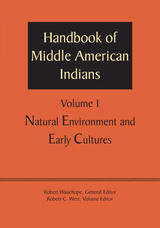 Handbook of Middle American Indians, Volume 1: Natural Environment and Early Cultures
Robert Wauchope, series editor; Robert C. West, volume editor
University of Texas Press, 1964 This is the first volume of the monumental Handbook of Middle American Indians, a definitive encyclopaedia of the environment, archaeology, ethnology, social anthropology, ethnohistory, linguistics, and physical anthropology of the native peoples of Mexico and Central America. The Handbook was published in cooperation with the Middle American Research Institute of Tulane University under the general editorship of Robert Wauchope (1909–1979). This volume of the Handbook was edited by Dr. Robert C. West (1913–2001), Boyd Professor of Geography at Louisiana State University, an outstanding authority on Latin America. He was formerly cultural geographer for the Smithsonian Institution. Included in this first volume are chapters written by leading authorities in various fields of the natural and social sciences that are concerned with the natural environment of Middle America, its role in the shaping of Indian cultures, the earliest primitive hunters of this area, the beginnings of agriculture, and the broad patterns of prehistoric civilizations there. There are articles on the geohistory and paleogeography of Middle America, its surface configuration and associated geology, hydrography, the American Mediterranean, oceanography and marine life along the Pacific coast, weather and climate, natural vegetation, the soils and their relation to the Indian peoples and cultures, fauna , the natural regions of Middle America, the primitive hunters, the food-gathering and incipient agricultural stage of prehistoric Middle America, origins of agriculture there, and the patterns of farming life and civilization. The Handbook of Middle American Indians was assembled and edited at the Middle American Research Institute of Tulane University with the assistance of grants from the National Science Foundation and under the sponsorship of the National Research Council Committee on Latin American Anthropology.
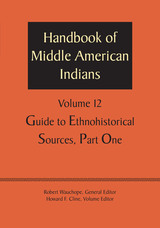 Handbook of Middle American Indians, Volume 12: Guide to Ethnohistorical Sources, Part One
Robert Wauchope, series editor; Howard F. Cline, volume editor
University of Texas Press, 1972 Guide to Ethnohistorical Sources comprises Volumes 12 through 15 of the Handbook of Middle American Indians, published in cooperation with the Middle American Research Institute of Tulane University under the general editorship of Robert Wauchope (1909–1979). The Guide has been assembled under the volume editorship of the late Howard F. Cline, Director of the Hispanic Foundation in the Library of Congress, with Charles Gibson, John B. Glass, and H. B. Nicholson as associate volume editors. It covers geography and ethnogeography, especially the Relaciones Geográficas (Volume 12); sources in the European tradition: printed collections, secular and religious chroniclers, biobibliographies (Volume 13); sources in the native tradition: prose and pictorial materials, checklist of repositories, title and synonymy index, and annotated bibliography on native sources (Volumes 14 and 15). Volume 12, which is Part One of the Guide, contains the following: “Introduction: Reflections on Ethnohistory,” “Introductory Notes on Territorial Divisions of Middle America,” “Viceroyalty to Republics, 1786–1952: Historical Notes on the Evolution of Middle American Political Units,” “Ethnohistorical Regions of Middle America,” “The Relaciones Geográficas of the Spanish Indies, 1577–1648,” “A Census of the Relaciones Geográficas of New Spain, 1579–1616,” and “The Relaciones Geográficas of Spain, New Spain, and the Spanish Indies: An Annotated Bibliography,” all the foregoing by Howard F. Cline. In addition it includes: “Colonial New Spain, 1519–1786: Historical Notes on the Evolution of Minor Political Jurisdictions” by Peter Gerhard; “The Pinturas (Maps) of the Relaciones Geográficas, with a Catalog” by Donald Robertson; “The Relaciones Geográficas, 1579–1586: Native Languages” by H. R. Harvey; and “The Relaciones Geográficas of Mexico and Central America, 1740–1792” by Robert C. West. The Handbook of Middle American Indians was assembled and edited at the Middle American Research Institute of Tulane University with the assistance of grants from the National Science Foundation and under the sponsorship of the National Research Council Committee on Latin American Anthropology.
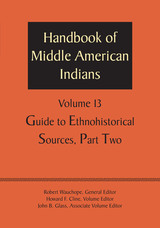 Handbook of Middle American Indians, Volume 13: Guide to Ethnohistorical Sources, Part Two
Robert Wauchope, series editor; Howard F. Cline, volume editor,; John B. Glass, assoc vol. ed.
University of Texas Press, 1973 Volume 13 of the Handbook of Middle American Indians, published in cooperation with the Middle American Research Institute of Tulane University under the general editorship of Robert Wauchope (1909–1979), constitutes Part 2 of the Guide to Ethnohistorical Sources. The Guide has been assembled under the volume editorship of the late Howard F. Cline, Director of the Hispanic Foundation in the Library of Congress, with Charles Gibson, John B. Glass, and H. B. Nicholson as associate volume editors. It covers geography and ethnogeography (Volume 12); sources in the European tradition (Volume 13); and sources in the native tradition (Volumes 14 and 15). The present volume contains the following studies on sources in the European tradition: - “Published Collections of Documents Relating
- to Middle American Ethnohistory,” by Charles Gibson
- “An Introductory Survey of Secular Writings in the European Tradition on Colonial Middle America, 1503–1818,” by J. Benedict Warren
- “Religious Chroniclers and Historians: A Summary with Annotated Bibliography,” by Ernest J.
- Burrus, S.J.
- “Bernardino de Sahagún,” by Luis Nicolau d’Olwer, Howard F. Cline, and H. B. Nicholson
- “Antonio de Herrera,” by Manuel Ballesteros Gaibrois
- “Juan de Torquemada,” by José Alcina Franch
- “Francisco Javier Clavigero,” by Charles E. Ronan, S.J.
- “Charles Etienne Brasseur de Bourbourg,” by Carroll Edward Mace
- “Hubert Howe Bancroft,” by Howard F. Cline
- “Eduard Georg Seler,” by H. B. Nicholson
- “Selected
Nineteenth-Century Mexican Writers on Ethnohistory,” by Howard F. Cline The Handbook of Middle American Indians was assembled and edited at the Middle American Research Institute of Tulane University with the assistance of grants from the National Science Foundation and under the sponsorship of the National Research Council Committee on Latin American Anthropology.
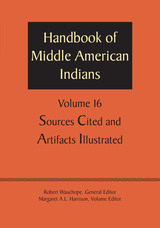 Handbook of Middle American Indians, Volume 16: Sources Cited and Artifacts Illustrated
Robert Wauchope, series editor; Margaret A.L. Harrison, volume editor
University of Texas Press, 1976 The publication of Volume 16 of this distinguished series brings to a close one of the largest research and documentation projects ever undertaken on the Middle American Indians. Since the publication of Volume 1 in 1964, the Handbook of Middle American Indians has provided the most complete information on every aspect of indigenous culture, including natural environment, archaeology, linguistics, social anthropology, physical anthropology, ethnology, and ethnohistory. Culminating this massive project is Volume 16, divided into two parts. Part I, Sources Cited, by Margaret A. L. Harrison, is a listing in alphabetical order of all the bibliographical entries cited in Volumes 1-11. (Volumes 12-15, comprising the Guide to Ethnohistorical Sources, have not been included, because they stand apart in subject matter and contain or constitute independent bibliographical material.) Part II, Location of Artifacts Illustrated, by Marjorie S. Zengel, details the location (at the time of original publication) of the owner of each pre-Columbian American artifact illustrated in Volumes 1-11 of the Handbook, as well as the size and the catalog, accession, and/or inventory number that the owner assigns to the object. The two parts of Volume 16 provide a convenient and useful reference to material found in the earlier volumes. The Handbook of Middle American Indians was assembled and edited at the Middle American Research Institute of Tulane University with the assistance of grants from the National Science Foundation and under the sponsorship of the National Research Council Committee on Latin American Anthropology.
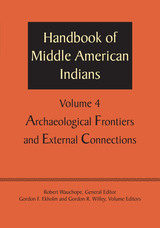 Handbook of Middle American Indians, Volume 4: Archaeological Frontiers and External Connections
Robert Wauchope, series editor; Gordon F. Ekholm and Gordon R. Willey, volume editors
University of Texas Press, 1966 Archaeological Frontiers and External Connections is the fourth volume in the Handbook of Middle American Indians, published in cooperation with the Middle American Research Institute of Tulane University under the general editorship of Robert Wauchope (1909–1979). Volume editors are Gordon R. Willey (1913–2002), Bowditch Professor of Mexican and Central American Archaeology and Ethnology at Harvard University, and Gordon F. Ekholm (1909–1987), Associate Curator of Mexican Archaeology of the American Museum of Natural History in New York. This volume presents an intensive study of matters of significance in various areas: archaeology and ethnohistory of the Northern Sierra, Sonora, Lower California, and northeastern Mexico; external relations between Mesoamerica and the southwestern United States and eastern United States; archaeology and ethnohistory of El Salvador, western Honduras, and lower Central America; external relations between Mesoamerica and the Caribbean area, Ecuador, and the Andes; and the case for and against Old World pre-Columbian contacts via the Pacific. Many photographs accompany the text. The Handbook of Middle American Indians was assembled and edited at the Middle American Research Institute of Tulane University with the assistance of grants from the National Science Foundation and under the sponsorship of the National Research Council Committee on Latin American Anthropology.
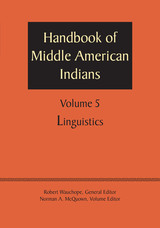 Handbook of Middle American Indians, Volume 5: Linguistics
Robert Wauchope, series editor; Norman A. McQuown, volume editor
University of Texas Press, 1967 This volume, the fifth in the Handbook of Middle American Indians, presents a summary of work accomplished since the Spanish conquest in the contemporary description and historical reconstruction of the indigenous languages and language families of Mexico and Central America. The essays include the following: “Inventory of Descriptive Materials” by William Bright; “Inventory of Classificatory Materials” by Maria Teresa Fernández de Miranda, “Lexicostatistic Classification” by Morris Swadesh, “Systemic Comparison and Reconstruction” by Robert Longacre, and “Environmental Correlational Studies” by Sarah C. Gudschinsky. Sketches of Classical Nahuatl by Stanley Newman, Classical Yucatec Maya by Norman A. McQuown, and Classical Quiché by Munro S. Edmonson provide working tools for tackling the voluminous early postconquest texts in these languages of late preconquest empires (Aztec, Maya, Quiché). Further sketches of Sierra Popoluca by Benjamin F. Elson, of Isthmus Zapotec by Velma B. Pickett, of Huautla de Jiménez Mazatec by Eunice V. Pike, of Jiliapan Pame by Leonardo Manrique C., and of Huamelultec Chontal by Viola Waterhouse—together with those of Nahuatl, Maya, and Quiché—provide not only descriptive outlines of as many different linguistic structures but also linguistic representatives of seven structurally different families of Middle American languages. Miguel Léon-Portilla presents an outline of the relations between language and the culture of which it is a part and provides examples of some of these relations as revealed by contemporary research in indigenous Middle America. The volume editor, Norman A. McQuown (1914–2005), was Professor of Anthropology at The University of Chicago. He formerly taught at Hunter College and served with the Mexican Department of Indian Affairs. He carried out fieldwork with Totonac, Huastec, Tzeltal-Tzotzil, Mame, and other tribes. The Handbook of Middle American Indians was assembled and edited at the Middle American Research Institute of Tulane University with the assistance of grants from the National Science Foundation and under the sponsorship of the National Research Council Committee on Latin American Anthropology.
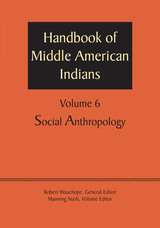 Handbook of Middle American Indians, Volume 6: Social Anthropology
Robert Wauchope, series editor; Manning Nash, volume editor
University of Texas Press, 1967 Social Anthropology is the sixth volume in the Handbook of Middle American Indians, published in cooperation with the Middle American Research Institute of Tulane University under the general editorship of Robert Wauchope (1909–1979). The volume editor is Manning Nash (1924–2001), Professor of Anthropology at the Center for Study of Economic Development and Cultural Change, University of Chicago. This volume provides a synthetic and comparative summary of native ethnography and ethnology of Mexico and Central America, written by authorities in a number of broad fields: the native population and its identification, agricultural systems and food patterns, economies, crafts, fine arts, kinship and family, compadrinazgo, local and territorial units, political and religious organizations, levels of communal relations, annual and fiesta cycles, sickness, folklore, religion, mythology, psychological orientations, ethnic relationships, and topics of especial modern significance such as acculturation, nationalization, directed change, urbanization and industrialization. The articles rely on the accumulated ethnography of the region, but instead of being essentially historical in treatment, they aim toward generalizations about the uniformities and varieties of culture, society, and personality found in Middle America. The collection is an invaluable reference work on Middle America and a provocative guide to scholars engaged in furthering understanding of humans and society. The Handbook of Middle American Indians was assembled and edited at the Middle American Research Institute of Tulane University with the assistance of grants from the National Science Foundation and under the sponsorship of the National Research Council Committee on Latin American Anthropology.
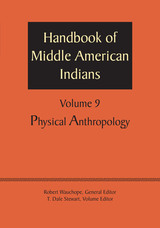 Handbook of Middle American Indians, Volume 9: Physical Anthropology
Robert Wauchope, series editor; T. Dale Stewart, volume editor
University of Texas Press, 1970 Physical Anthropology is the ninth volume in the Handbook of Middle American Indians, published in cooperation with the Middle American Research Institute of Tulane University under the general editorship of Robert Wauchope (1909–1979). The volume editor is T. Dale Stewart (1901–1997), senior physical anthropologist of the United States National Museum, Smithsonian Institution, former director of its Museum of Natural History, and a past president of the American Association of Physical Anthropologists. The articles in this volume, together with illustrations, tabular data, bibliographies, and index, constitute an invaluable reference work on the human biology of Middle America and its relationships to human society and culture. Contents include the following articles: - “History of Physical Anthropology,” by Juan Comas
- “Preceramic Human Remains,” by Arturo Romano
- “Anthropometry of Late Prehistoric Human Remains,” by Santiago Genovés T.
- “Dental Mutilation, Trephination, and Cranial Deformation,” by Javier Romero
- “Pre-Hispanic Osteopathology,” by Eusebio Dávalos Hurtado
- “Anthropometry of Living Indians,” by Johanna Faulhaber
- “Distribution of Blood Groups,” by G. Albin Matson
- “Physiological Studies,” by D. F. Roberts and Marshall T. Newman
- “Skin, Hair, and Eyes,” a series including “Introduction,” by T. D. Stewart; “Dermatoglyphics,” by Marshall T. Newman; “Hair,” by Mildred Trotter and Oliver H. Duggins; and “Color of Eyes and Skin,” by T. D.
- Stewart
- “Physical Plasticity and Adaptation,” by T. D. Stewart
- “Pathology of Living Indians as Seen in Guatemala,” by Nevin S. Scrimshaw and Carlos Tejada
- “Psychobiometry,” by Javier Romero
The Handbook of Middle American Indians was assembled and edited at the Middle American Research Institute of Tulane University with the assistance of grants from the National Science Foundation and under the sponsorship of the National Research Council Committee on Latin American Anthropology.
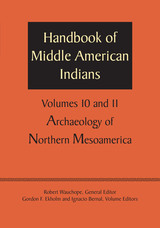 Handbook of Middle American Indians, Volumes 10 and 11: Archaeology of Northern Mesoamerica
Robert Wauchope, series editor; Gordon F. Ekholm and Ignacio Bernal, volume editors
University of Texas Press, 1971 Archaeology of Northern Mesoamerica comprises the tenth and eleventh volumes in the Handbook of Middle American Indians, published in cooperation with the Middle American Research Institute of Tulane University under the general editorship of Robert Wauchope (1909–1979). Volume editors of Archaeology of Northern Mesoamerica are Gordon F. Ekholm and Ignacio Bernal. Gordon F. Ekholm (1909–1987) was curator of anthropology at The American Museum of Natural History, New York, and a former president of the Society for American Archaeology. Ignacio Bernal (1910–1992), former director of the Instituto Nacional de Antropología e Historia, Mexico, was director of the Museo Nacional de Antropología in Mexico and also a past president of the Society for American Archaeology. Volumes 10 and 11 describe the pre-Aztec and Aztec cultures of Mexico, from central Veracruz and the Gulf Coast, through the Valley of Mexico, to western Mexico and the northern frontiers of these ancient American civilizations. The thirty-two articles, lavishly illustrated and accompanied by bibliography and index, were prepared by authorities on prehistoric settlement patterns, architecture, sculpture, mural painting, ceramics and minor arts and crafts, ancient writing and calendars, social and political organization, religion, philosophy, and literature. There are also special articles on the archaeology and ethnohistory of selected regions within northern Mesoamerica. The Handbook of Middle American Indians was assembled and edited at the Middle American Research Institute of Tulane University with the assistance of grants from the National Science Foundation and under the sponsorship of the National Research Council Committee on Latin American Anthropology.
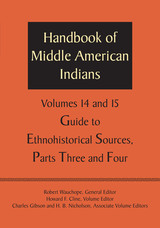 Handbook of Middle American Indians, Volumes 14 and 15: Guide to Ethnohistorical Sources, Parts Three and Four
Robert Wauchope, series editor; Howard F. Cline, volume editor; Charles Gibson and H. B. Nicholson, volume editors
University of Texas Press, 1975 Volumes 14 and 15 of the Handbook of Middle American Indians, published in cooperation with the Middle American Research Institute of Tulane University under the general editorship of Robert Wauchope (1909–1979), constitute Parts 3 and 4 of the Guide to Ethnohistorical Sources. The Guide has been assembled under the volume editorship of the late Howard F. Cline, Director of the Hispanic Foundation in the Library of Congress, with Charles Gibson, John B. Glass, and H. B. Nicholson as associate volume editors. It covers geography and ethnogeography (Volume 12); sources in the European tradition (Volume 13); and sources in the native tradition: prose and pictorial materials, checklist of repositories, title and synonymy index, and annotated bibliography on native sources (Volumes 14 and 15). The present volumes contain the following studies on sources in the native tradition: “A Survey of Native Middle American Pictorial Manuscripts,” by John B. Glass “A Census of Native Middle American Pictorial Manuscripts,” by John B. Glass in collaboration with Donald Robertson “Techialoyan Manuscripts and Paintings, with a Catalog,” by Donald Robertson “A Census of Middle American Testerian Manuscripts,” by John B. Glass “A Catalog of Falsified Middle American Pictorial Manuscripts,” by John B. Glass “Prose Sources in the Native Historical Tradition,” by Charles Gibson and John B. Glass “A Checklist of Institutional Holdings of Middle American Manuscripts in the Native Historical Tradition,” by John B. Glass “The Botutini Collection,” by John B. Glass “Middle American Ethnohistory: An Overview” by H. B. Nicholson The Handbook of Middle American Indians was assembled and edited at the Middle American Research Institute of Tulane University with the assistance of grants from the National Science Foundation and under the sponsorship of the National Research Council Committee on Latin American Anthropology.
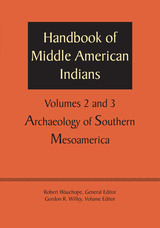 Handbook of Middle American Indians, Volumes 2 and 3: Archaeology of Southern Mesoamerica
Robert Wauchope, series editor; Gordon R. Willey, volume editor
University of Texas Press, 1965 Archaeology of Southern Mesoamerica comprises the second and third volumes in the Handbook of Middle American Indians, published in cooperation with the Middle American Research Institute of Tulane University under the general editorship of Robert Wauchope (1909–1979). The volume editor is Gordon R. Willey (1913–2002), Bowditch Professor of Mexican and Central American Archaeology and Ethnology at Harvard University. Volumes Two and Three, with more than 700 illustrations, contain archaeological syntheses, followed by special articles on settlement patterns, architecture, funerary practices, ceramics, artifacts, sculpture, painting, figurines, jades, textiles, minor arts, calendars, hieroglyphic writing, and native societies at the time of the Spanish conquest of the Guatemala highlands, the southern Maya lowlands, the Pacific coast of Guatemala, Chiapas, the upper Grijalva basin, southern Veracruz, Tabasco, and Oaxaca. The Handbook of Middle American Indians was assembled and edited at the Middle American Research Institute of Tulane University with the assistance of grants from the National Science Foundation and under the sponsorship of the National Research Council Committee on Latin American Anthropology.
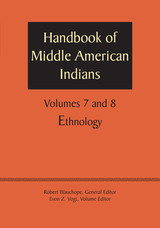 Handbook of Middle American Indians, Volumes 7 and 8: Ethnology
Robert Wauchope, series editor; Evon Z. Vogt, volume editor
University of Texas Press, 1975 Ethnology comprises the seventh and eighth volumes in the Handbook of Middle American Indians, published in cooperation with the Middle American Research Institute of Tulane University under the general editorship of Robert Wauchope (1909–1979). The editor of the Ethnology volumes is Evon Z. Vogt (1918–2004), Professor of Anthropology in the Department of Social Relations, Harvard University. These two books contain forty-three articles, all written by authorities in their field, on the ethnology of the Maya region, the southern Mexican highlands and adjacent regions, the central Mexican highlands, western Mexico, and northwest Mexico. Among the topics described for each group of Indians are the history of ethnological investigations, cultural and linguistic distributions, major postcontact events, population, subsistence systems and food patterns, settlement patterns, technology, economy, social organization, religion and world view, aesthetic and recreational patterns, life cycle and personality development, and annual cycle of life. The volumes are illustrated with photographs and drawings of contemporary and early historical scenes of native Indian life in Mexico and Central America. The Handbook of Middle American Indians was assembled and edited at the Middle American Research Institute of Tulane University with the assistance of grants from the National Science Foundation and under the sponsorship of the National Research Council Committee on Latin American Anthropology.
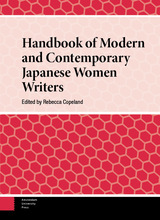 Handbook of Modern and Contemporary Japanese Women Writers
MHM Limited, Tokyo Copeland
Amsterdam University Press, 2023 The Handbook of Modern and Contemporary Japanese Women Writers offers a comprehensive overview of women writers in Japan, from the late 19th century to the early 21st. Featuring 24 newly written contributions from scholars in the field—representing expertise from North America, Europe, Japan, and Australia—the Handbook introduces and analyzes works by modern and contemporary women writers that coalesce loosely around common themes, tropes, and genres. Putting writers from different generations in conversation with one another reveals the diverse ways they have responded to similar subjects. Whereas women writers may have shared concerns—the pressure to conform to gendered expectation, the tension between family responsibility and individual interests, the quest for self-affirmation—each writer invents her own approach. As readers will see, we have writers who turn to memoir and autobiography, while others prefer to imagine fabulous fictional worlds. Some engage with the literary classics—whether Japanese, Chinese, or European—and invest their works with rich intertextual allusions. Other writers grapple with colonialism, militarism, nationalism, and industrialization. This Handbook builds a foundation which invites readers to launch their own investigations into women’s writing in Japan.
Handbook of Patristic Exegesis
Charles Kannengiesser
SBL Press, 2016 Now in paperback! This essential volume presents a balanced and cohesive picture of the Early Church. It gives an overall view of the reception, transmission, and interpretation of the Bible in the life and thought of the Church during the first five centuries of Christianity, the so-called patristic era. The handbook offers the context and presuppositions necessary for understanding the development of the interpretative traditions of the Early Church, in its catechesis, its liturgy and as a foundation of its systems of theology. The handbook presents a comprehensive overview of the history of patristic exegesis. Features: Paperback format of an essential Brill resource Essays by leading patristic scholars on the most important Church Fathers, such as Augustine, Irenaeus, Origen, and Gregory of Nyssa Comprehensive bibliography of editions and studies on patristic exegesis published from 1945 until 1995
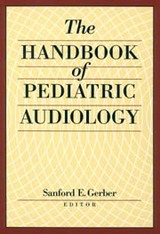 The Handbook of Pediatric Audiology
Sanford Gerber
Gallaudet University Press, 2000 The Handbook of Pediatric Audiology presents 14 comprehensive chapters written by the preeminent expert in each discipline. Clinicians and students now can refer to specific subjects in pediatric audiology for treating children from infancy through their elementary school years.
Practitioners will be able to rely upon this complete volume as they would a trusted consultant thoroughly knowledgeable about indications and treatments for every condition. The Handbook of Pediatric Audiology offers contributions by Yash Pal Kapur, Franklin A. Katz, Robert J. Ruben, Allan O. Diefendorf and Judith S. Gravel, Jane R. Madell, Shlomo Silman and Carol A. Silverman, and Herbert Jay Gold and Maurice Mendel. Judith A. Brimacombe and Anne L. Beiter present the latest clinical information on cochlear implants in children, including the current debate on cultural considerations. Audiology and education are discussed by E. Harris Nober, and George T. Mencher advises audiologists on counseling families of deaf and hard of hearing children. Evelyn Cherow presents several models of service delivery. These well-known authorities and the many others within make The Handbook of Pediatric Audiology an indispensable resource for clinicians and students alike.
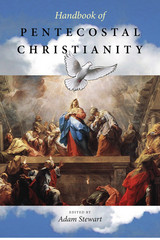 Handbook of Pentecostal Christianity
Edited by Adam Stewart
Northern Illinois University Press, 2012
Handbook of Pentecostal Christianity is an easy-to-read guide designed for those interested in learning about one of the fastest growing religious traditions in the world. Adam Stewart’s unique collection presents concise, yet comprehensive explanations of some of the most important terms and concepts needed to understand the origins and development, as well as the beliefs and practices, of Pentecostalism worldwide.
Twenty-four scholars from five continents provide entries, which are written from disciplinary perspectives as diverse as anthropology, biblical studies, black church studies, history, religious studies, sociology, and theology. The fifty entries shed light on such aspects as The Azusa Street Mission and Revival, Baptism of the Holy Spirit, exorcism, Godly Love, prophecy, snake handling, and the Word of Faith movement. Each entry also includes a brief list of references and suggestions for further reading.
These brief, engaging explanations on aspects of Pentecostalism can be read on their own, or alphabetically from start to finish. In its entirety, Stewart’s text provides the reader with an introduction to the history, theology, practices, and contemporary forms of Pentecostalism as it stands at the outset of the twenty-first century. Stewart’s handbook is an appealing introduction to Pentecostalism suitable for both students of religion and the curious general reader.
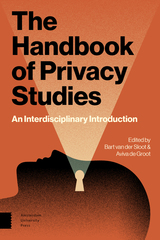 The Handbook of Privacy Studies: An Interdisciplinary Introduction
Bart van der Sloot
Amsterdam University Press, 2018 The Handbook of Privacy Studies is the first book in the world that brings together several disciplinary perspectives on privacy, such as the legal, ethical, medical, informatics and anthropological perspective.
Privacy is in the news almost every day: mass surveillance by intelligence agencies, the use of social media data for commercial profit and political microtargeting, password hacks and identity theft, new data protection regimes, questionable reuse of medical data, and concerns about how algorithms shape the way we think and decide. This book offers interdisciplinary background information about these developments and explains how to understand and properly evaluate them.
The book is set up for use in interdisciplinary educational programmes. Each chapter provides a structured analysis of the role of privacy within that discipline, its characteristics, themes and debates, as well as current challenges. Disciplinary approaches are presented in such a way that students and researchers from every scientific background can follow the argumentation and enrich their own understanding of privacy issues.
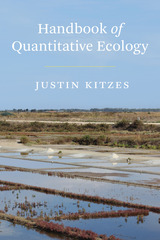 Handbook of Quantitative Ecology
Justin Kitzes
University of Chicago Press, 2022 An essential guide to quantitative research methods in ecology and conservation biology, accessible for even the most math-averse student or professional.
Quantitative research techniques have become increasingly important in ecology and conservation biology, but the sheer breadth of methods that must be understood—from population modeling and probabilistic thinking to modern statistics, simulation, and data science—and a lack of computational or mathematics training have hindered quantitative literacy in these fields. In this book, ecologist Justin Kitzes addresses those challenges for students and practicing scientists alike.
Requiring only basic algebra and the ability to use a spreadsheet, Handbook of Quantitative Ecology is designed to provide a practical, intuitive, and integrated introduction to widely used quantitative methods. Kitzes builds each chapter around a specific ecological problem and arrives, step by step, at a general principle through the process of solving that problem. Grouped into five broad categories—difference equations, probability, matrix models, likelihood statistics, and other numerical methods—the book introduces basic concepts, starting with exponential and logistic growth, and helps readers to understand the field’s more advanced subjects, such as bootstrapping, stochastic optimization, and cellular automata. Complete with online solutions to all numerical problems, Kitzes’s Handbook of Quantitative Ecology is an ideal coursebook for both undergraduate and graduate students of ecology, as well as a useful and necessary resource for mathematically out-of-practice scientists.
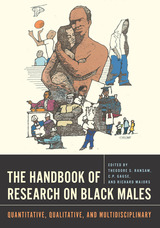 The Handbook of Research on Black Males: Quantitative, Qualitative, and Multidisciplinary
Theodore S. Ransaw
Michigan State University Press, 2018 Drawing from the work of top researchers in various fields, The Handbook of Research on Black Males explores the nuanced and multifaceted phenomena known as the black male. Simultaneously hyper-visible and invisible, black males around the globe are being investigated now more than ever before; however, many of the well-meaning responses regarding media attention paid to black males are not well informed by research. Additionally, not all black males are the same, and each of them have varying strengths and challenges, making one-size-fits-all perspectives unproductive. This text, which acts as a comprehensive tool that can serve as a resource to articulate and argue for policy change, suggest educational improvements, and advocate judicial reform, fills a large void. The contributors, from multidisciplinary backgrounds, focus on history, research trends, health, education, criminal and social justice, hip-hop, and programs and initiatives. This volume has the potential to influence the field of research on black males as well as improve lives for a population that is often the most celebrated in the media and simultaneously the least socially valued.
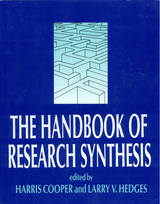 The Handbook of Research Synthesis
Harris Cooper
Russell Sage Foundation, 1994 "The Handbook is a comprehensive treatment of literature synthesis and provides practical advice for anyone deep in the throes of, just teetering on the brink of, or attempting to decipher a meta-analysis. Given the expanding application and importance of literature synthesis, understanding both its strengths and weaknesses is essential for its practitioners and consumers. This volume is a good beginning for those who wish to gain that understanding." —Chance "Meta-analysis, as the statistical analysis of a large collection of results from individual studies is called, has now achieved a status of respectability in medicine. This respectability, when combined with the slight hint of mystique that sometimes surrounds meta-analysis, ensures that results of studies that use it are treated with the respect they deserve….The Handbook of Research Synthesis is one of the most important publications in this subject both as a definitive reference book and a practical manual."—British Medical Journal The Handbook of Research Synthesis is the definitive reference and how-to manual for behavioral and medical scientists applying the craft of research synthesis. It draws upon twenty years of ground-breaking advances that have transformed the practice of synthesizing research literature from an art into a scientific process in its own right. Editors Harris Cooper and Larry V. Hedges have brought together leading authorities to guide the reader through every stage of the research synthesis process—problem formulation, literature search and evaluation, statistical integration, and report preparation. The Handbook of Research Synthesis incorporates in a single volume state-of-the-art techniques from all quantitative synthesis traditions, including Bayesian inference and the meta-analytic approaches. Distilling a vast technical literature and many informal sources, the Handbook provides a portfolio of the most effective solutions to problems of quantitative data integration. The Handbook of Research Synthesis also provides a rich treatment of the non-statistical aspects of research synthesis. Topics include searching the literature, managing reference databases and registries, and developing coding schemes. Those engaged in research synthesis will also find useful advice on how tables, graphs, and narration can be deployed to provide the most meaningful communication of the results of research synthesis. The Handbook of Research Synthesis is an illuminating compilation of practical instruction, theory, and problem solving. It provides an accumulation of knowledge about the craft of reviewing a scientific literature that can be found in no other single source. The Handbook offers the reader thorough instruction in the skills necessary to conduct powerful research syntheses meeting the highest standards of objectivity, systematicity, and rigor demanded of scientific enquiry. This definitive work will represent the state of the art in research synthesis for years to come.
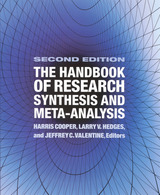 The Handbook of Research Synthesis and Meta-Analysis
Harris Cooper
Russell Sage Foundation, 2009 Praise for the first edition: "The Handbook is a comprehensive treatment of literature synthesis and provides practical advice for anyone deep in the throes of, just teetering on the brink of, or attempting to decipher a meta-analysis. Given the expanding application and importance of literature synthesis, understanding both its strengths and weaknesses is essential for its practitioners and consumers. This volume is a good beginning for those who wish to gain that understanding." —Chance "Meta-analysis, as the statistical analysis of a large collection of results from individual studies is called, has now achieved a status of respectability in medicine. This respectability, when combined with the slight hint of mystique that sometimes surrounds meta-analysis, ensures that results of studies that use it are treated with the respect they deserve….The Handbook of Research Synthesis is one of the most important publications in this subject both as a definitive reference book and a practical manual."—British Medical Journal When the first edition of The Handbook of Research Synthesis was published in 1994, it quickly became the definitive reference for researchers conducting meta-analyses of existing research in both the social and biological sciences. In this fully revised second edition, editors Harris Cooper, Larry Hedges, and Jeff Valentine present updated versions of the Handbook's classic chapters, as well as entirely new sections reporting on the most recent, cutting-edge developments in the field. Research synthesis is the practice of systematically distilling and integrating data from a variety of sources in order to draw more reliable conclusions about a given question or topic. The Handbook of Research Synthesis and Meta-Analysis draws upon years of groundbreaking advances that have transformed research synthesis from a narrative craft into an important scientific process in its own right. Cooper, Hedges, and Valentine have assembled leading authorities in the field to guide the reader through every stage of the research synthesis process—problem formulation, literature search and evaluation, statistical integration, and report preparation. The Handbook of Research Synthesis and Meta-Analysis incorporates state-of-the-art techniques from all quantitative synthesis traditions. Distilling a vast technical literature and many informal sources, the Handbook provides a portfolio of the most effective solutions to the problems of quantitative data integration. Among the statistical issues addressed by the authors are the synthesis of non-independent data sets, fixed and random effects methods, the performance of sensitivity analyses and model assessments, and the problem of missing data. The Handbook of Research Synthesis and Meta-Analysis also provides a rich treatment of the non-statistical aspects of research synthesis. Topics include searching the literature, and developing schemes for gathering information from study reports. Those engaged in research synthesis will also find useful advice on how tables, graphs, and narration can be used to provide the most meaningful communication of the results of research synthesis. In addition, the editors address the potentials and limitations of research synthesis, and its future directions. The past decade has been a period of enormous growth in the field of research synthesis. The second edition Handbook thoroughly revises original chapters to assure that the volume remains the most authoritative source of information for researchers undertaking meta-analysis today. In response to the increasing use of research synthesis in the formation of public policy, the second edition includes a new chapter on both the strengths and limitations of research synthesis in policy debates
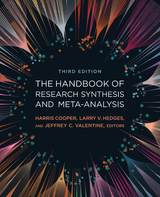 The Handbook of Research Synthesis and Meta-Analysis
Harris Cooper
Russell Sage Foundation, 2019 Research synthesis is the practice of systematically distilling and integrating data from many studies in order to draw more reliable conclusions about a given research issue. When the first edition of The Handbook of Research Synthesis and Meta-Analysis was published in 1994, it quickly became the definitive reference for conducting meta-analyses in both the social and behavioral sciences. In the third edition, editors Harris Cooper, Larry Hedges, and Jeff Valentine present updated versions of classic chapters and add new sections that evaluate cutting-edge developments in the field.
The Handbook of Research Synthesis and Meta-Analysis draws upon groundbreaking advances that have transformed research synthesis from a narrative craft into an important scientific process in its own right. The editors and leading scholars guide the reader through every stage of the research synthesis process—problem formulation, literature search and evaluation, statistical integration, and report preparation. The Handbook incorporates state-of-the-art techniques from all quantitative synthesis traditions and distills a vast literature to explain the most effective solutions to the problems of quantitative data integration. Among the statistical issues addressed are the synthesis of non-independent data sets, fixed and random effects methods, the performance of sensitivity analyses and model assessments, the development of machine-based abstract screening, the increased use of meta-regression and the problems of missing data. The Handbook also addresses the non-statistical aspects of research synthesis, including searching the literature and developing schemes for gathering information from study reports. Those engaged in research synthesis will find useful advice on how tables, graphs, and narration can foster communication of the results of research syntheses.
The third edition of the Handbook provides comprehensive instruction in the skills necessary to conduct research syntheses and represents the premier text on research synthesis.
Praise for the first edition: "The Handbook is a comprehensive treatment of literature synthesis and provides practical advice for anyone deep in the throes of, just teetering on the brink of, or attempting to decipher a meta-analysis. Given the expanding application and importance of literature synthesis, understanding both its strengths and weaknesses is essential for its practitioners and consumers. This volume is a good beginning for those who wish to gain that understanding." —Chance "Meta-analysis, as the statistical analysis of a large collection of results from individual studies is called, has now achieved a status of respectability in medicine. This respectability, when combined with the slight hint of mystique that sometimes surrounds meta-analysis, ensures that results of studies that use it are treated with the respect they deserve….The Handbook of Research Synthesis is one of the most important publications in this subject both as a definitive reference book and a practical manual."—British Medical Journal When the first edition of The Handbook of Research Synthesis was published in 1994, it quickly became the definitive reference for researchers conducting meta-analyses of existing research in both the social and biological sciences. In this fully revised second edition, editors Harris Cooper, Larry Hedges, and Jeff Valentine present updated versions of the Handbook's classic chapters, as well as entirely new sections reporting on the most recent, cutting-edge developments in the field. Research synthesis is the practice of systematically distilling and integrating data from a variety of sources in order to draw more reliable conclusions about a given question or topic. The Handbook of Research Synthesis and Meta-Analysis draws upon years of groundbreaking advances that have transformed research synthesis from a narrative craft into an important scientific process in its own right. Cooper, Hedges, and Valentine have assembled leading authorities in the field to guide the reader through every stage of the research synthesis process—problem formulation, literature search and evaluation, statistical integration, and report preparation. The Handbook of Research Synthesis and Meta-Analysis incorporates state-of-the-art techniques from all quantitative synthesis traditions. Distilling a vast technical literature and many informal sources, the Handbook provides a portfolio of the most effective solutions to the problems of quantitative data integration. Among the statistical issues addressed by the authors are the synthesis of non-independent data sets, fixed and random effects methods, the performance of sensitivity analyses and model assessments, and the problem of missing data. The Handbook of Research Synthesis and Meta-Analysis also provides a rich treatment of the non-statistical aspects of research synthesis. Topics include searching the literature, and developing schemes for gathering information from study reports. Those engaged in research synthesis will also find useful advice on how tables, graphs, and narration can be used to provide the most meaningful communication of the results of research synthesis. In addition, the editors address the potentials and limitations of research synthesis, and its future directions. The past decade has been a period of enormous growth in the field of research synthesis. The second edition Handbook thoroughly revises original chapters to assure that the volume remains the most authoritative source of information for researchers undertaking meta-analysis today. In response to the increasing use of research synthesis in the formation of public policy, the second edition includes a new chapter on both the strengths and limitations of research synthesis in policy debates
|
|
